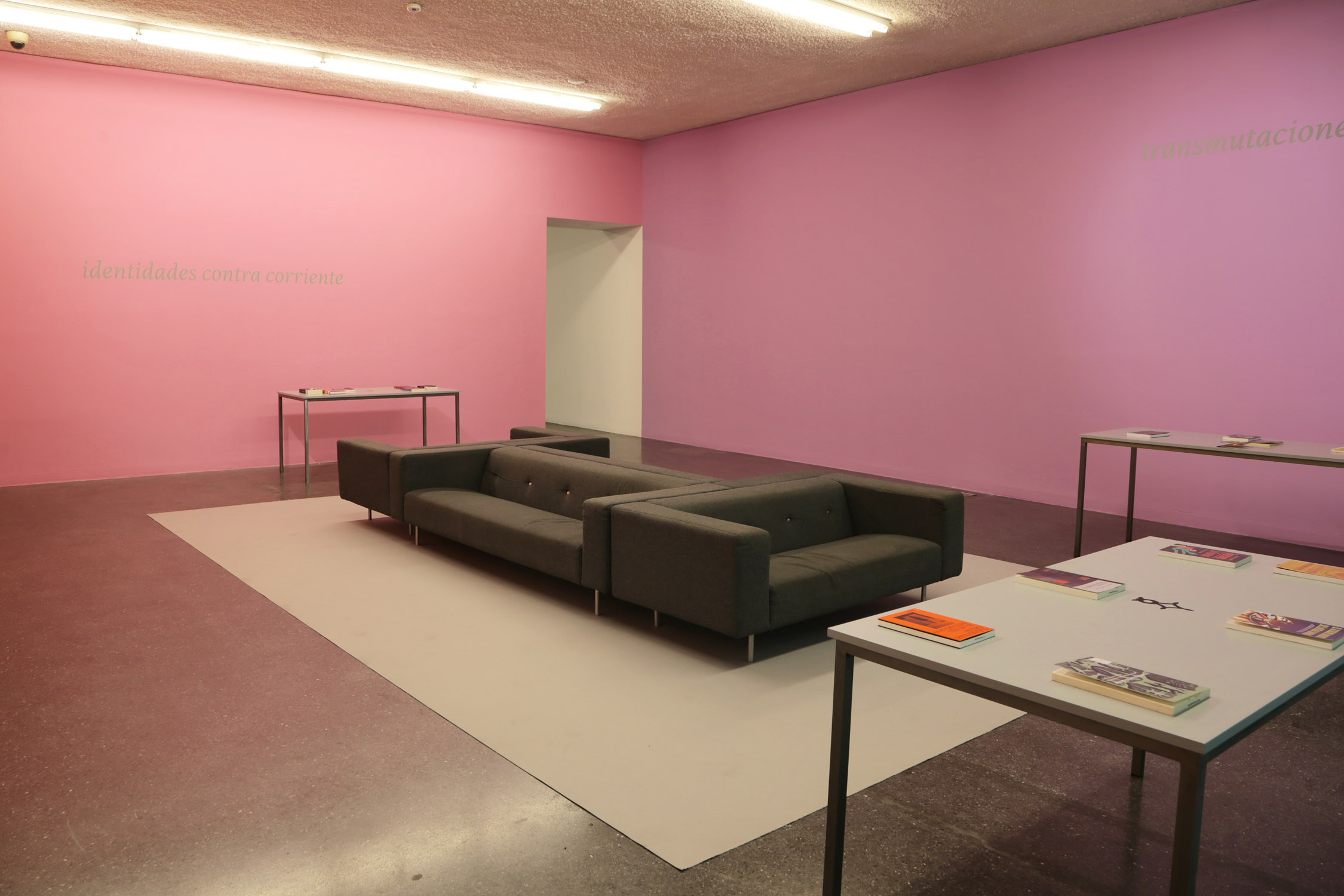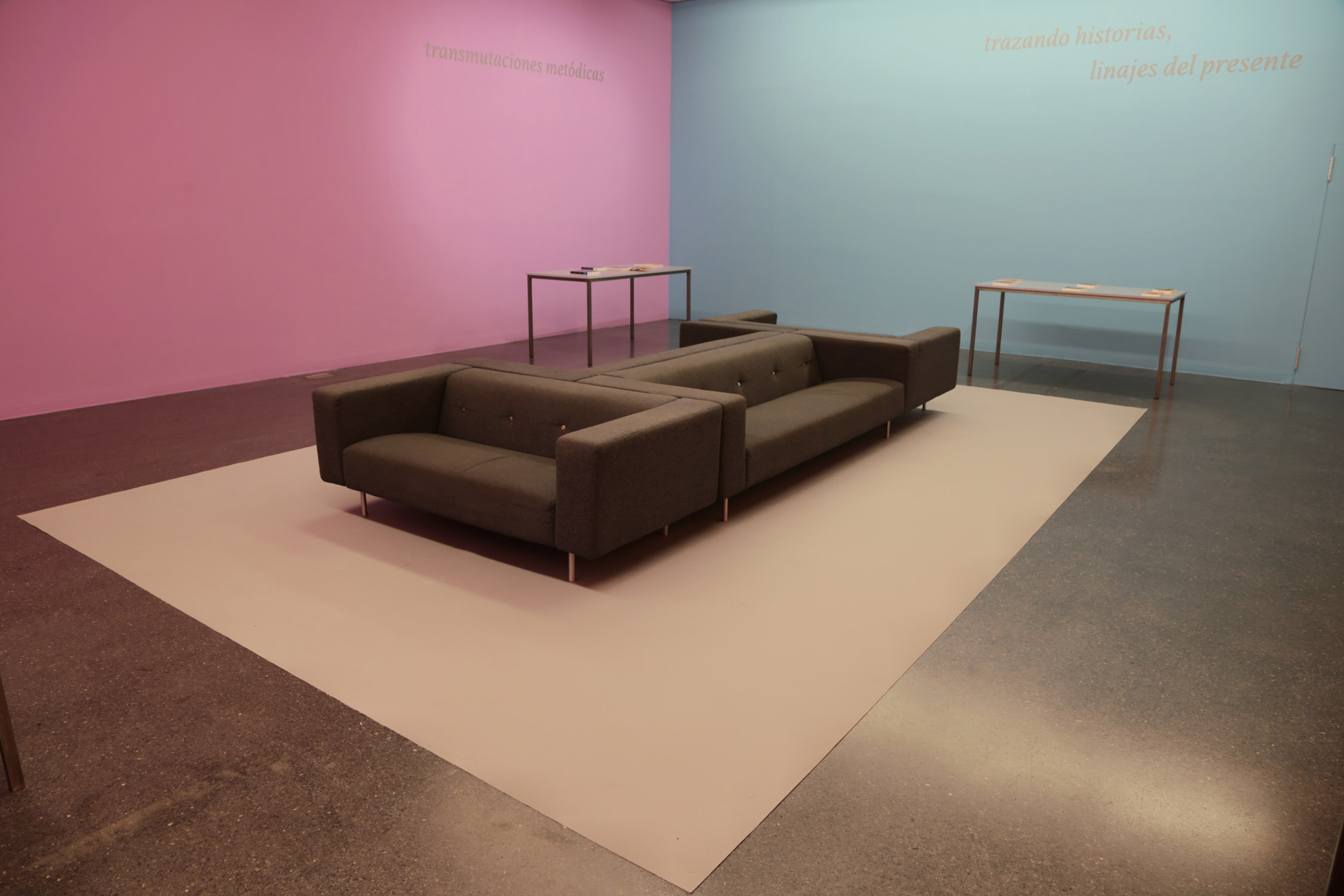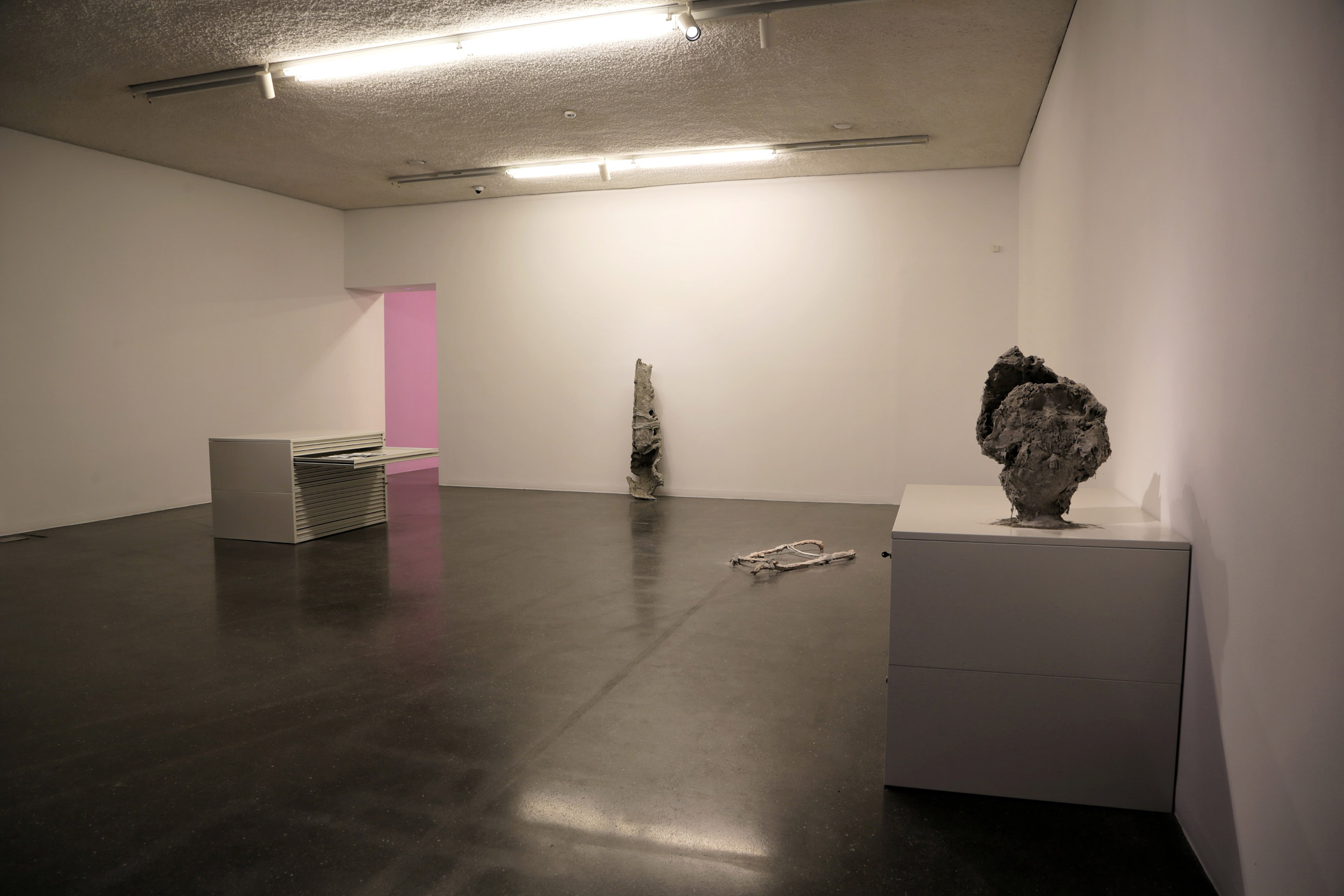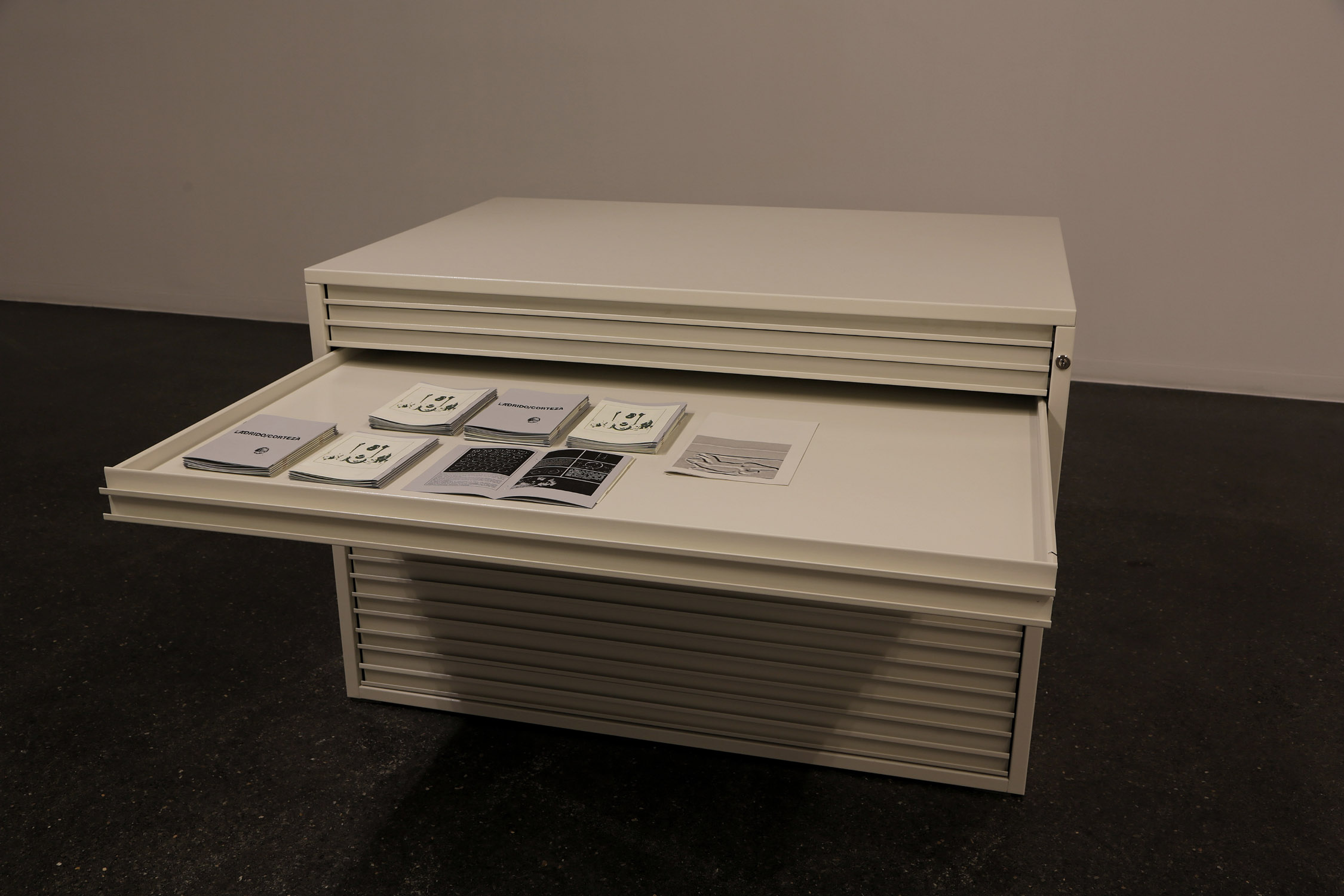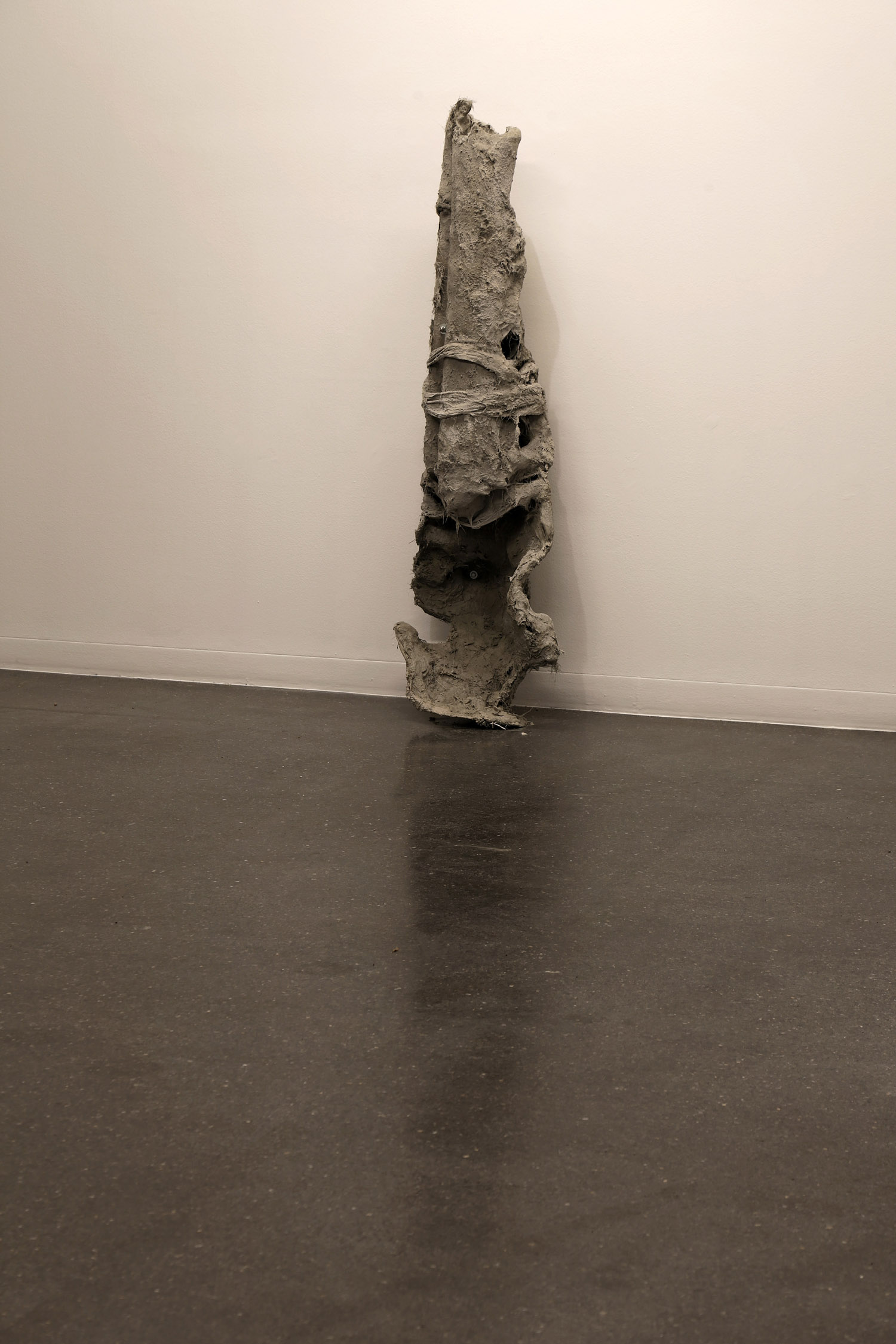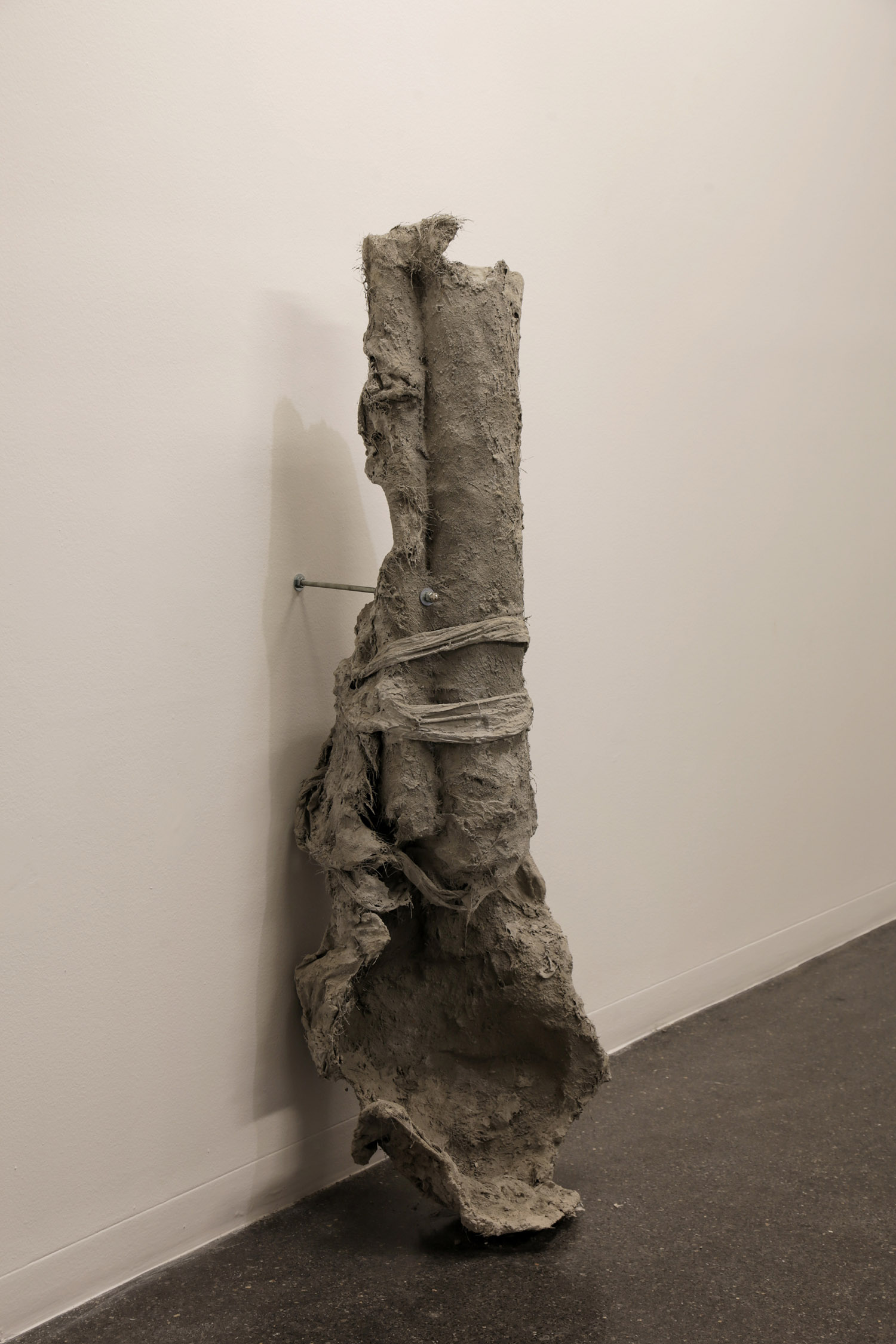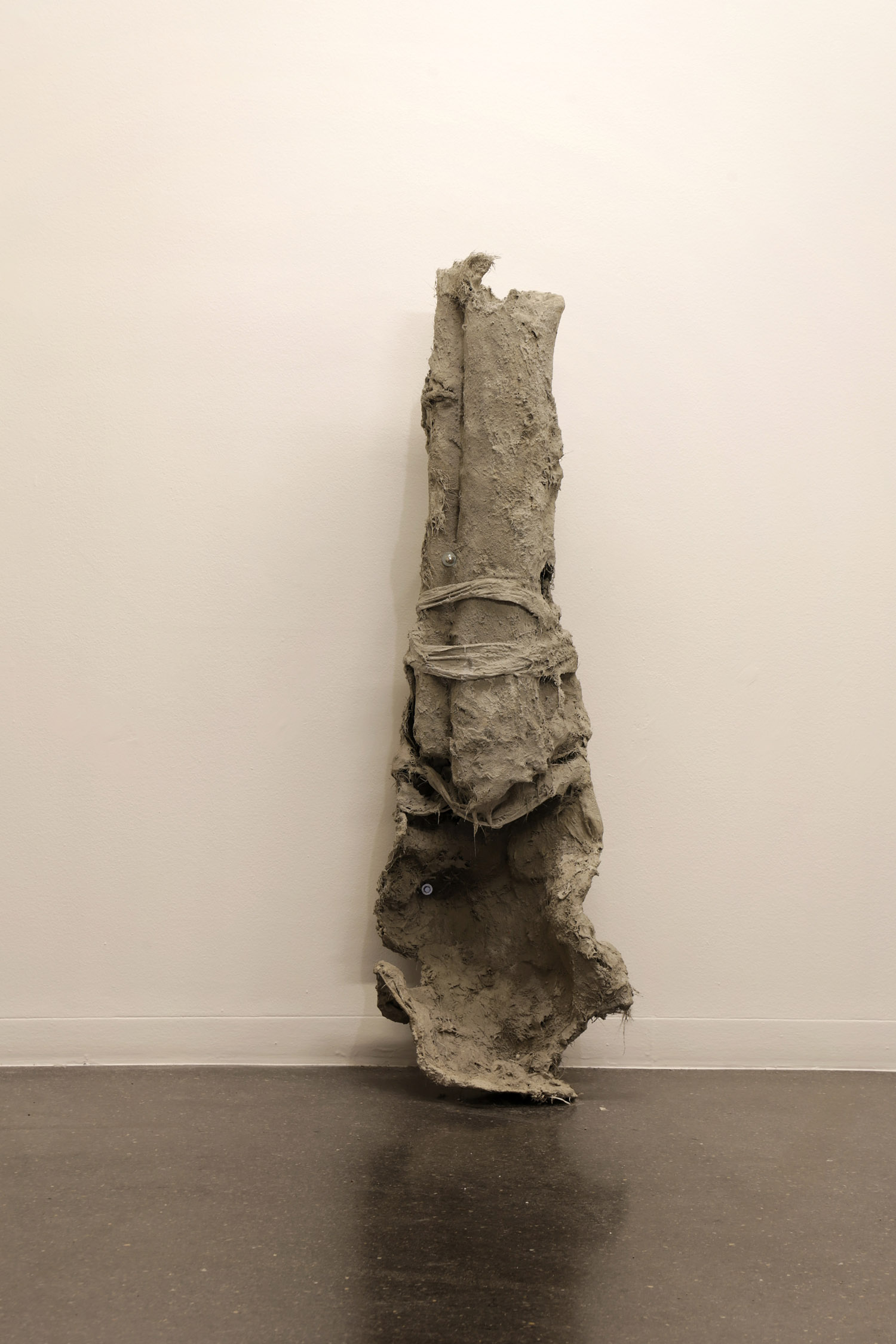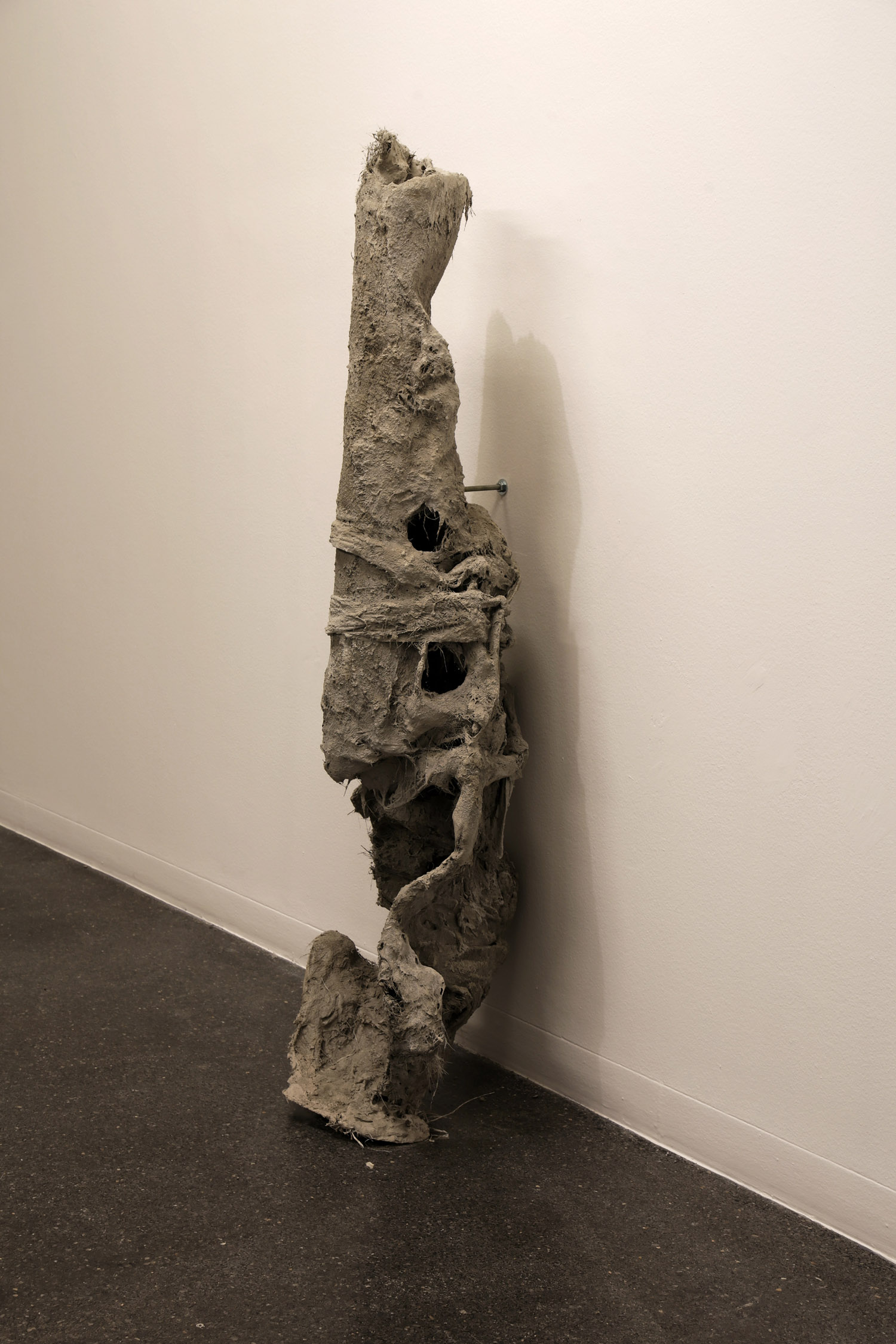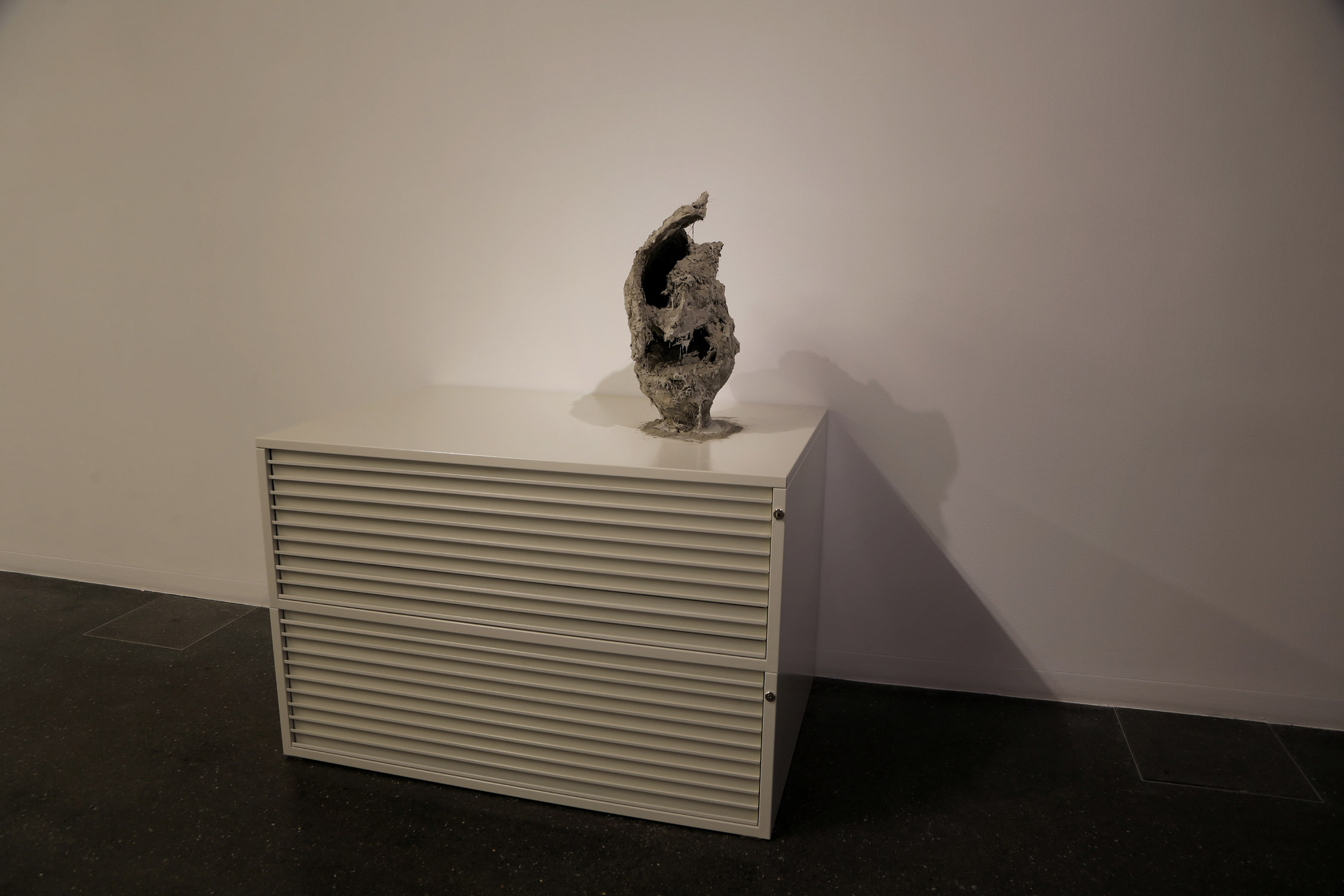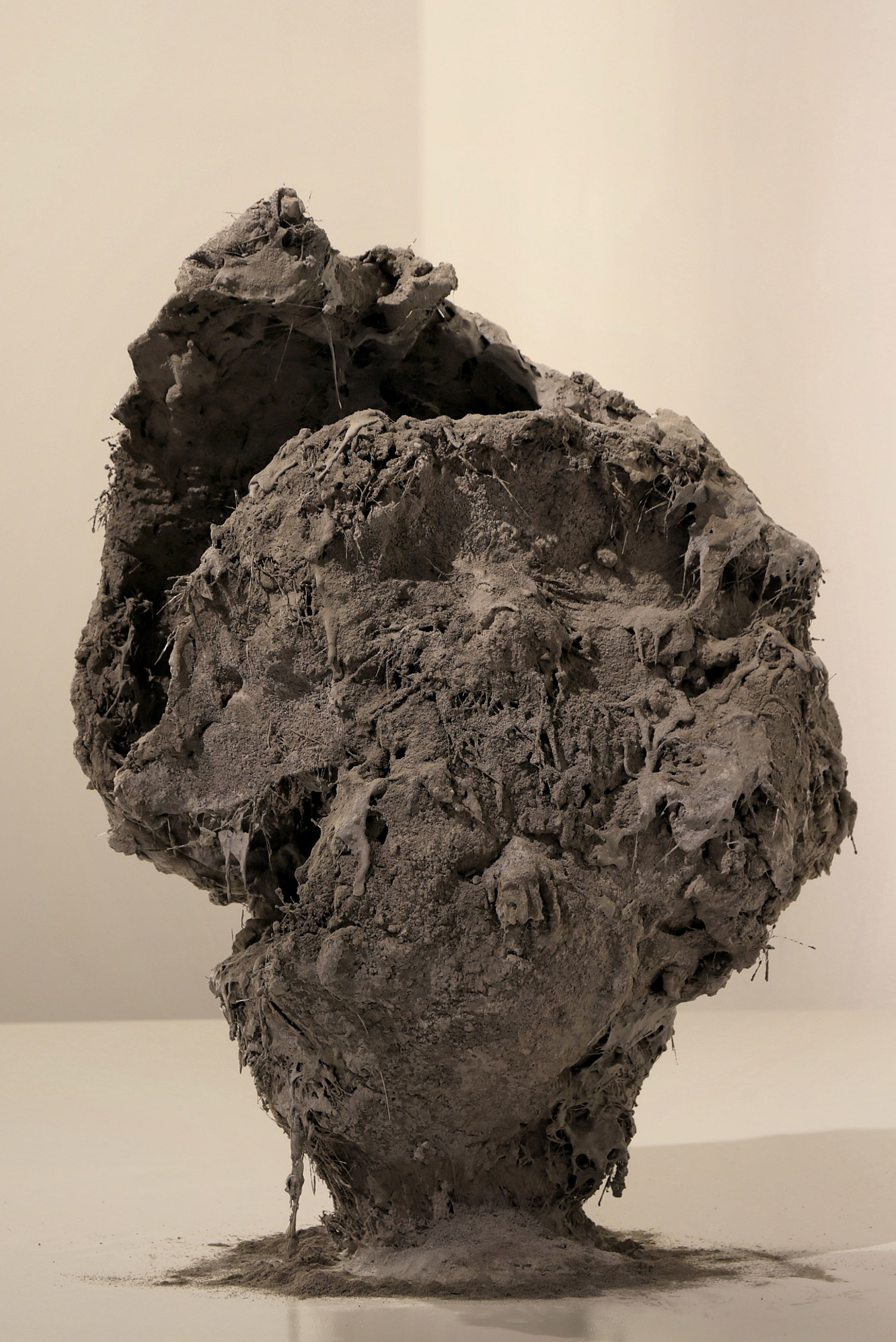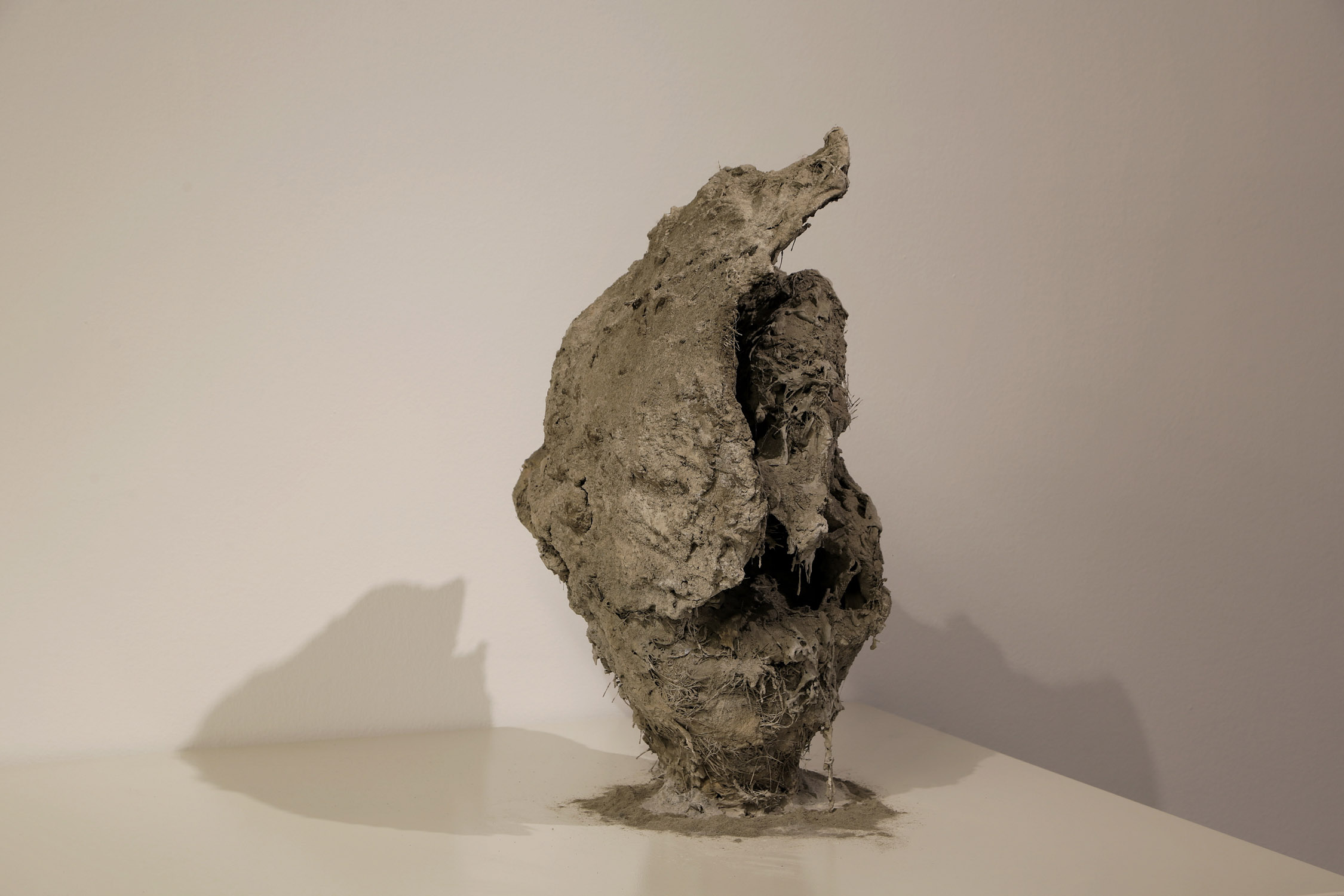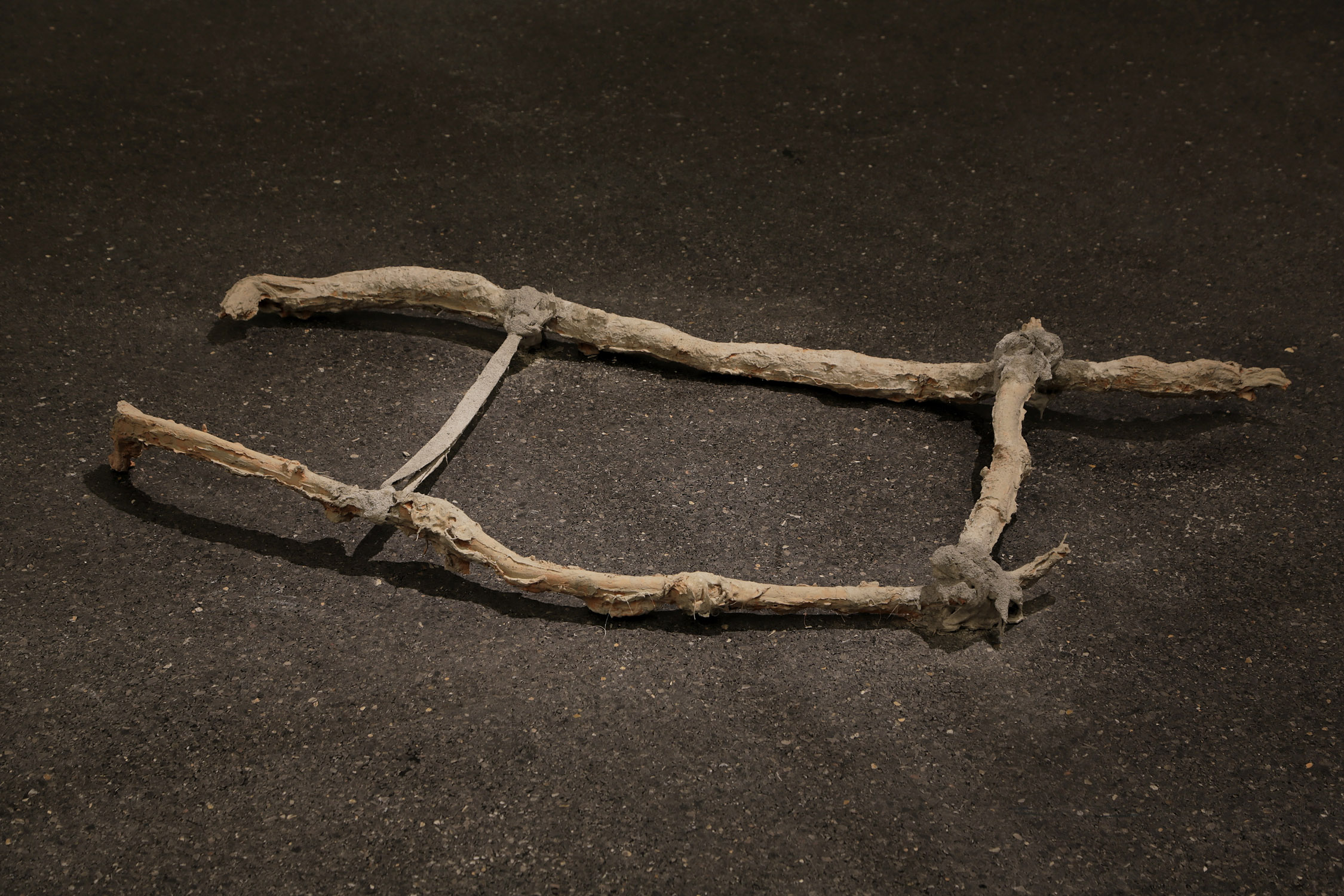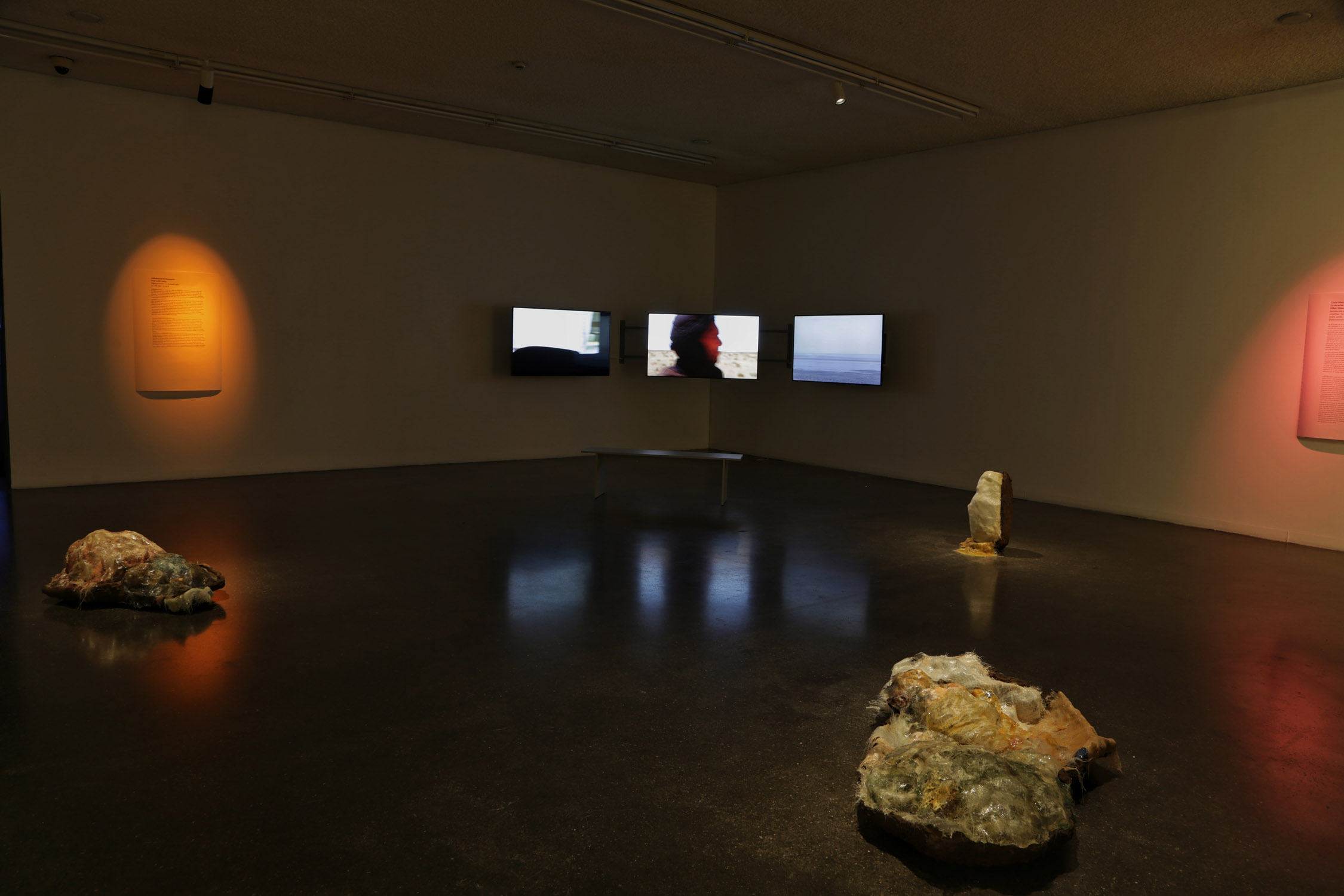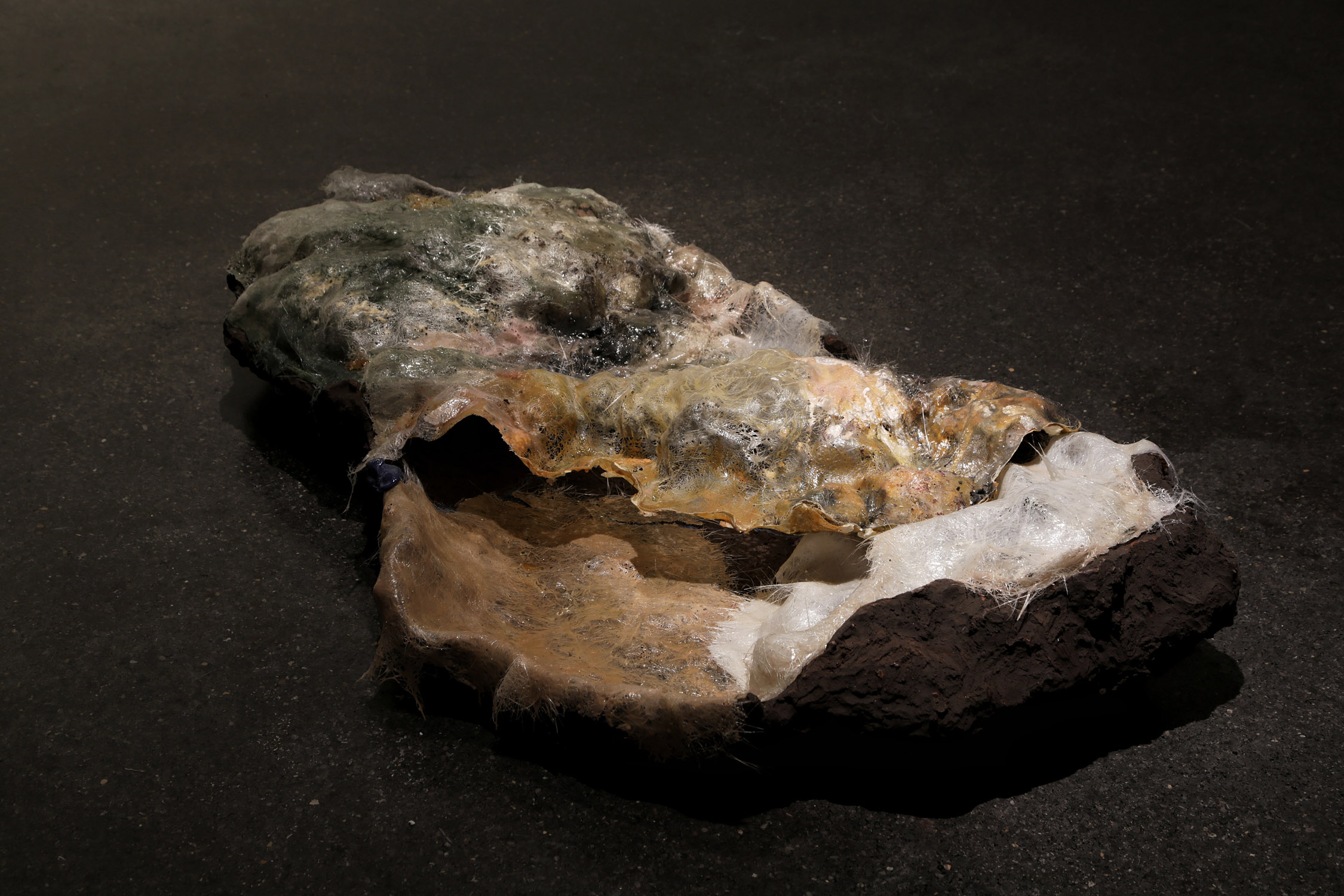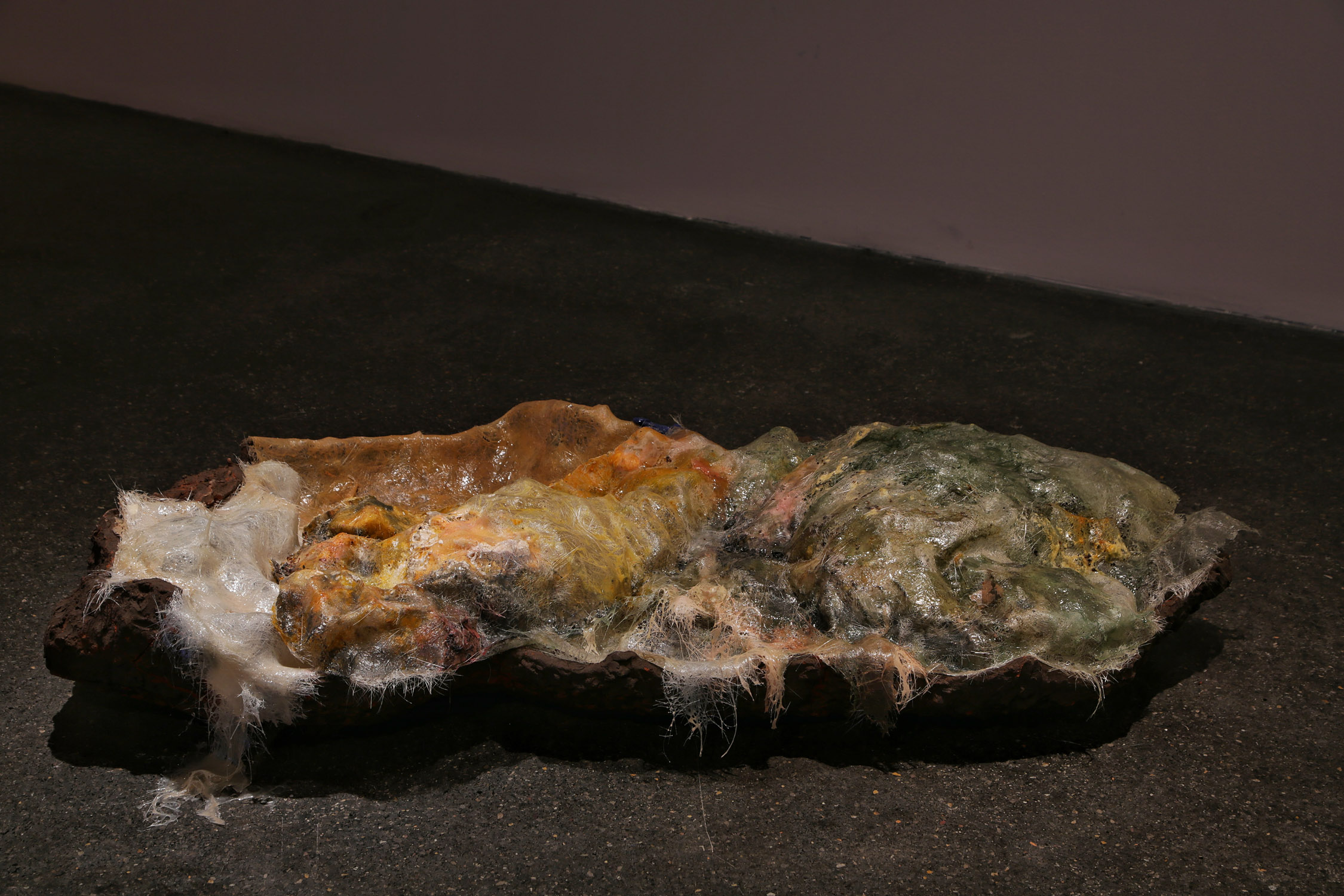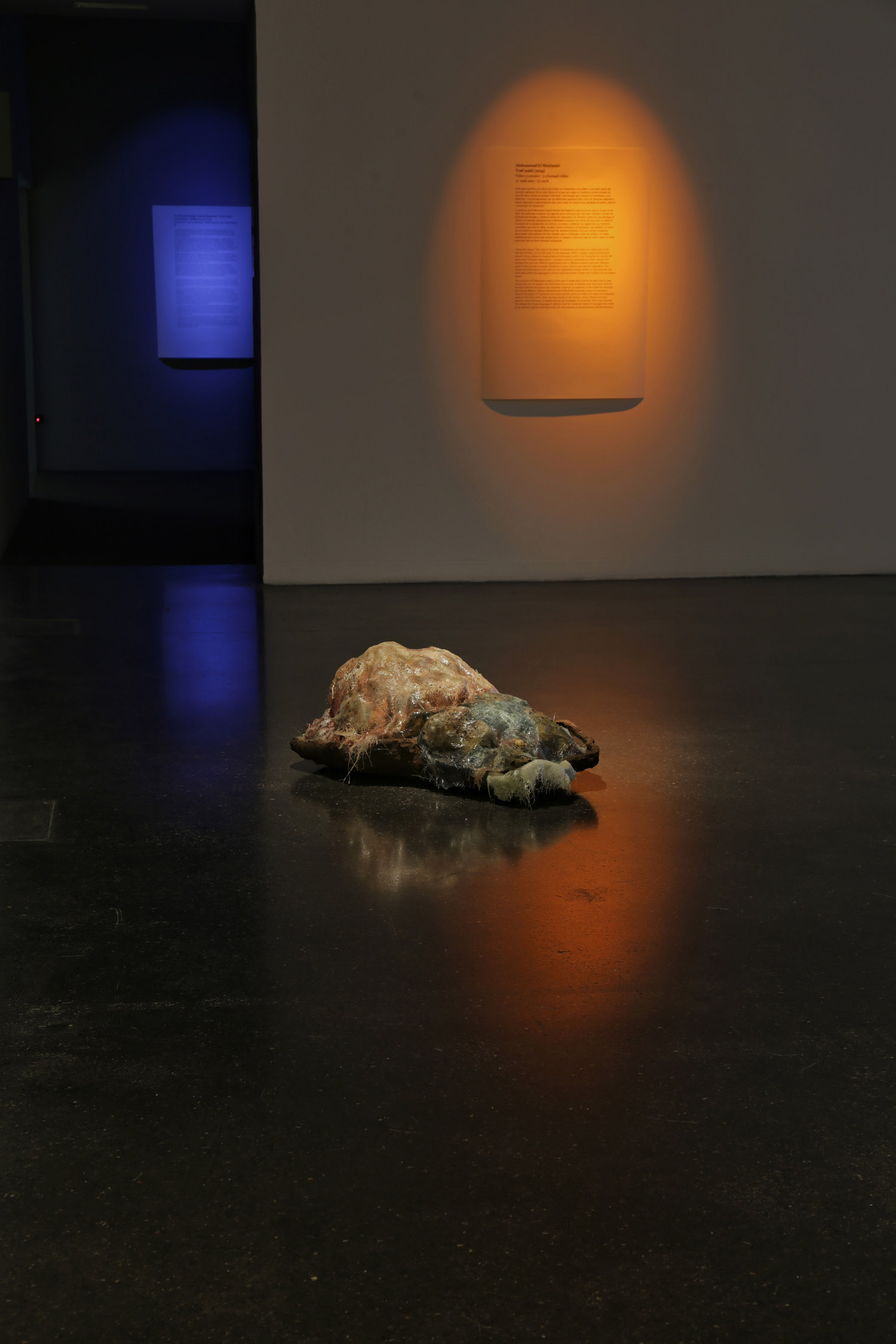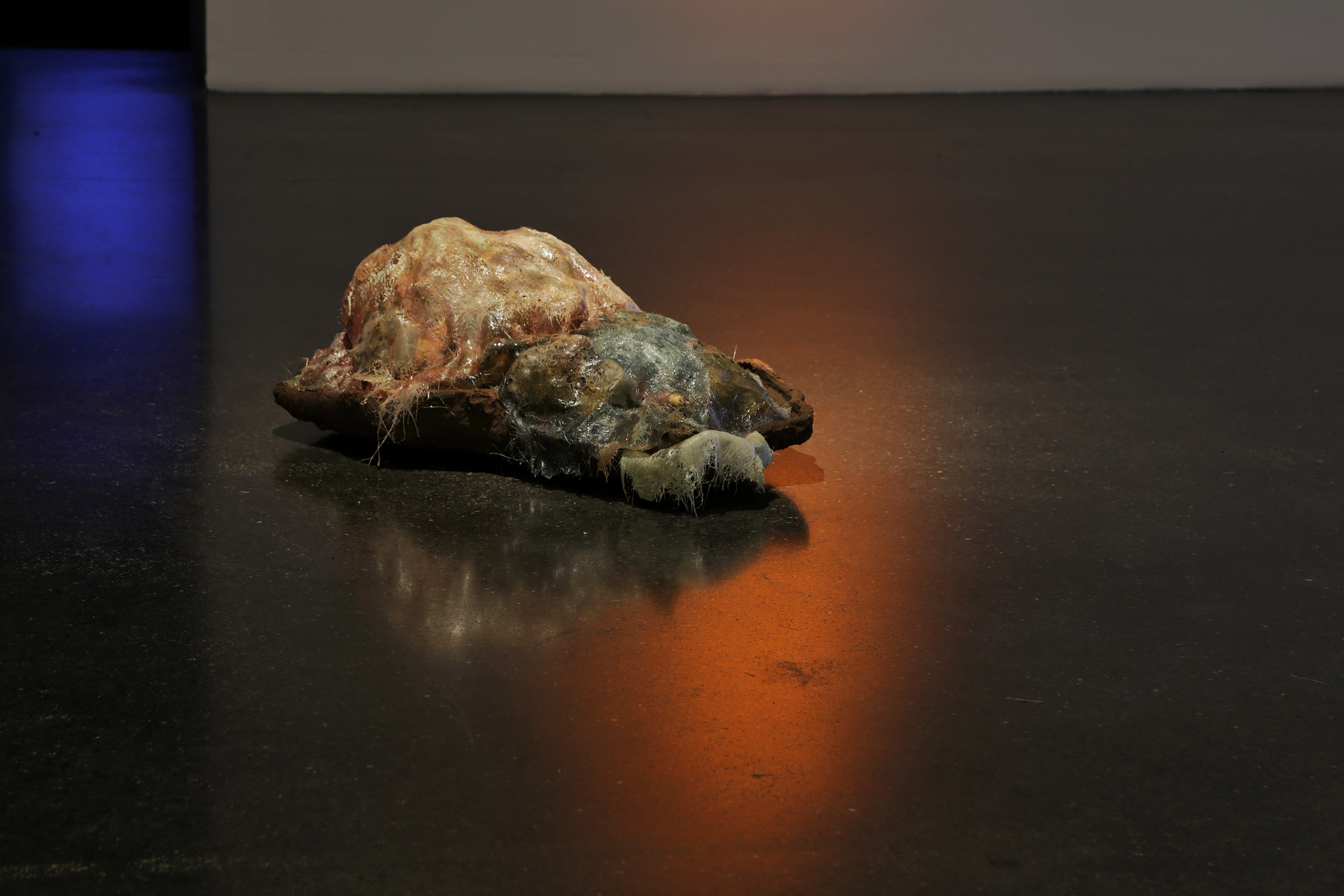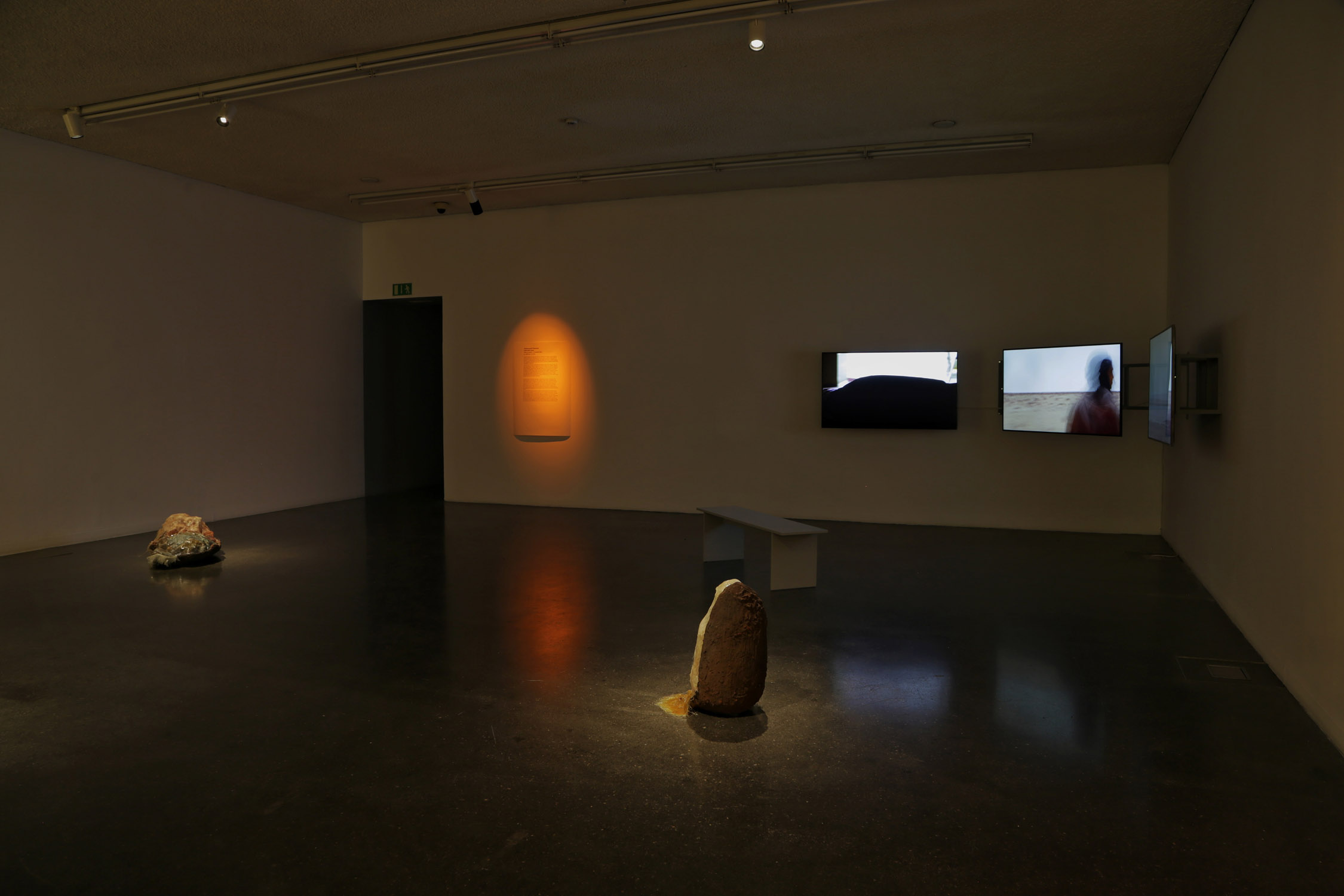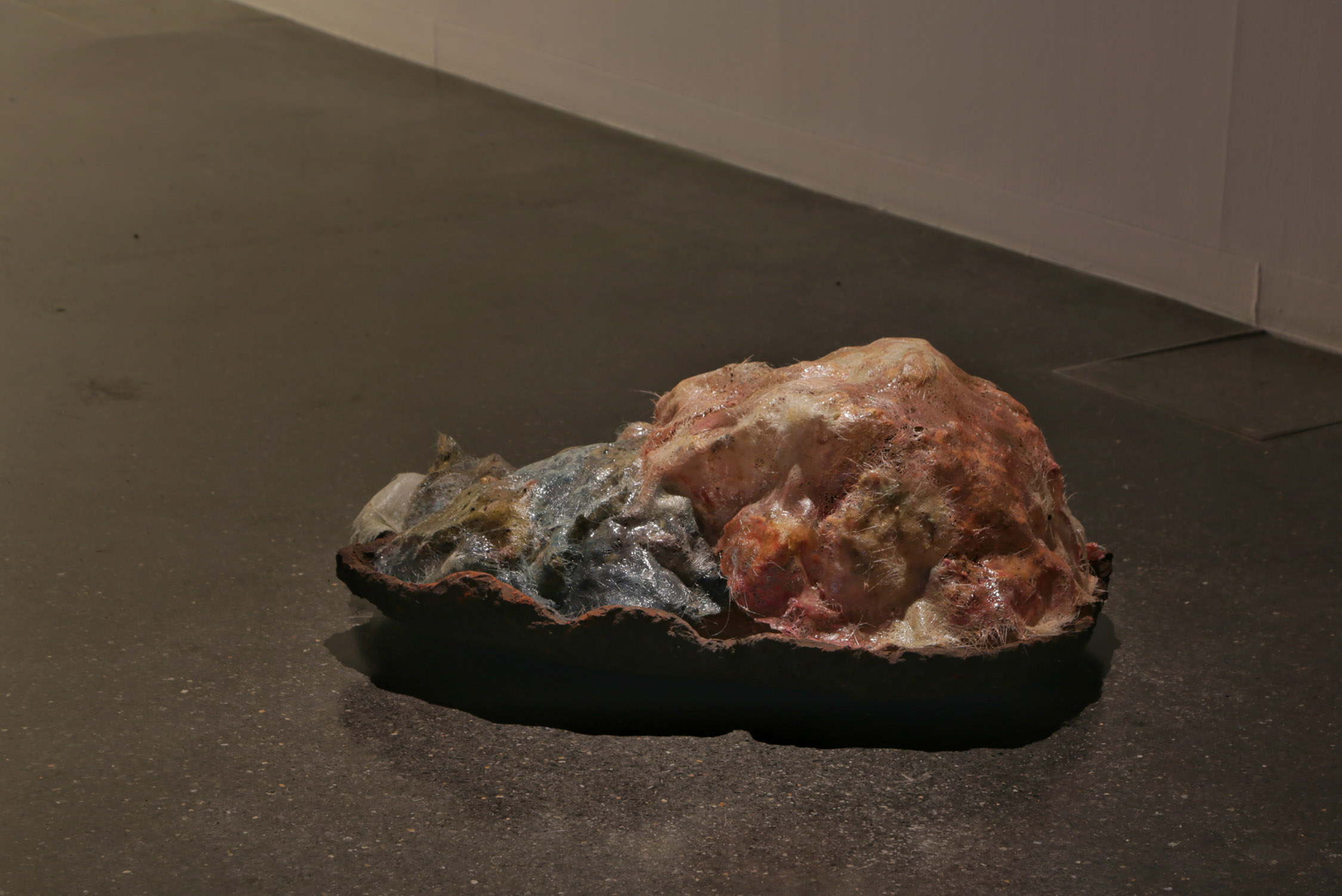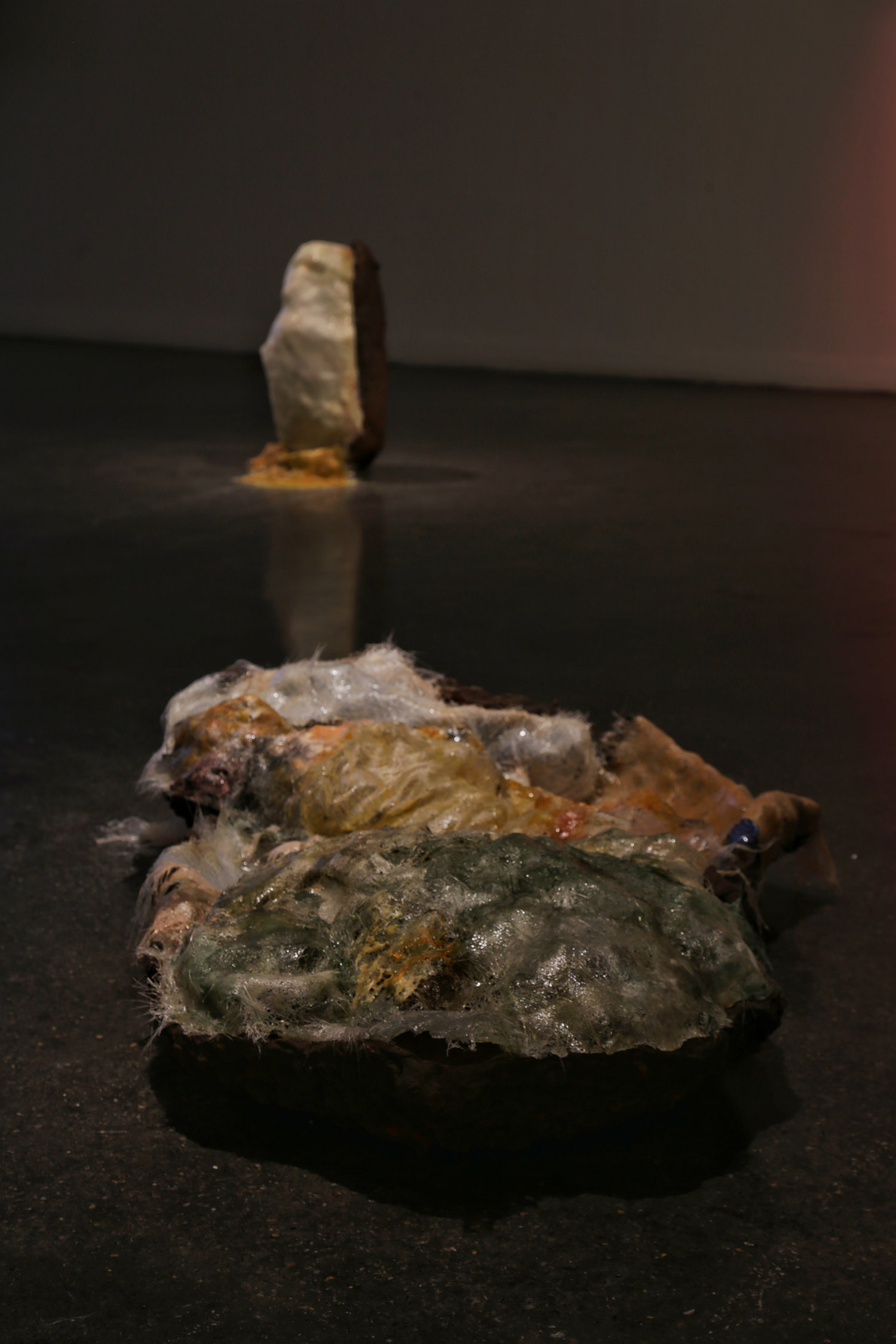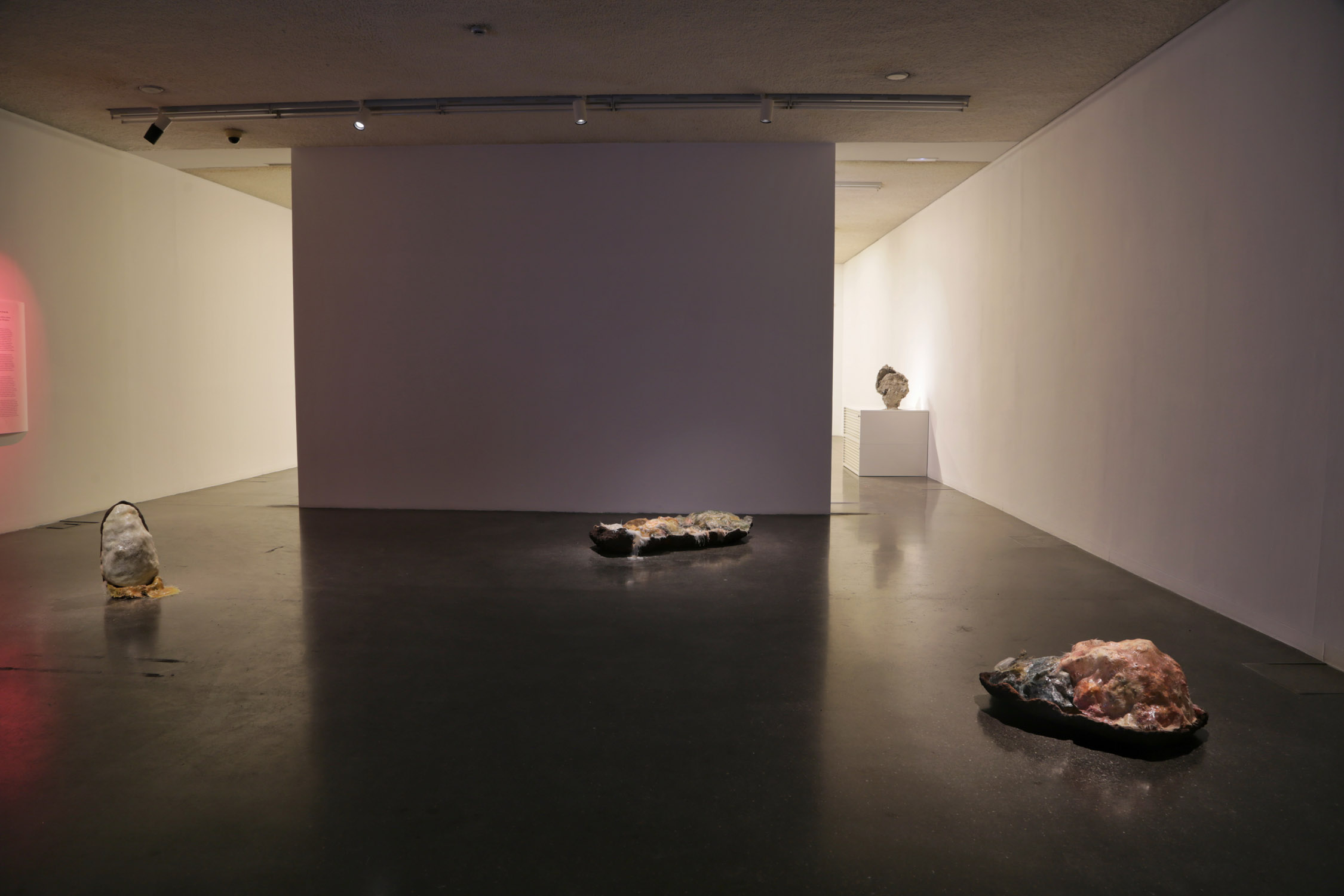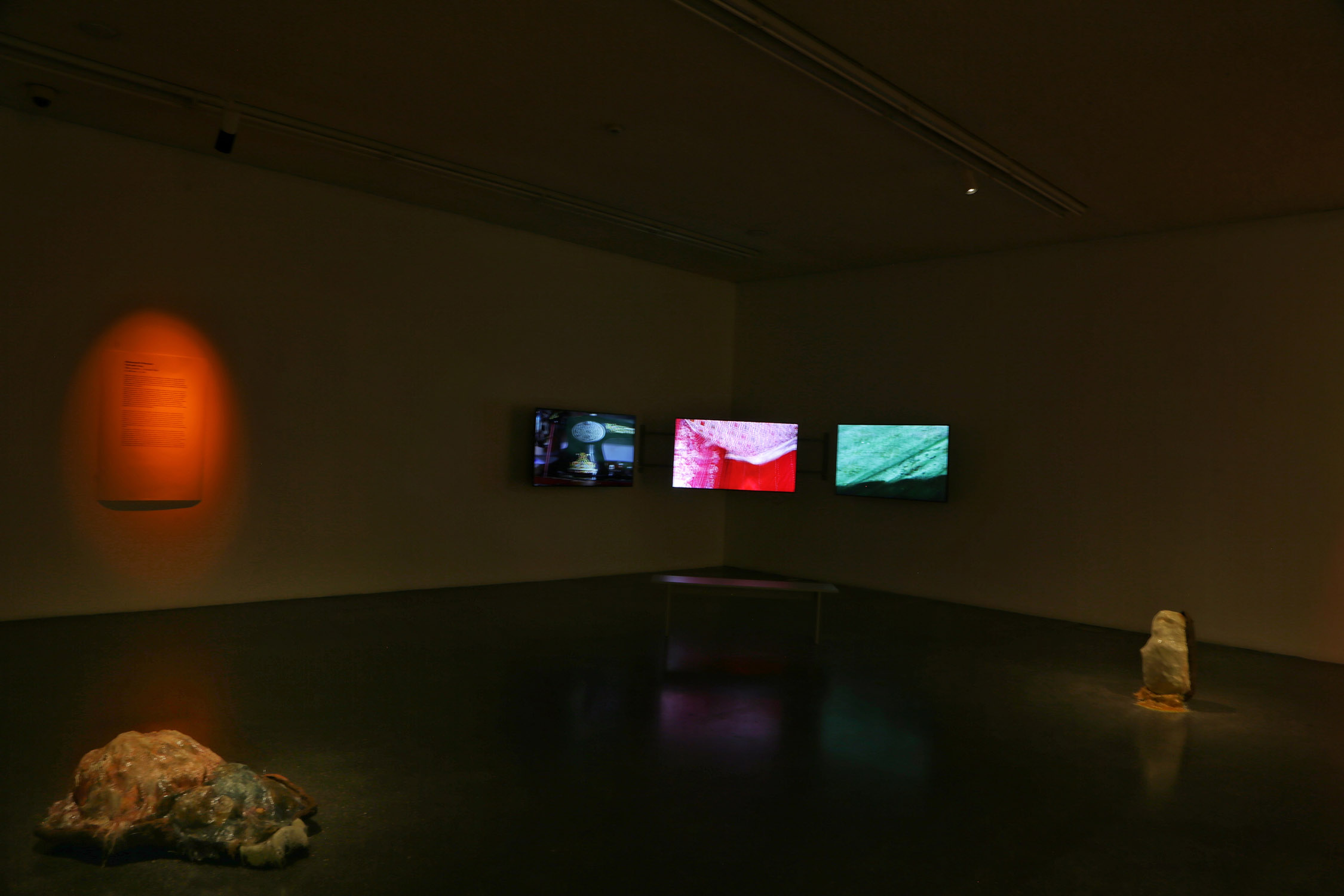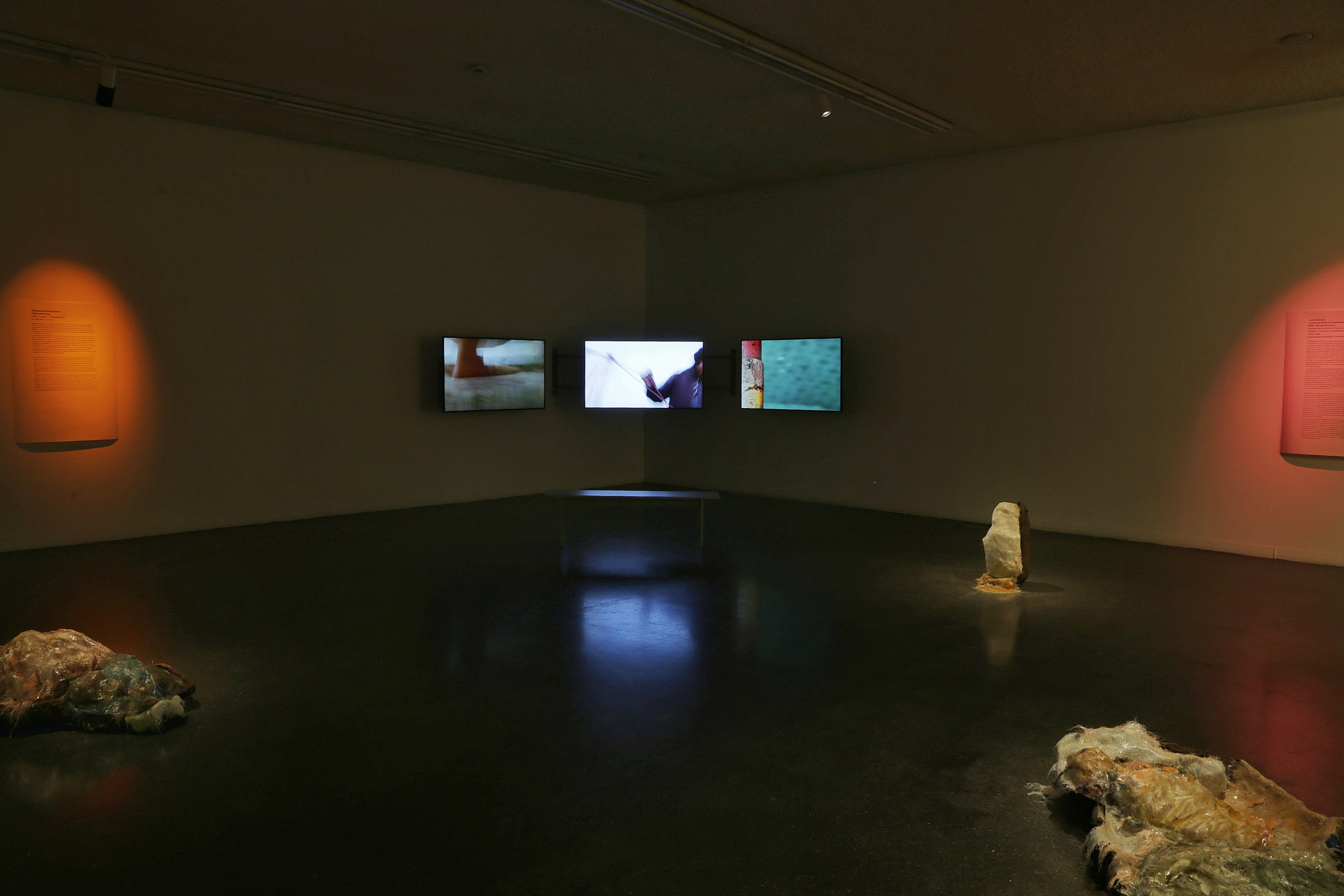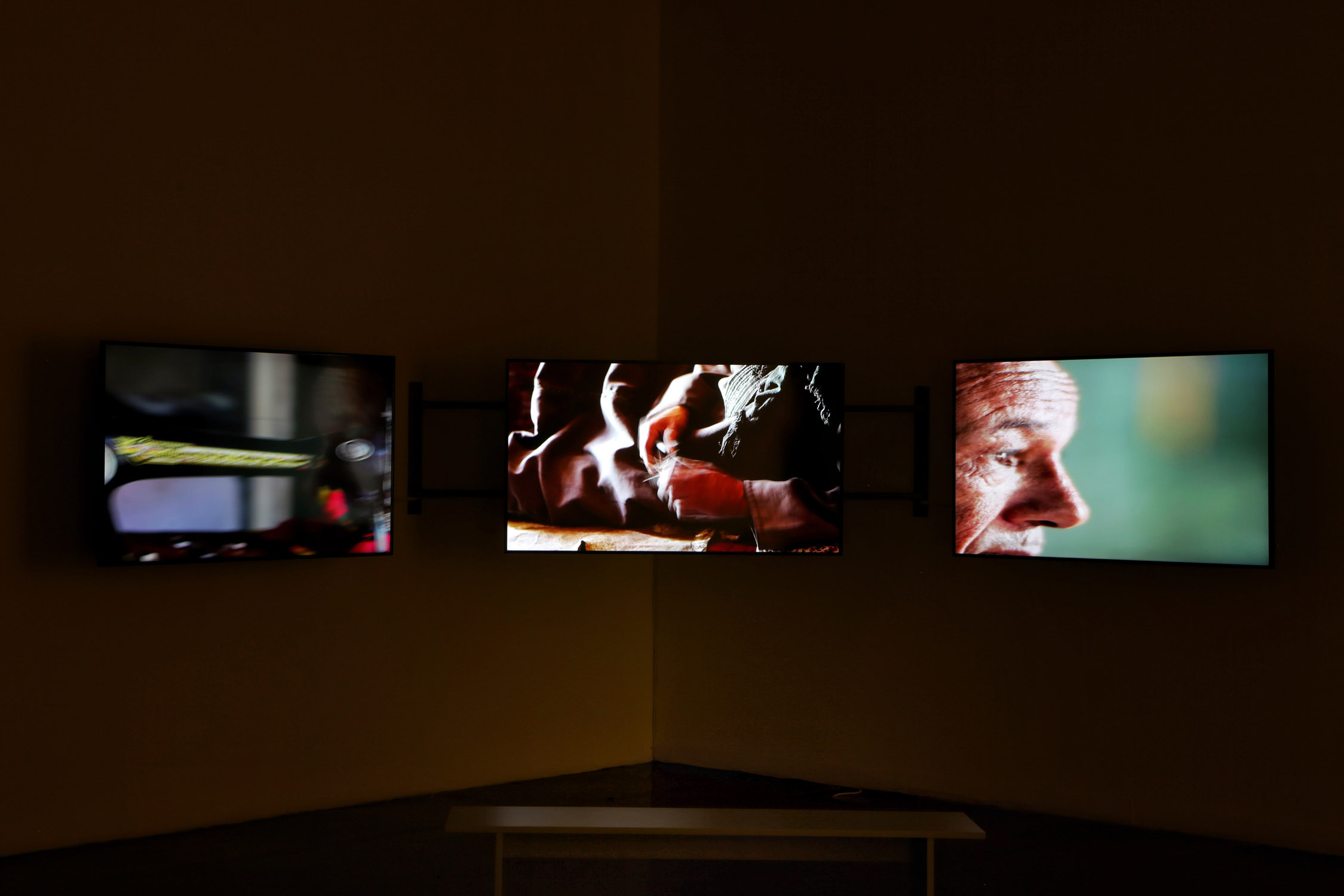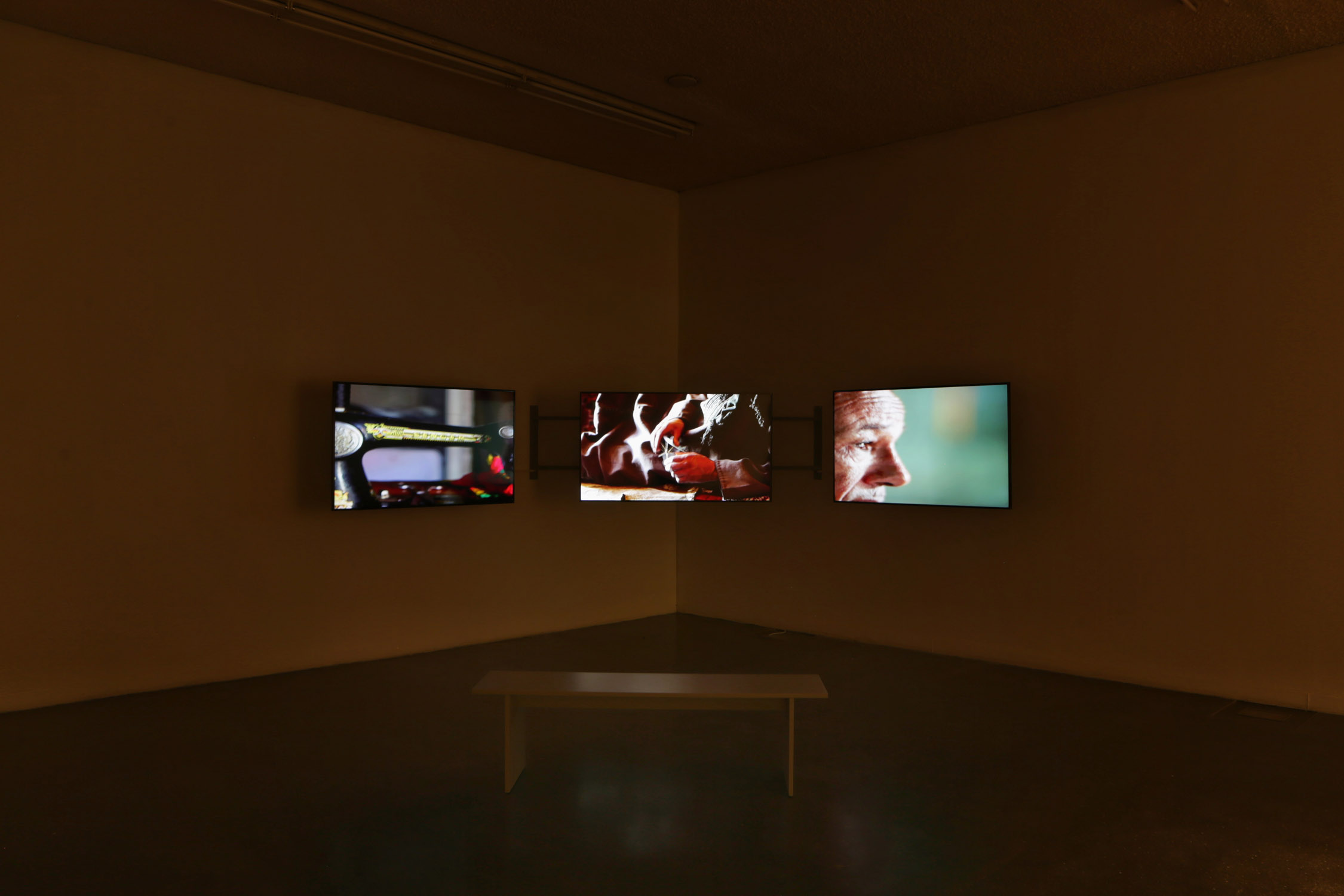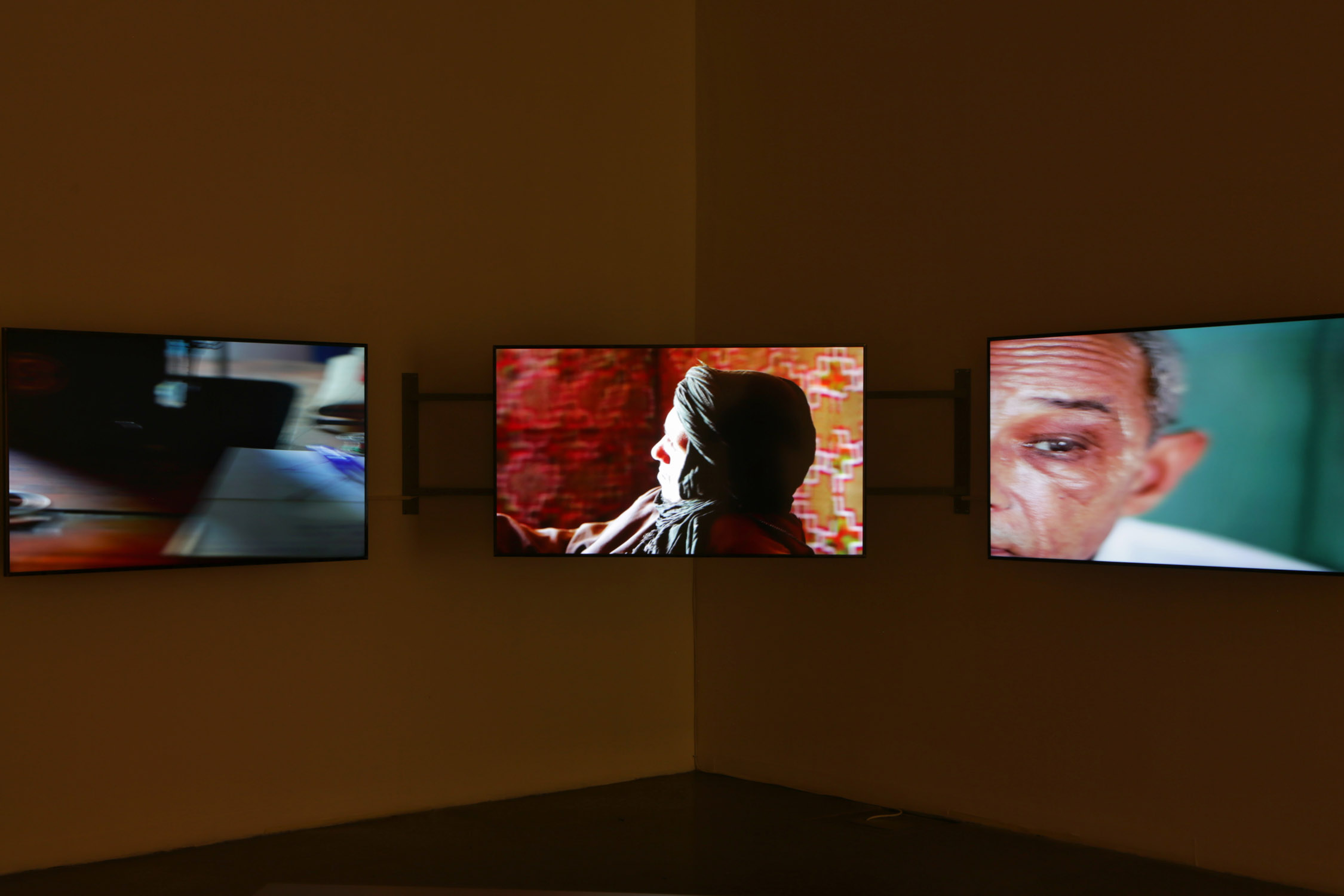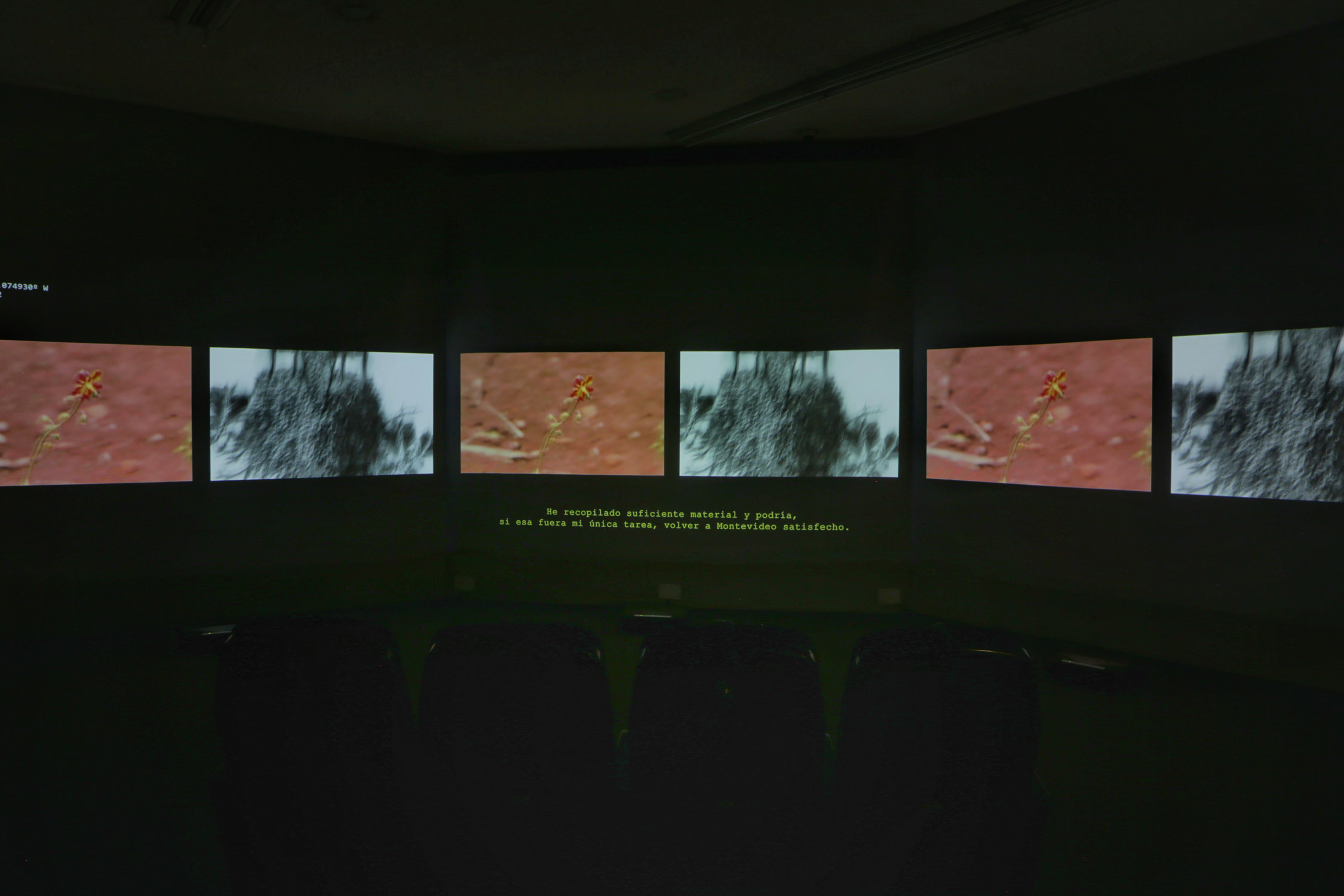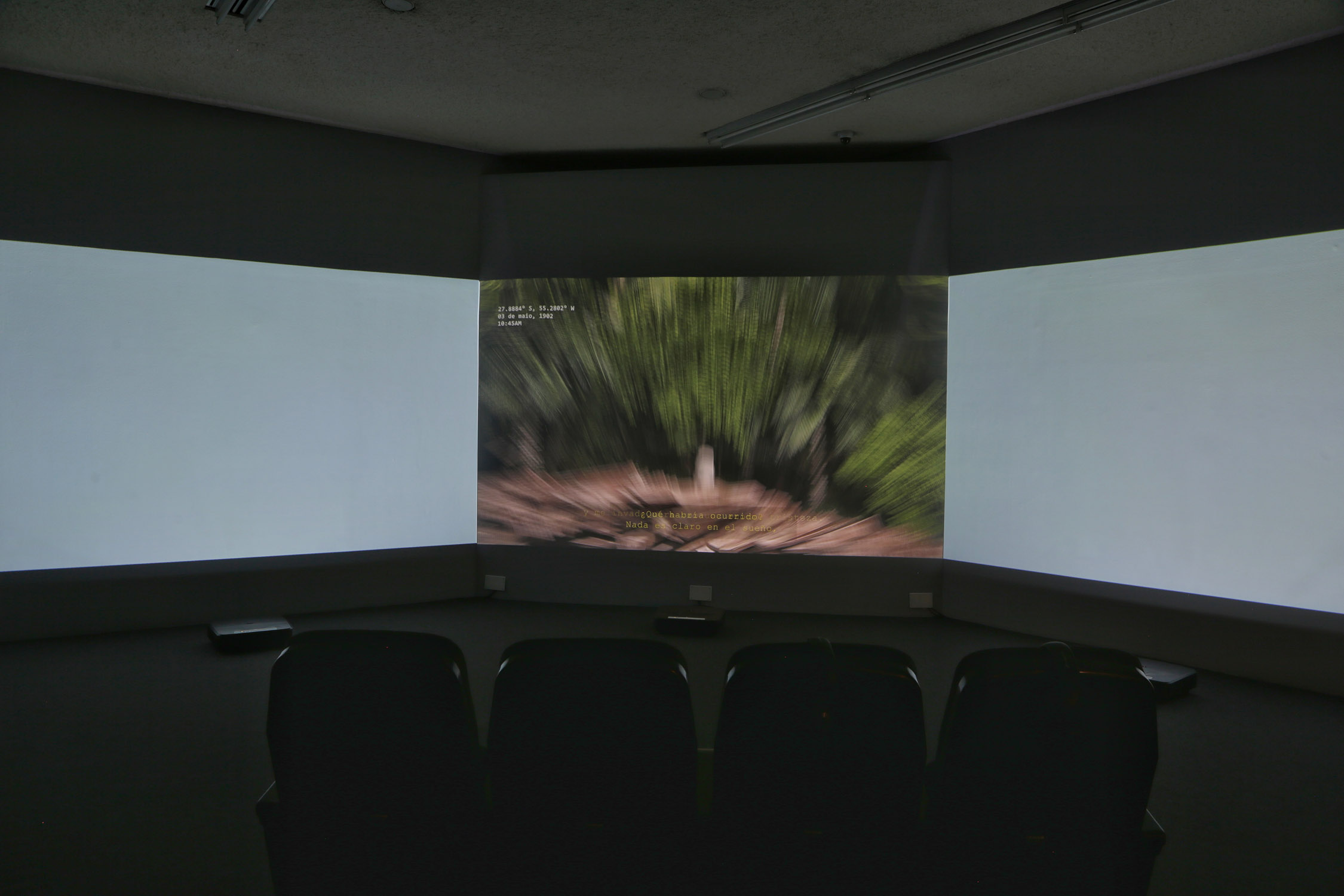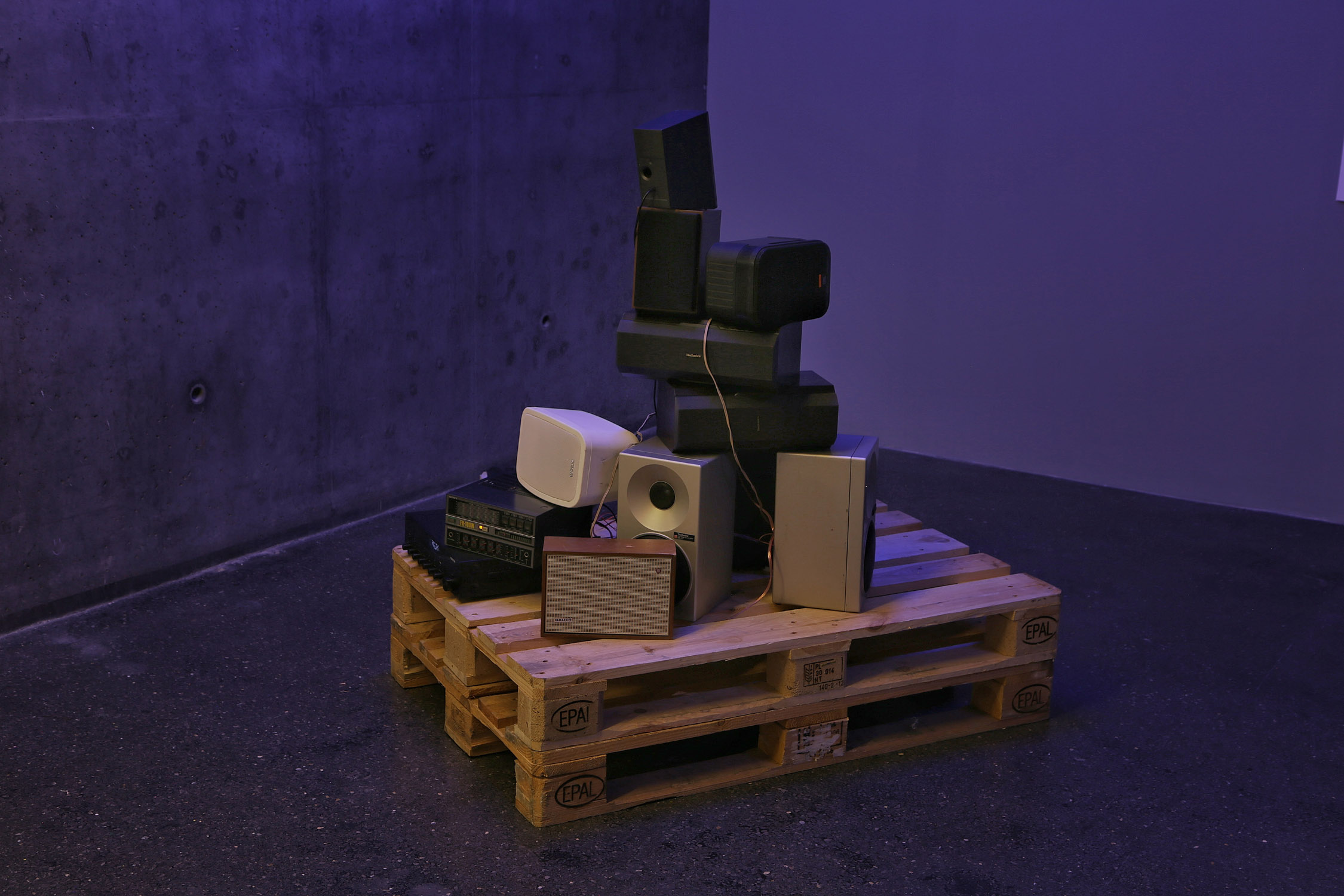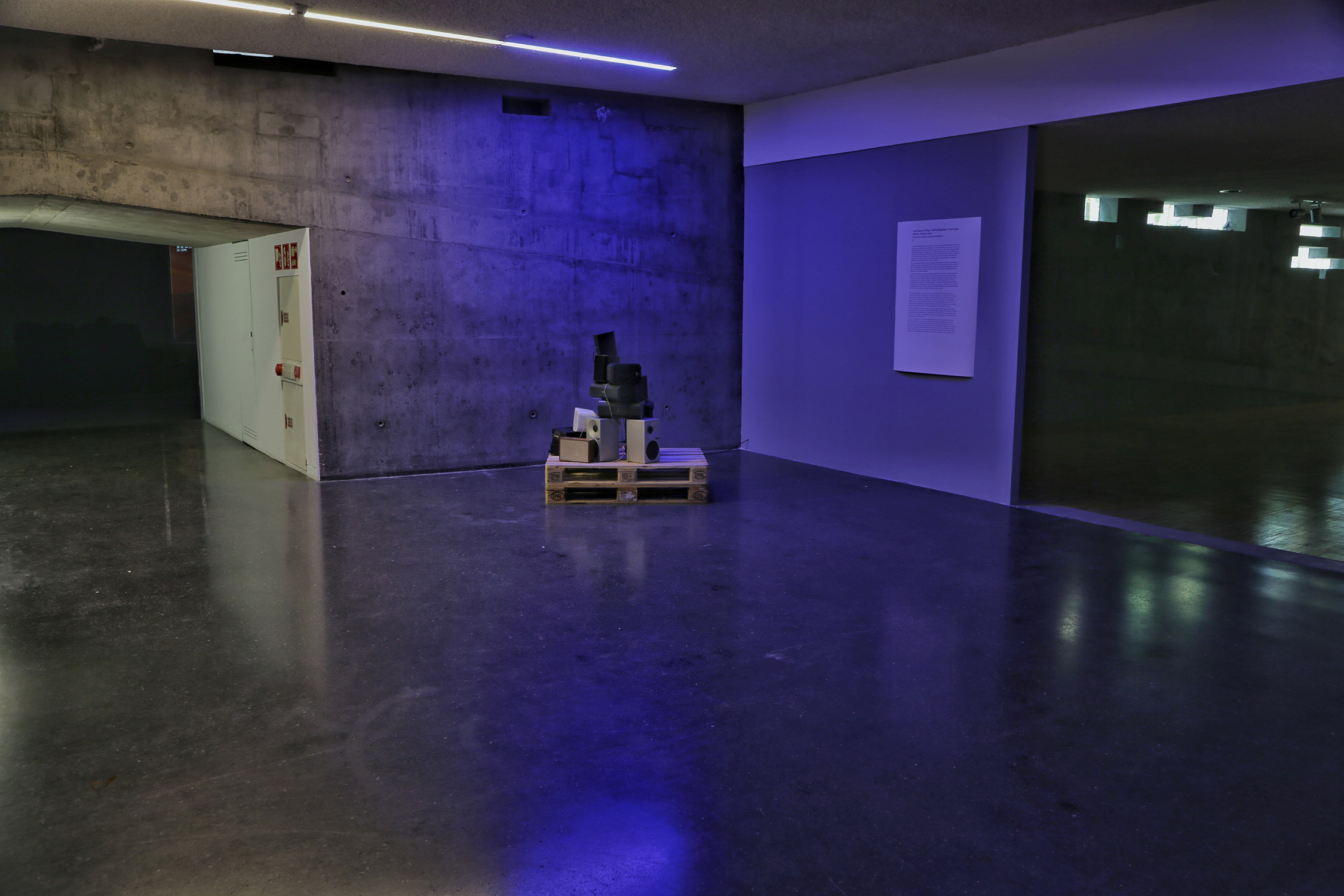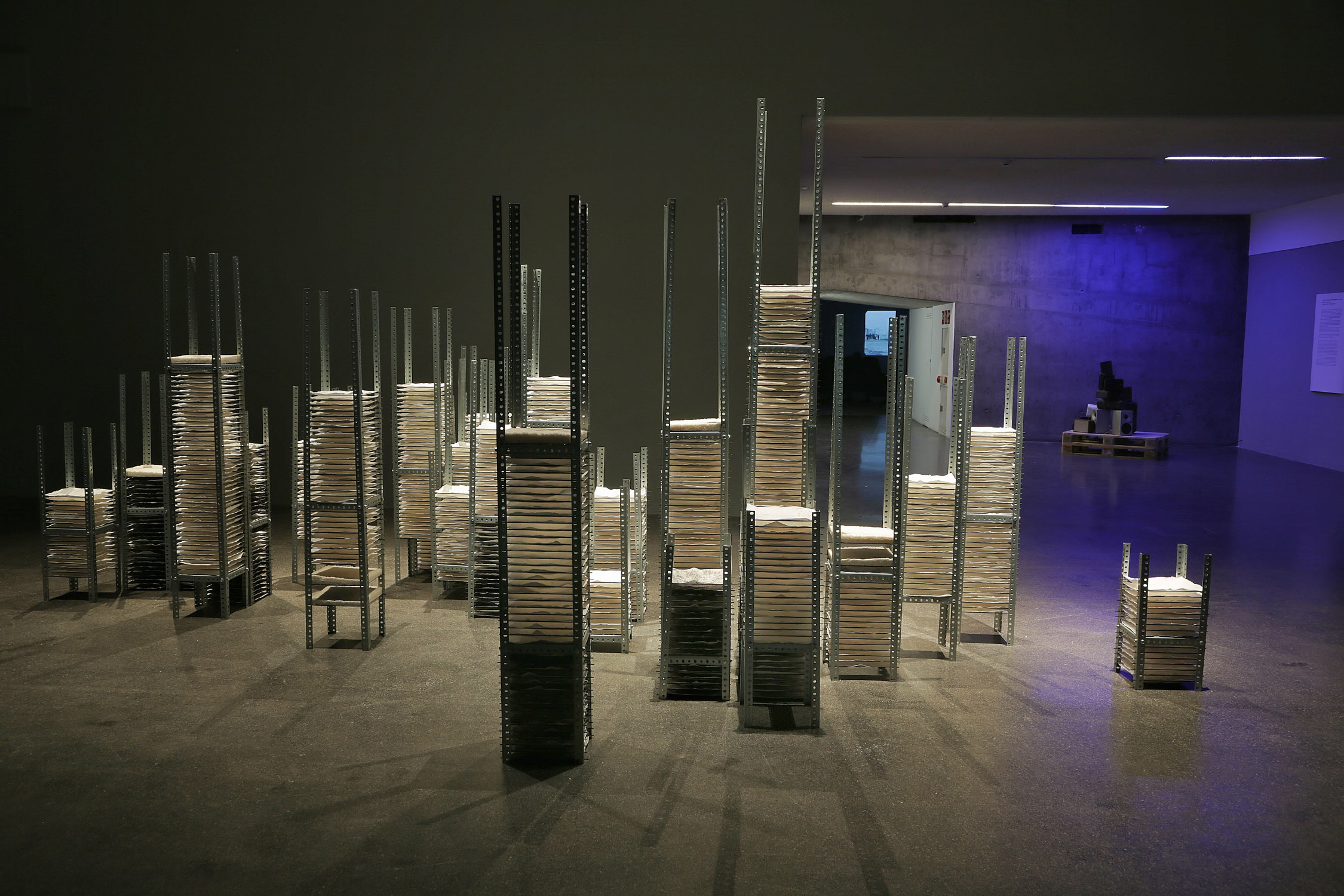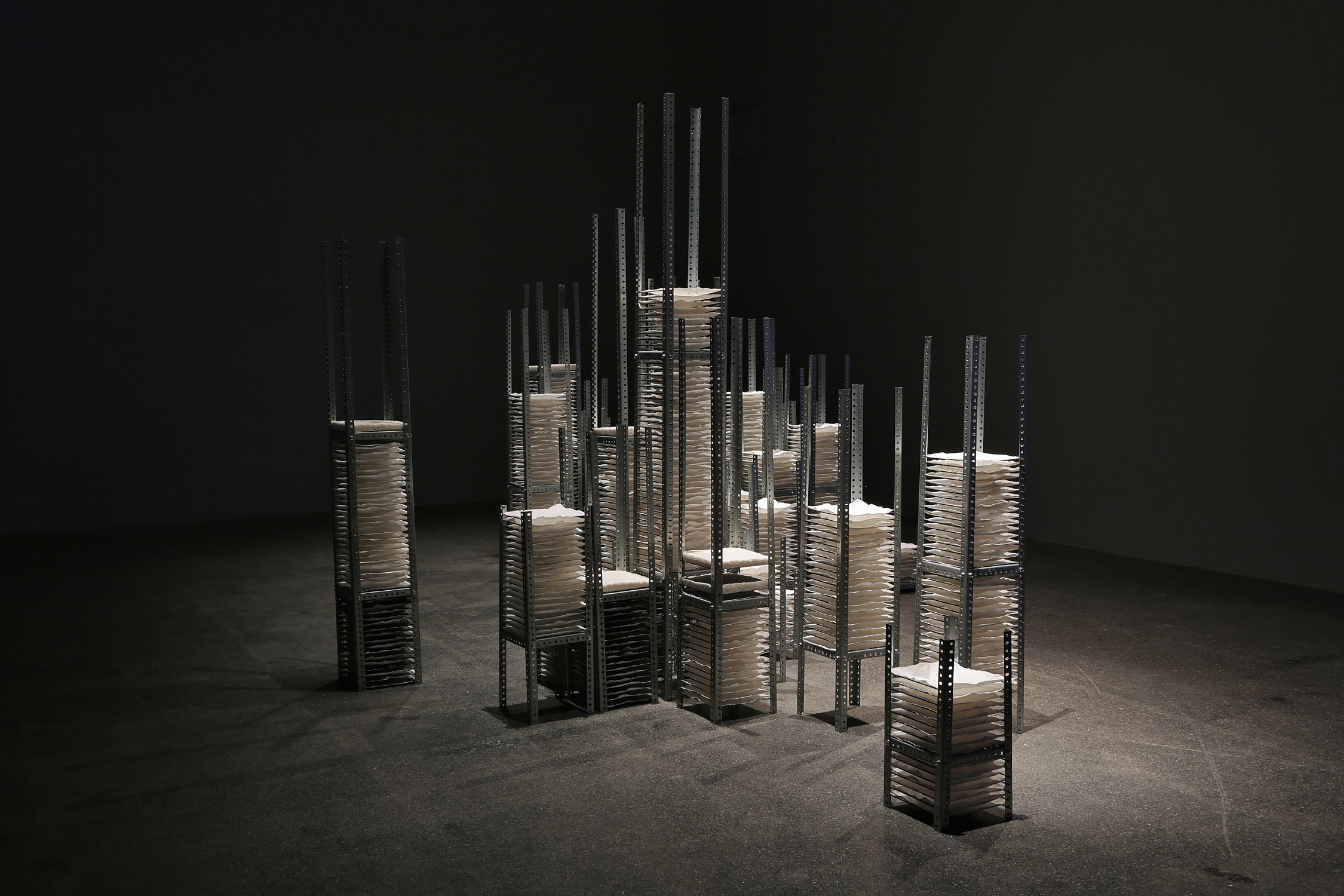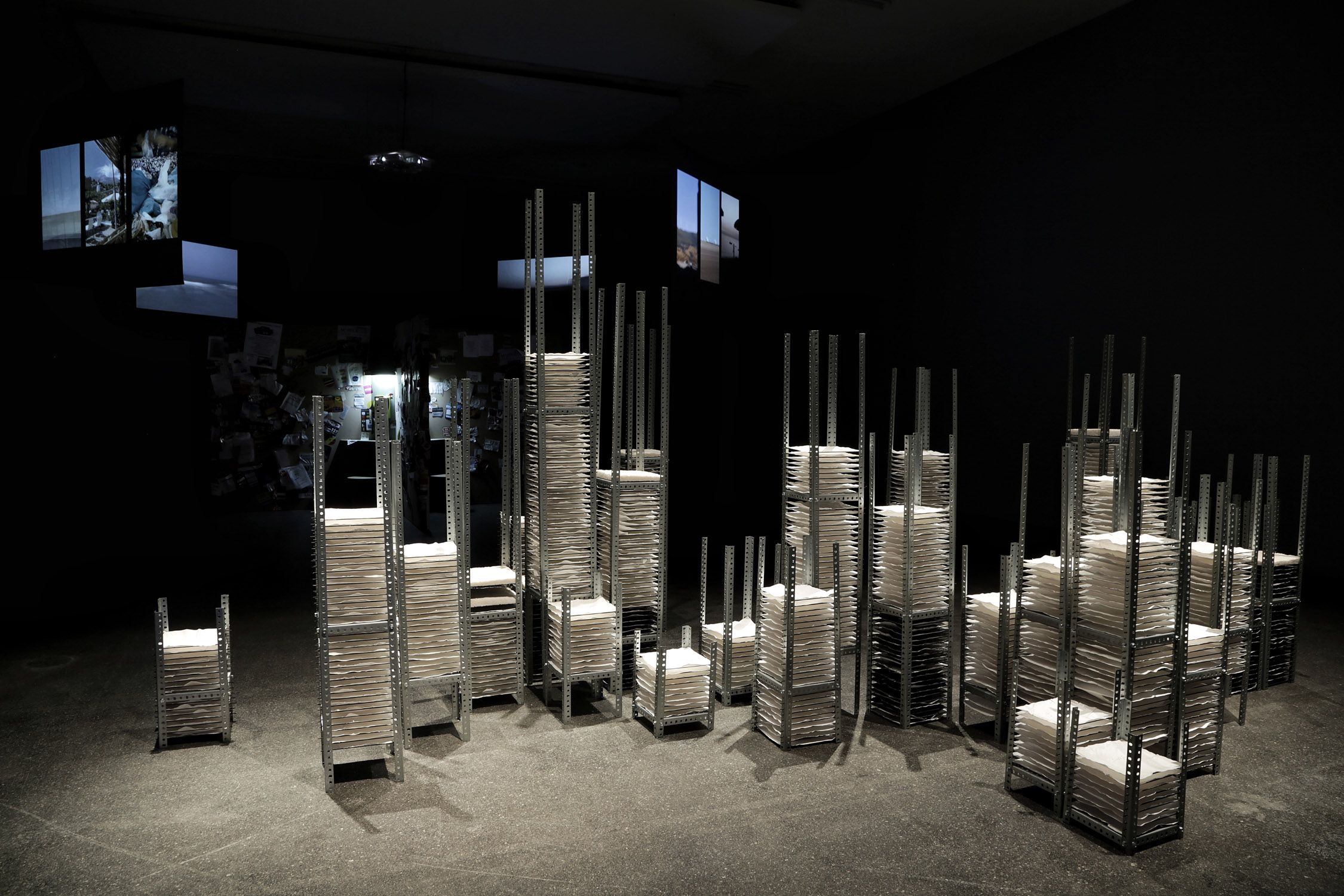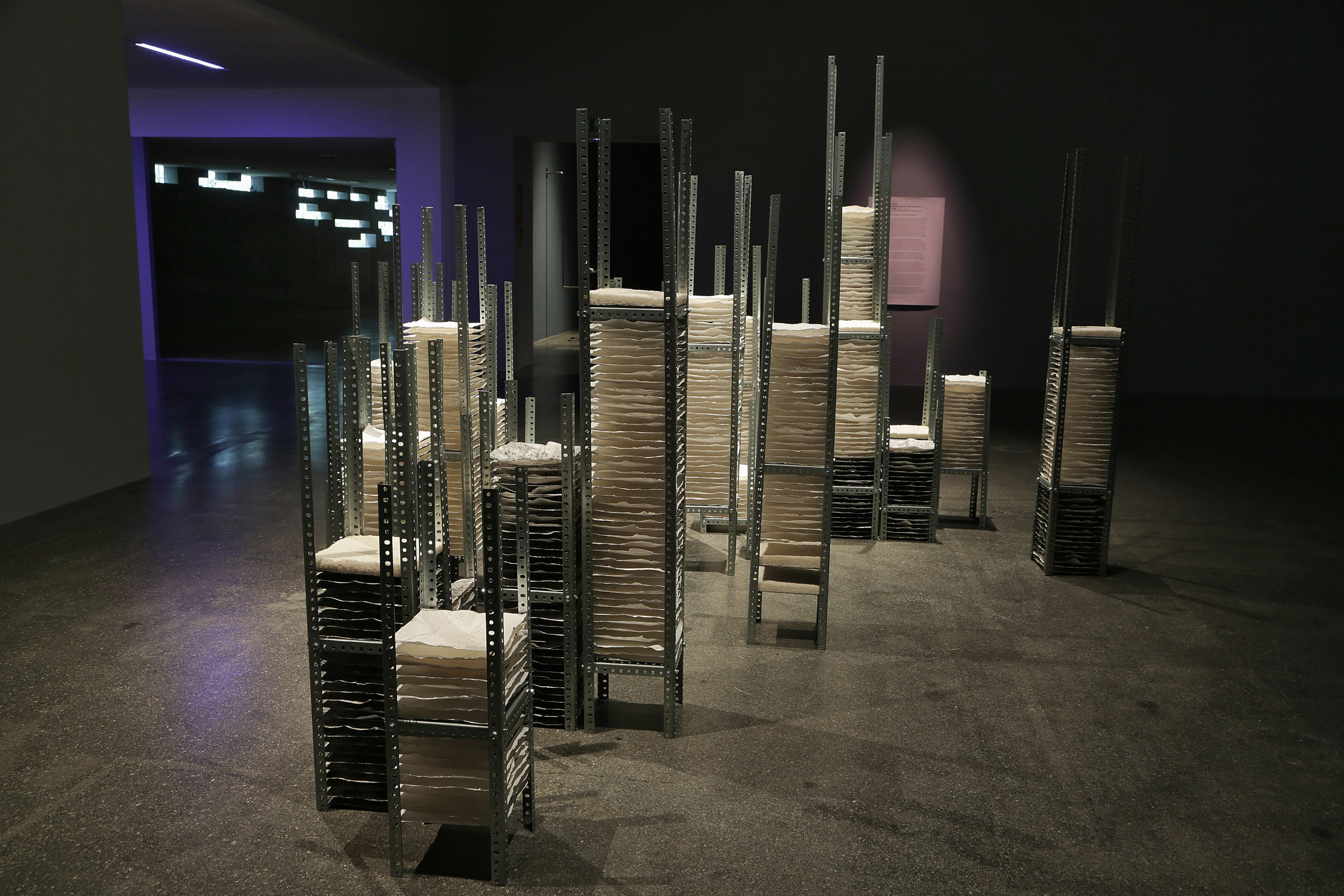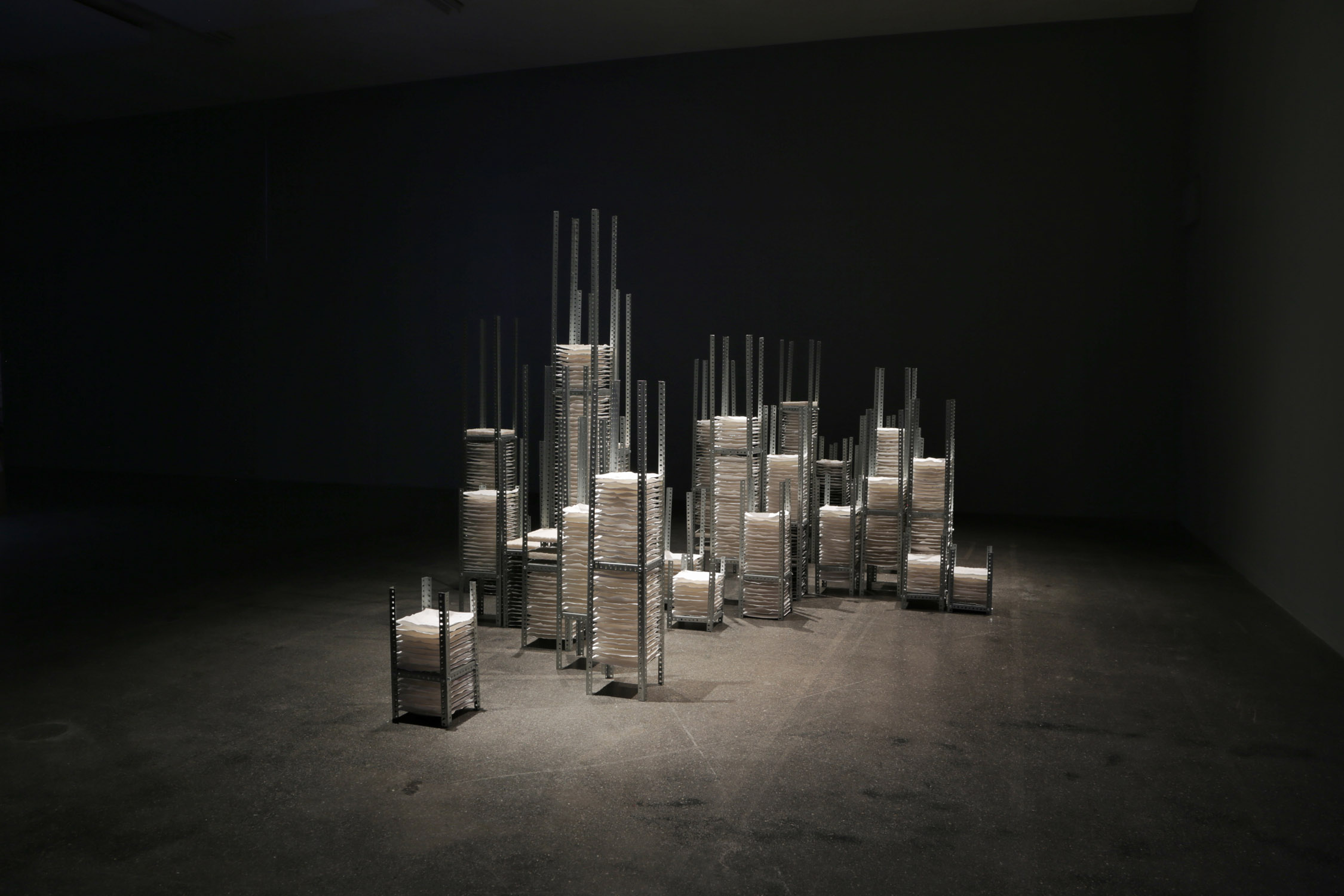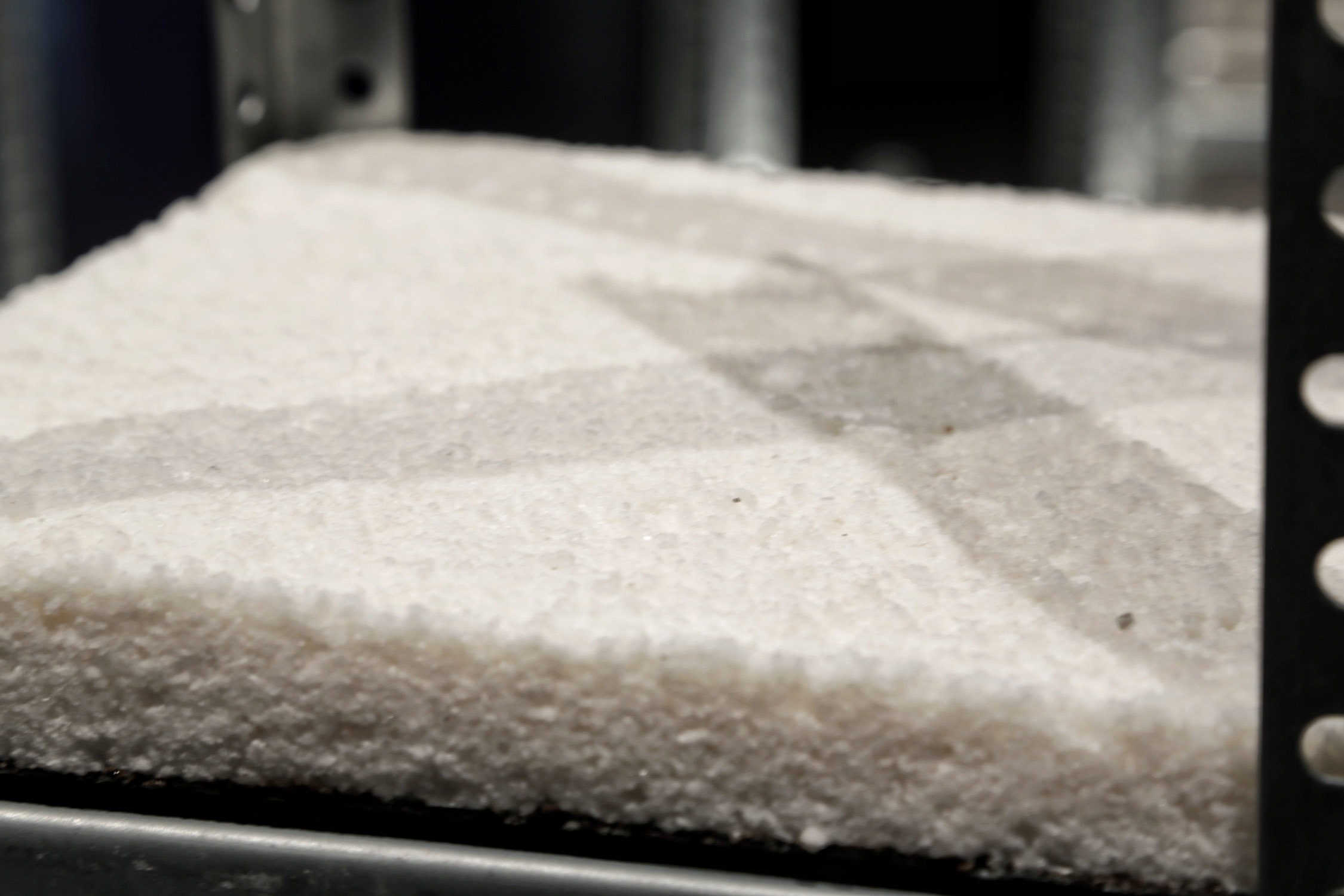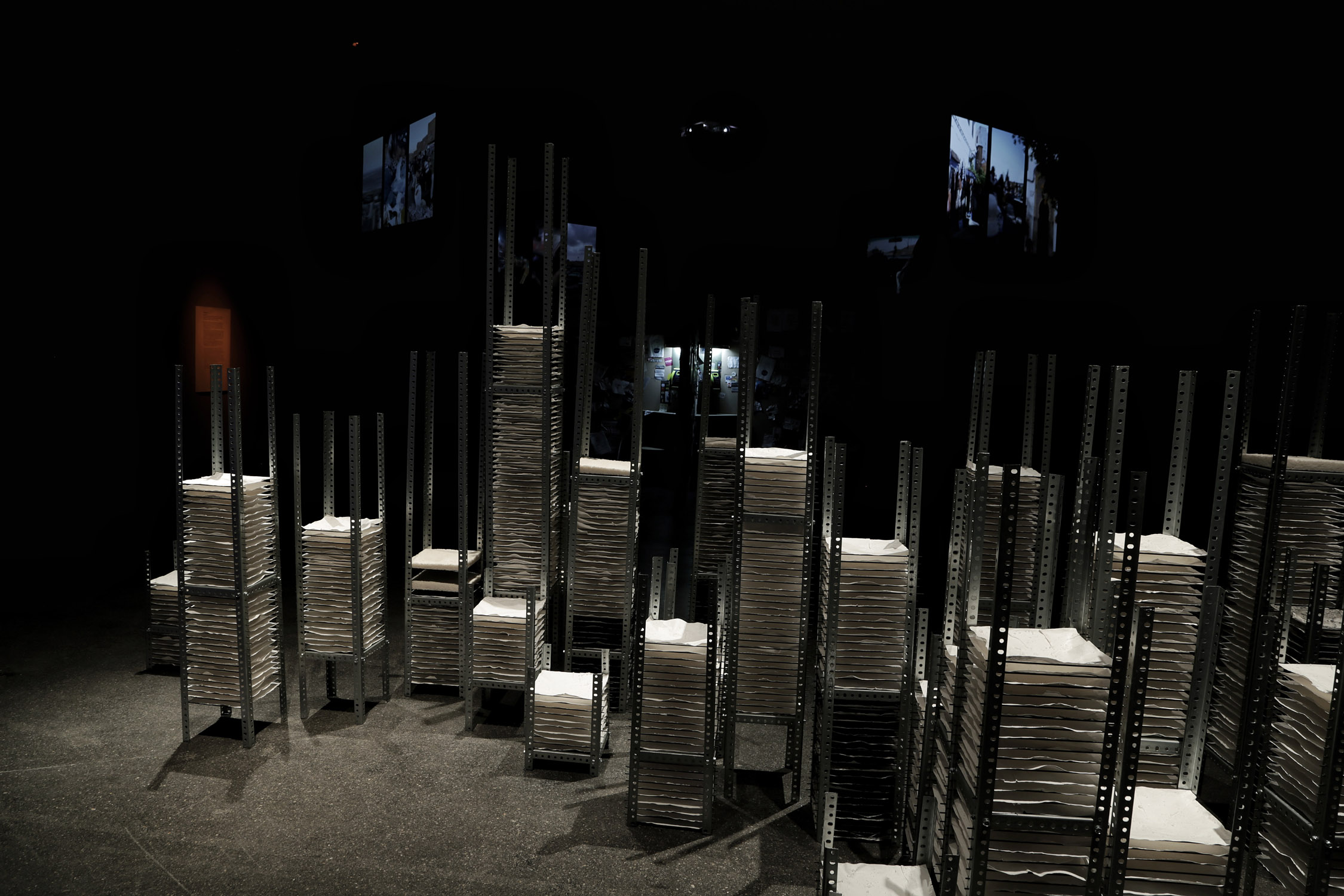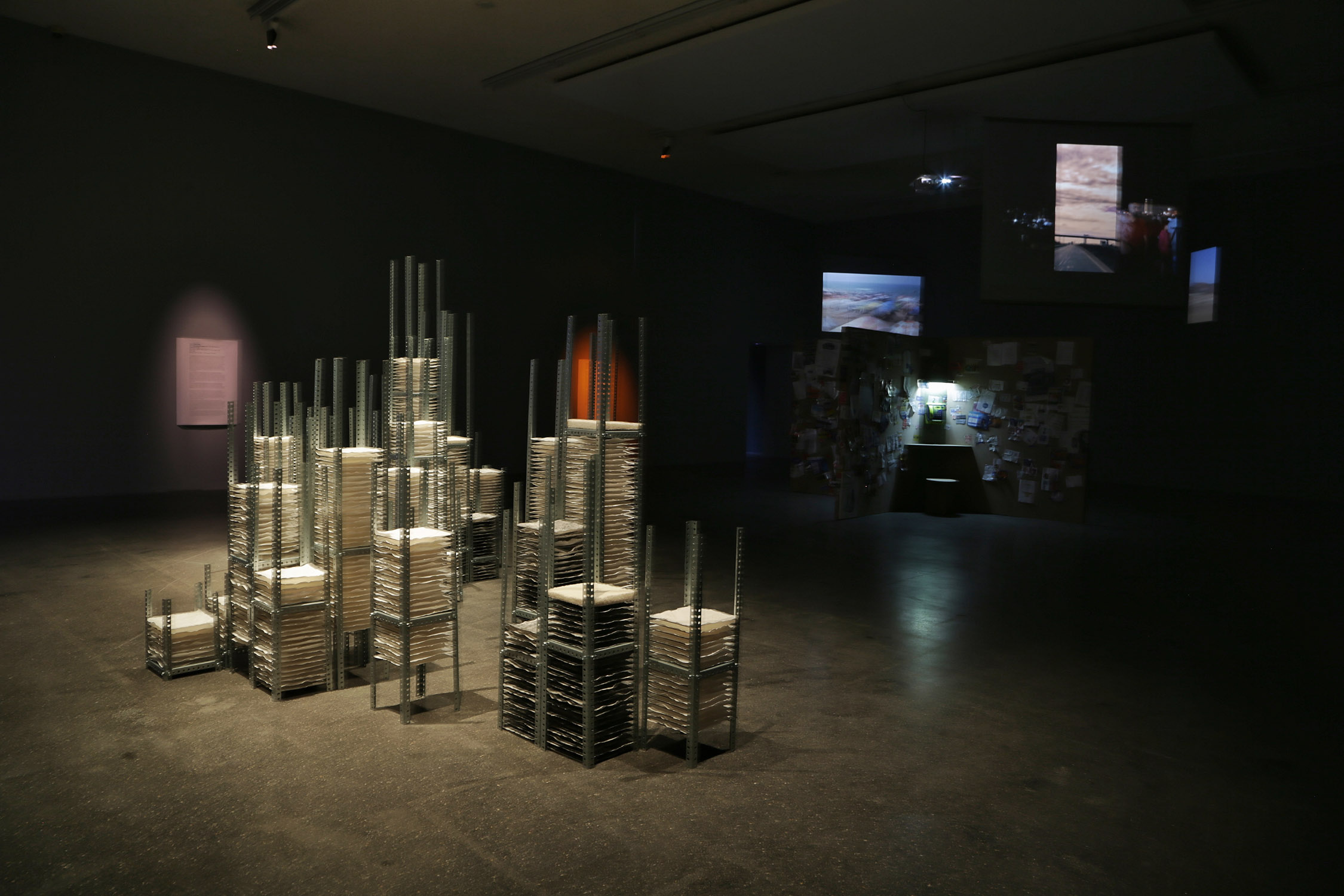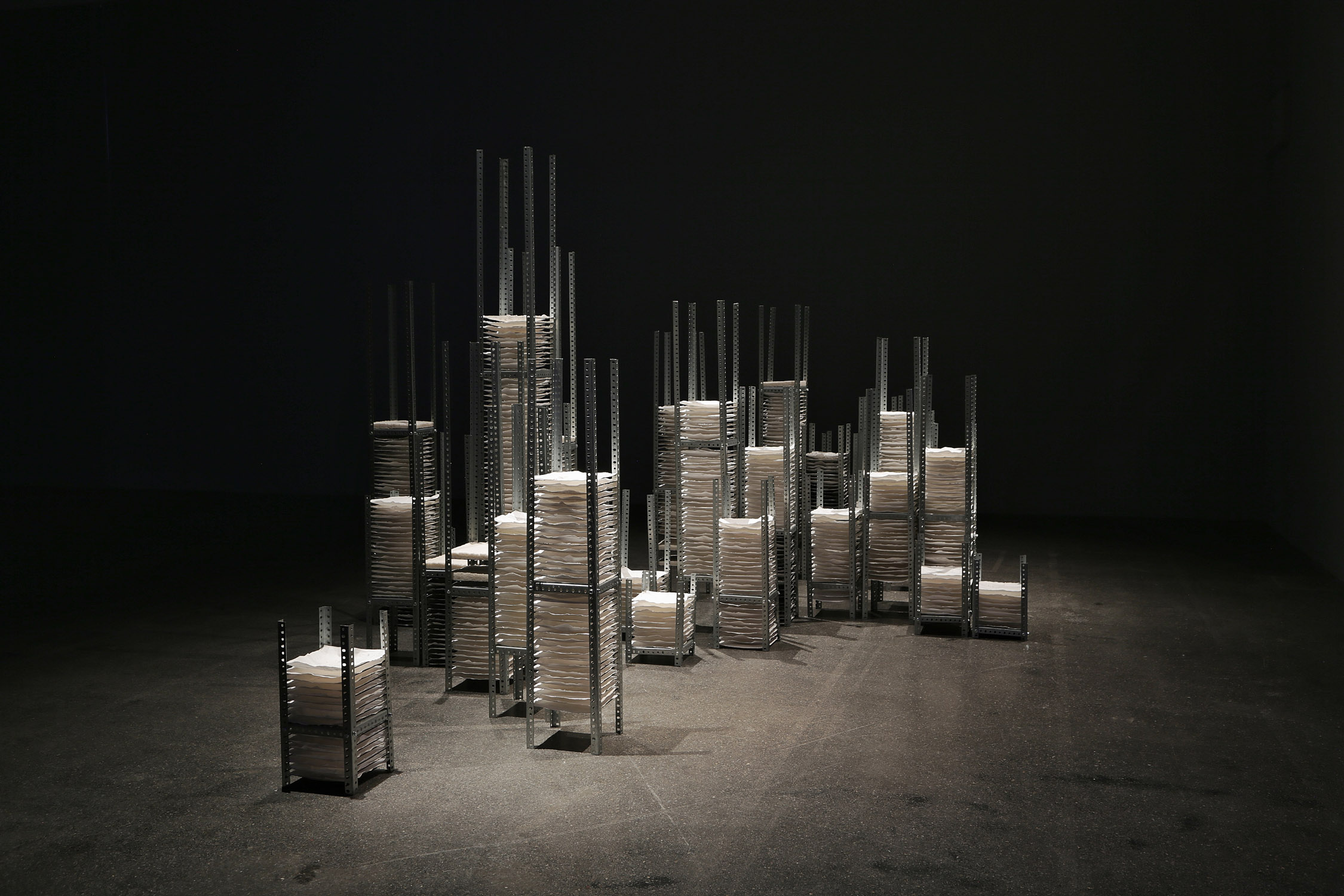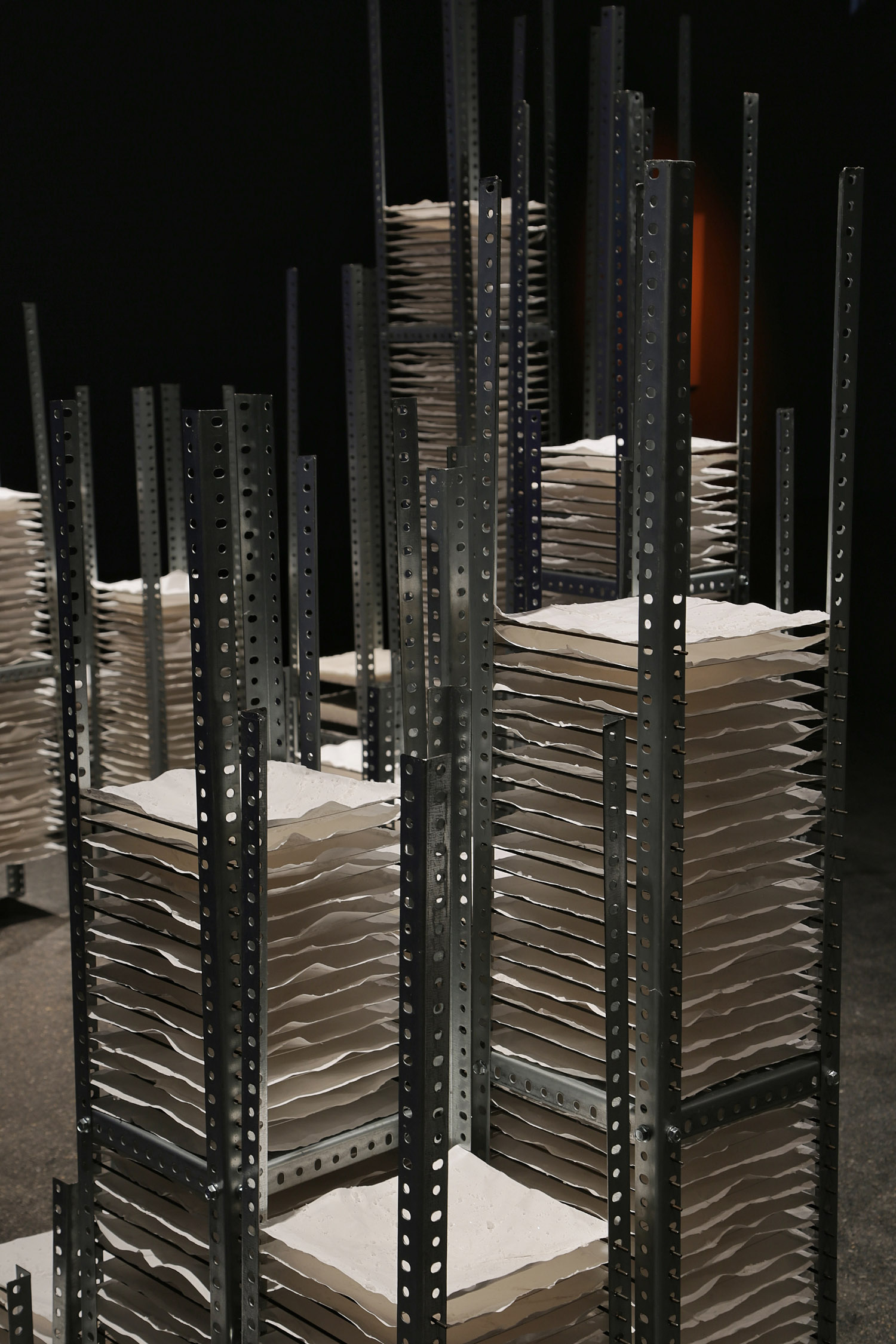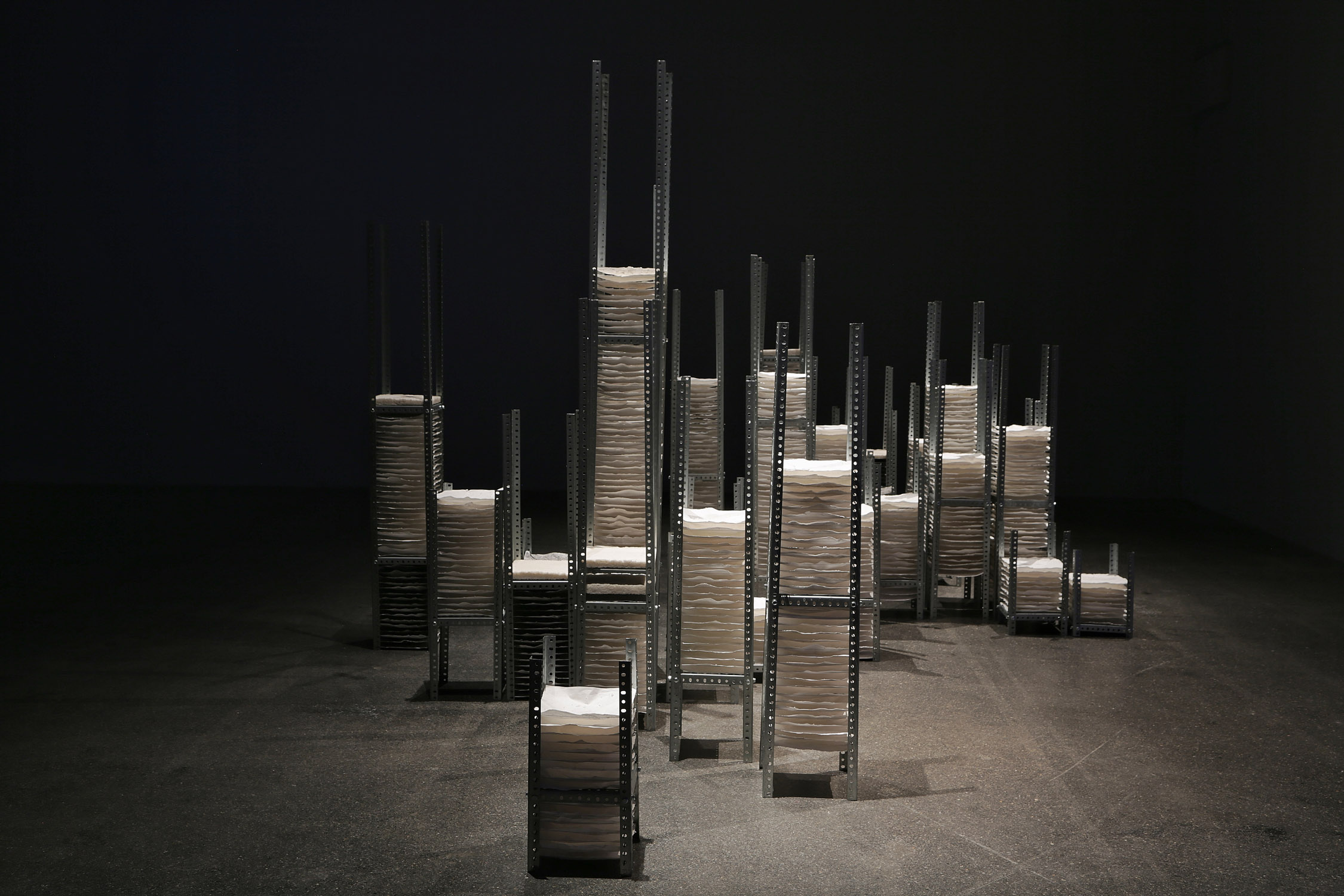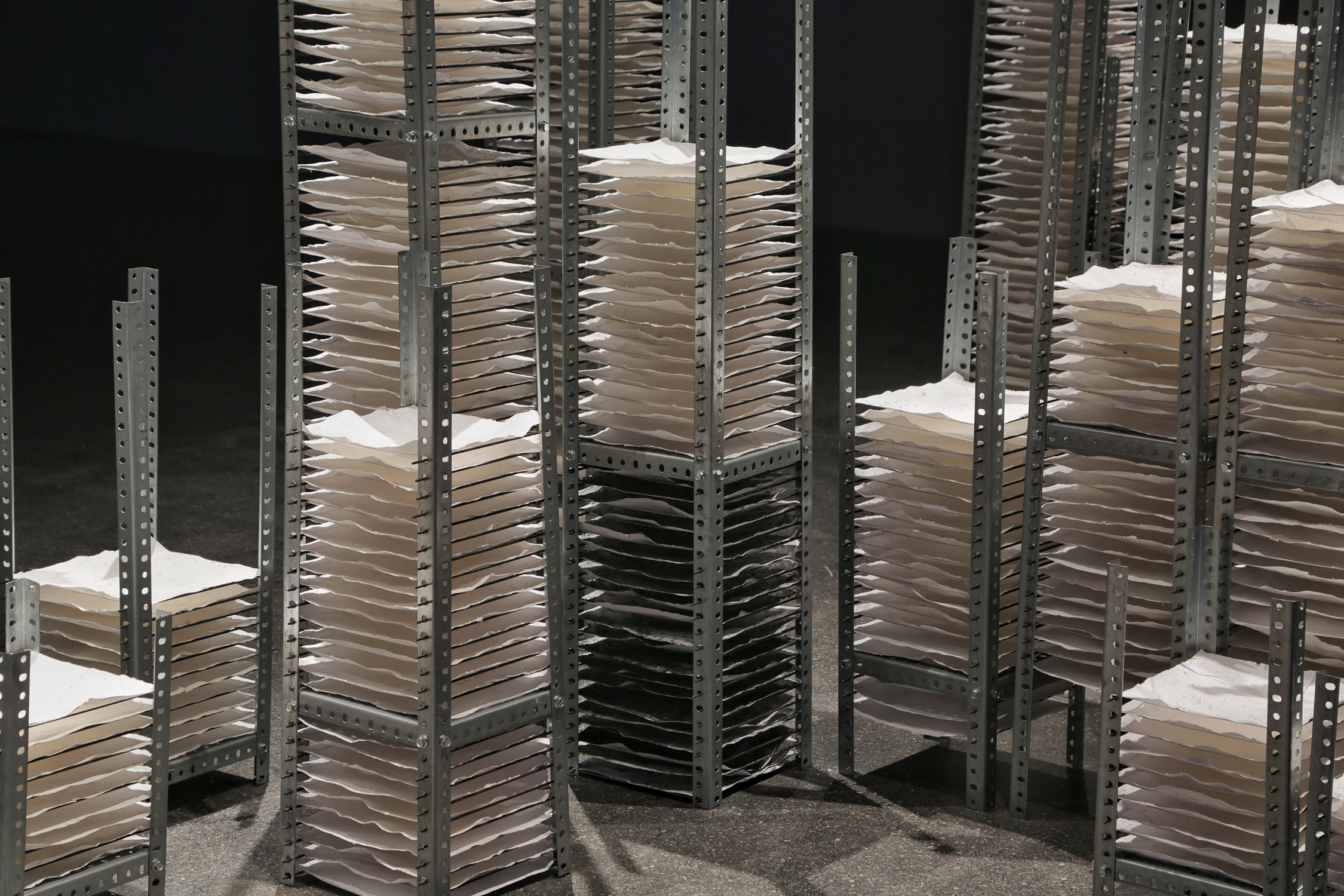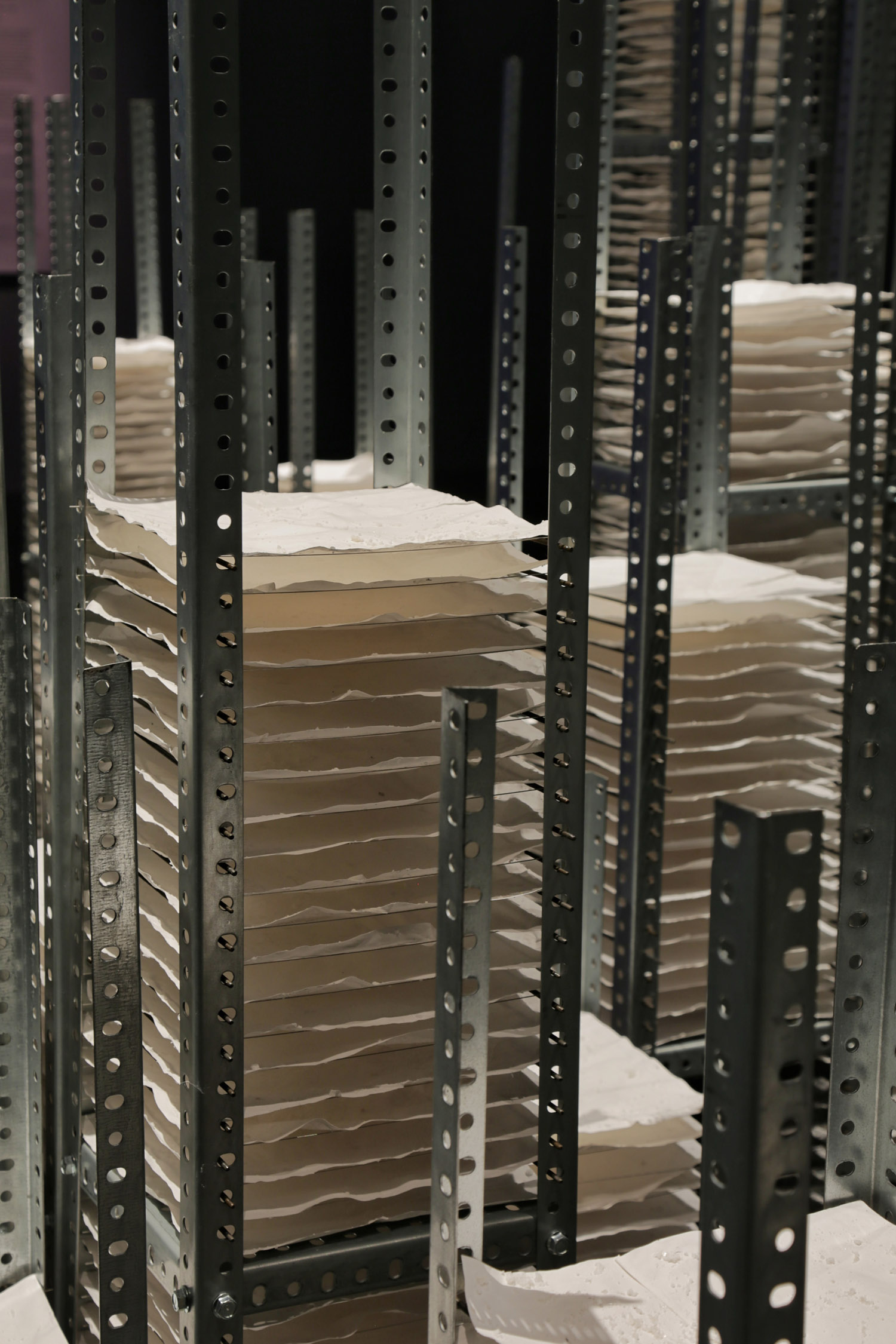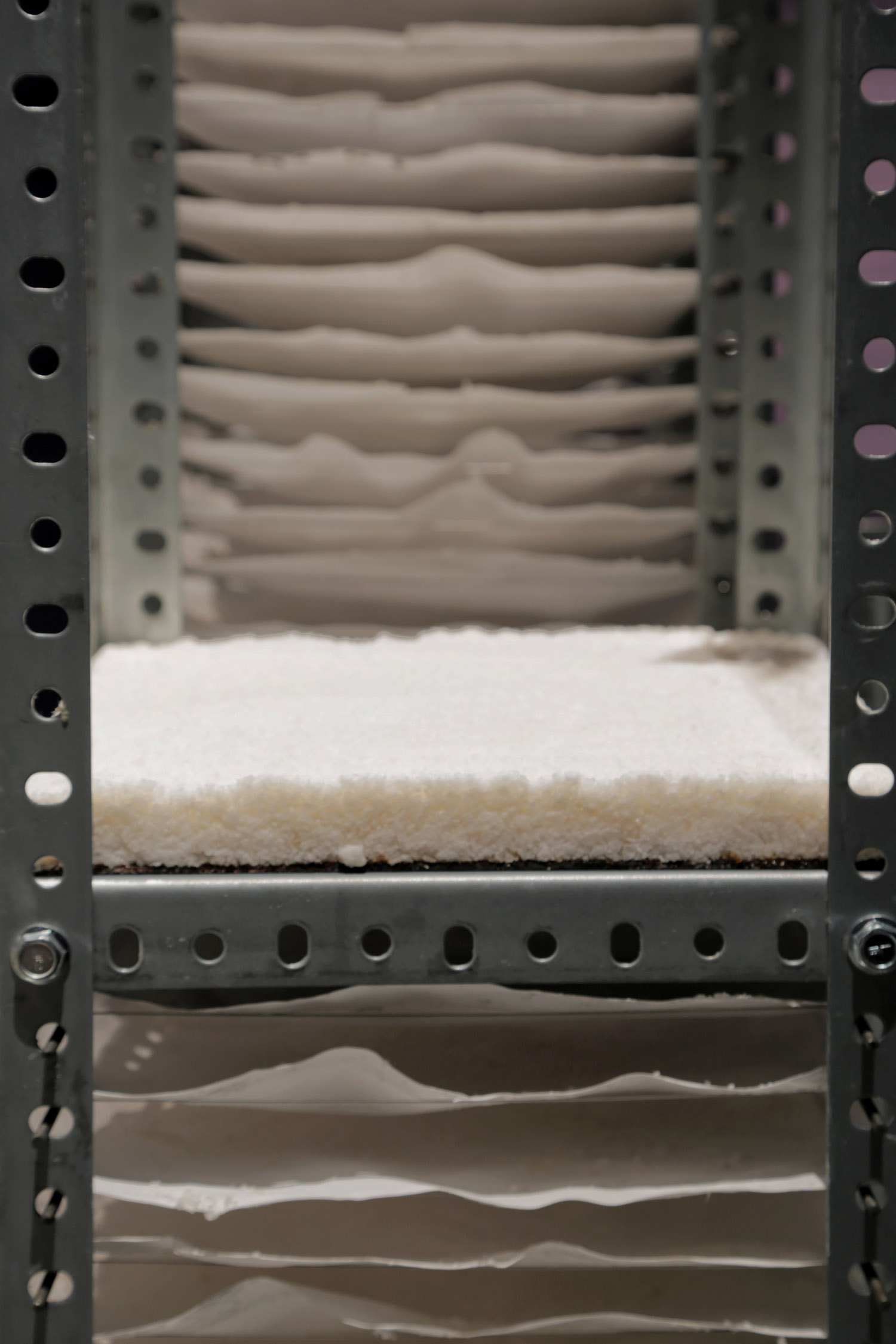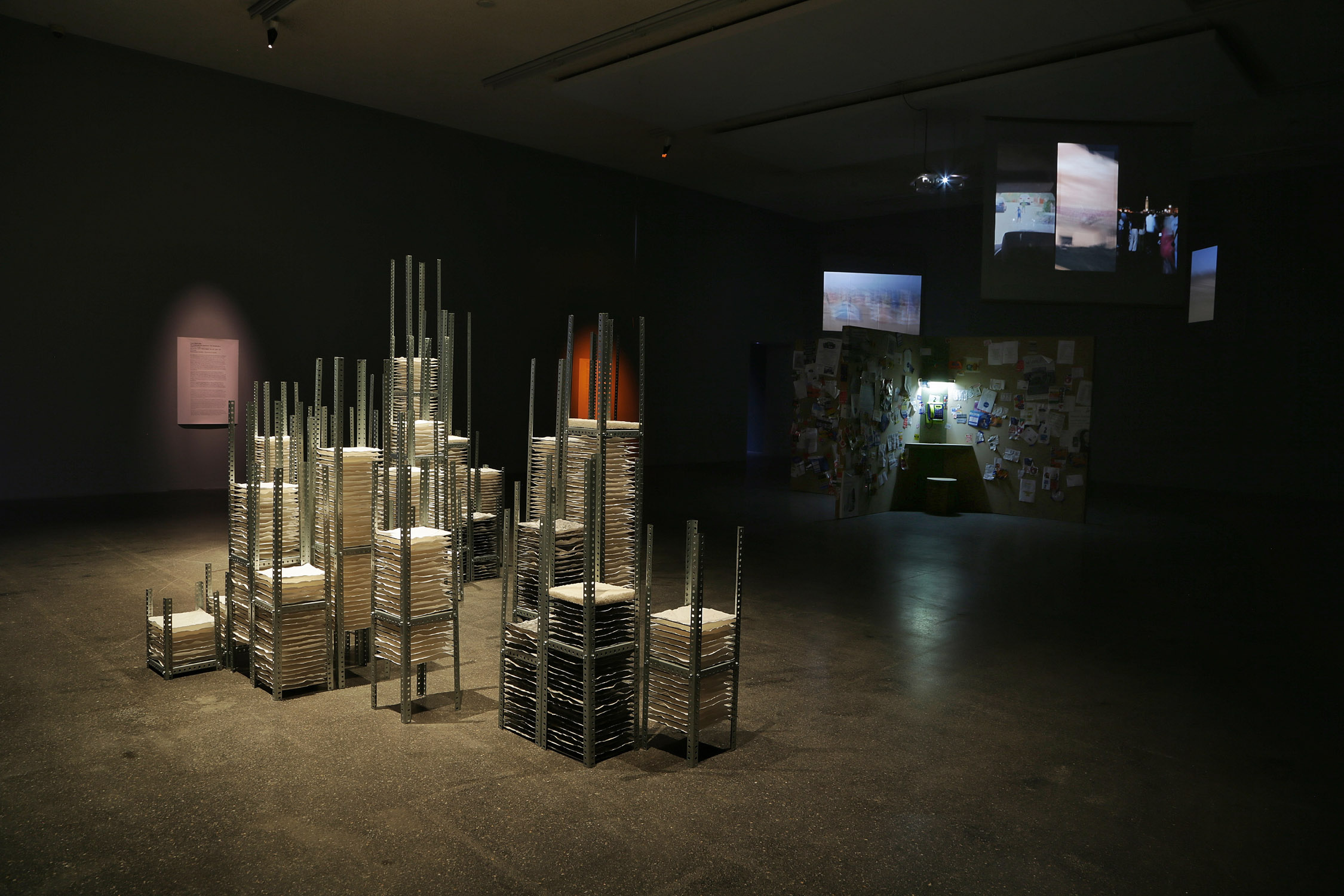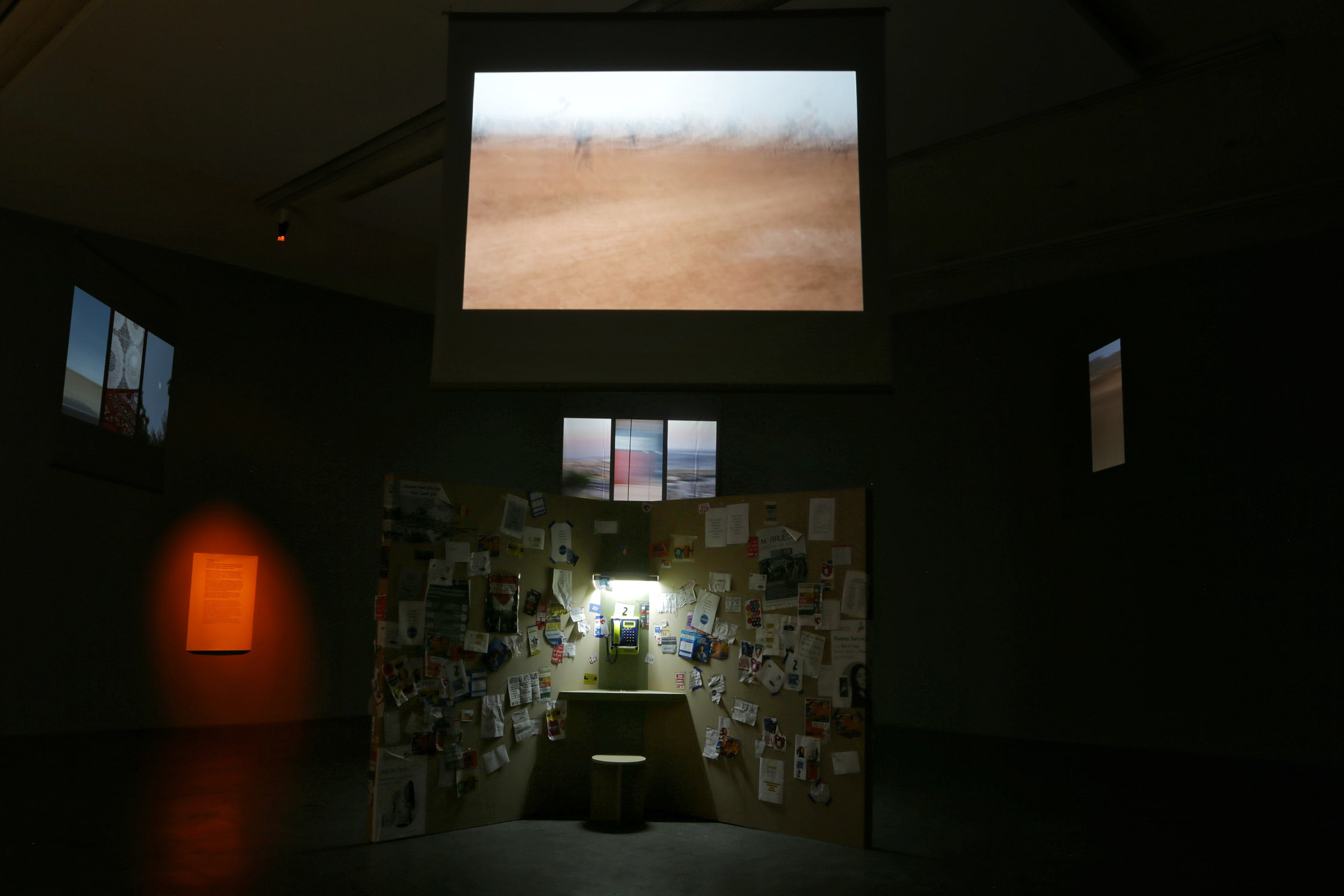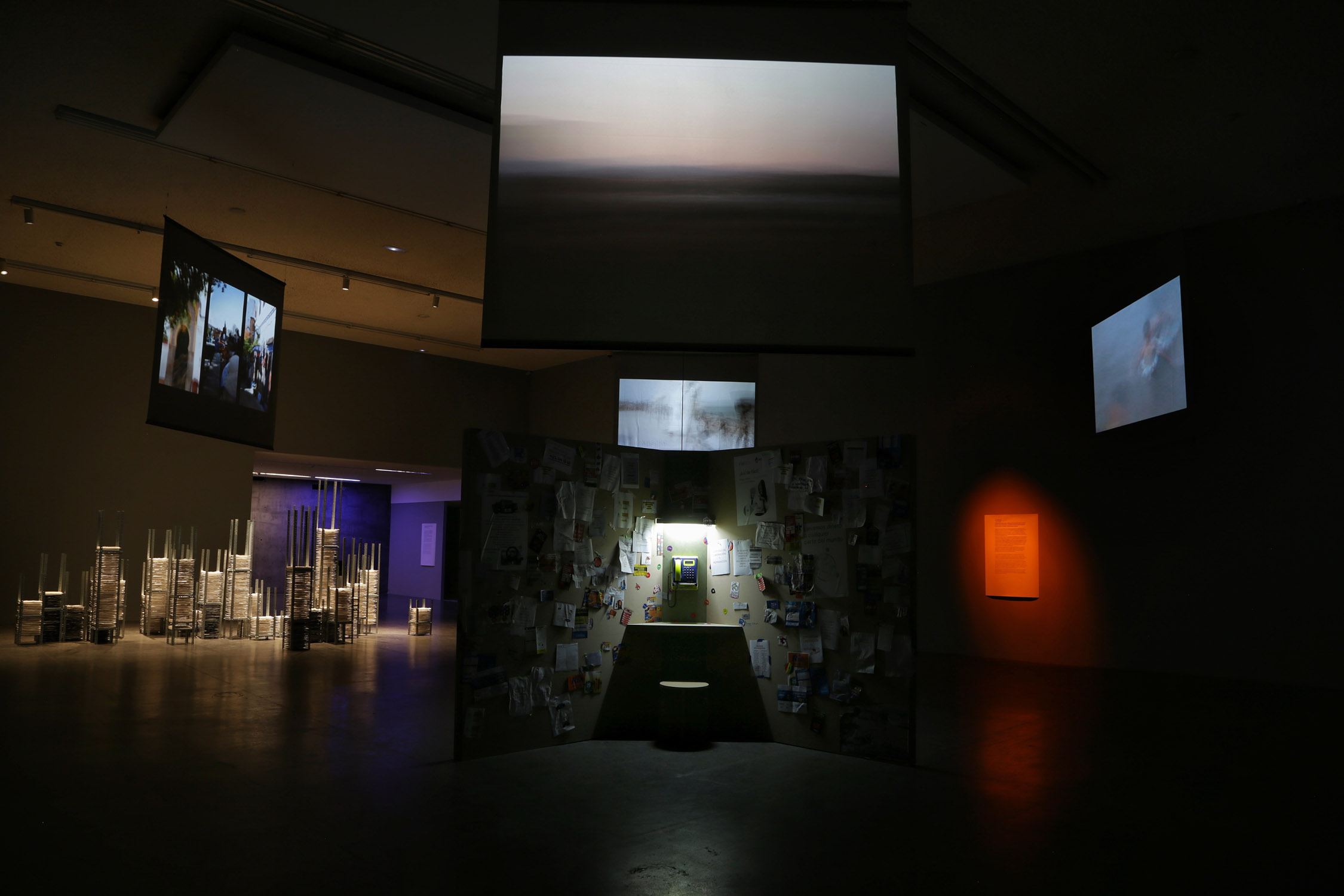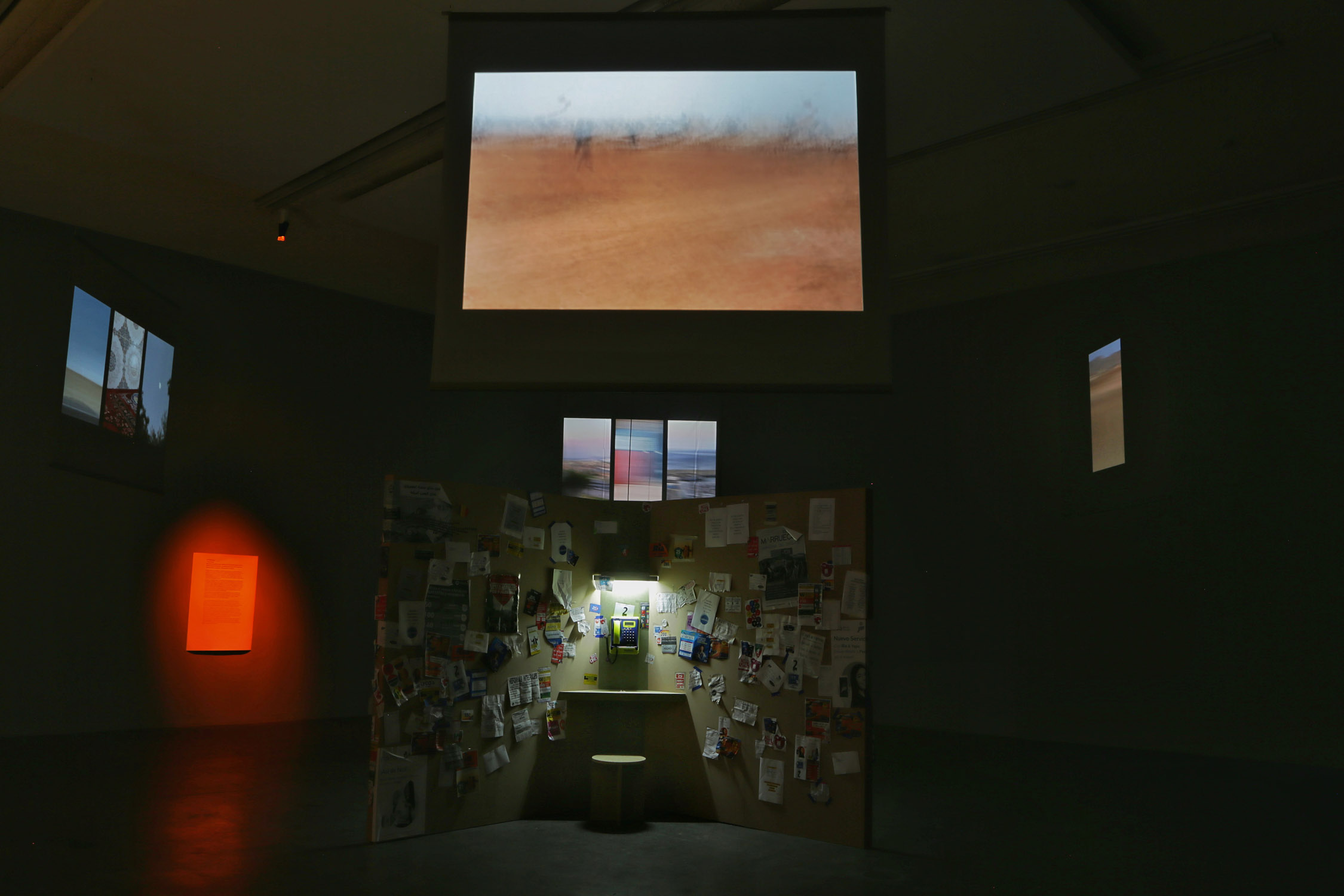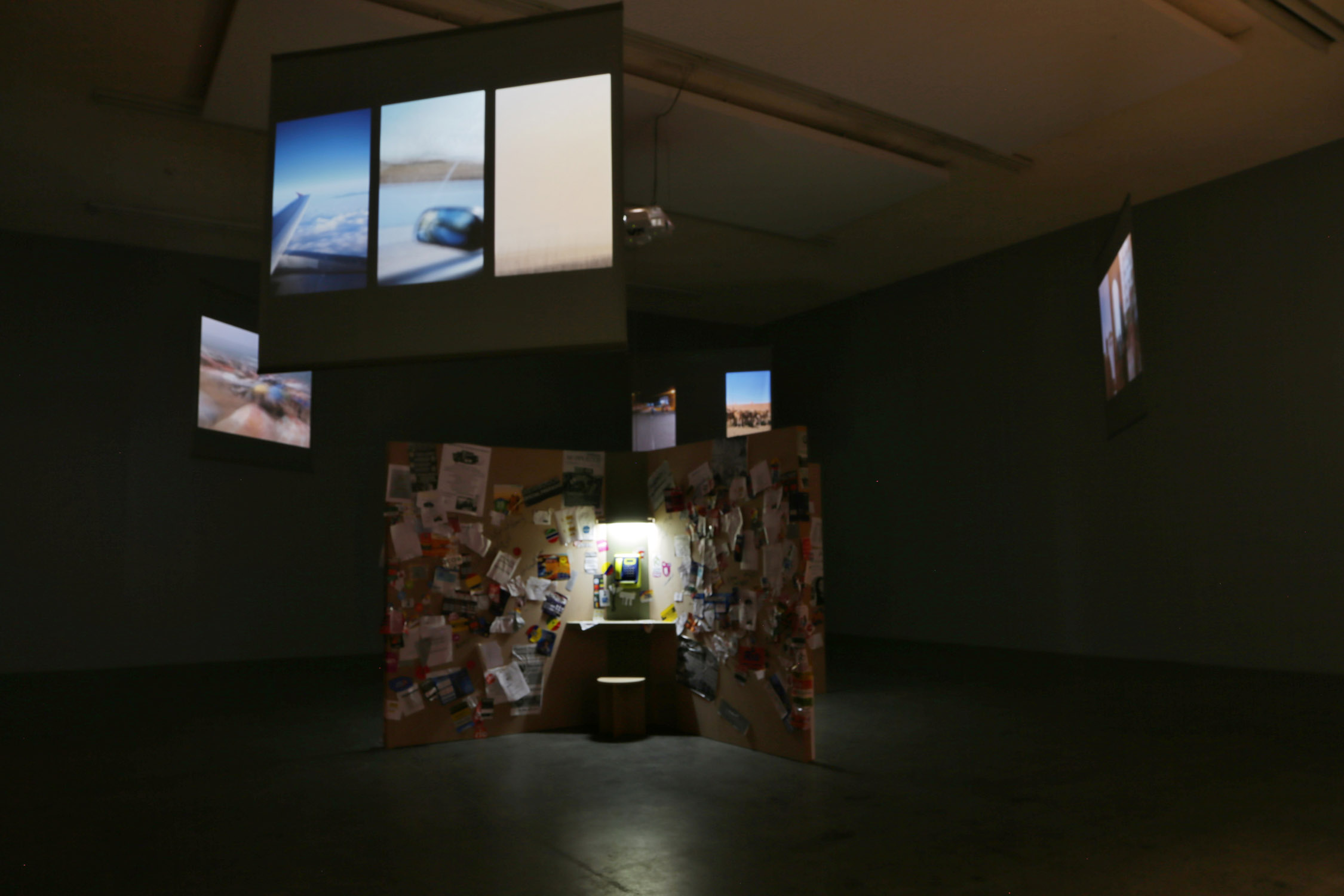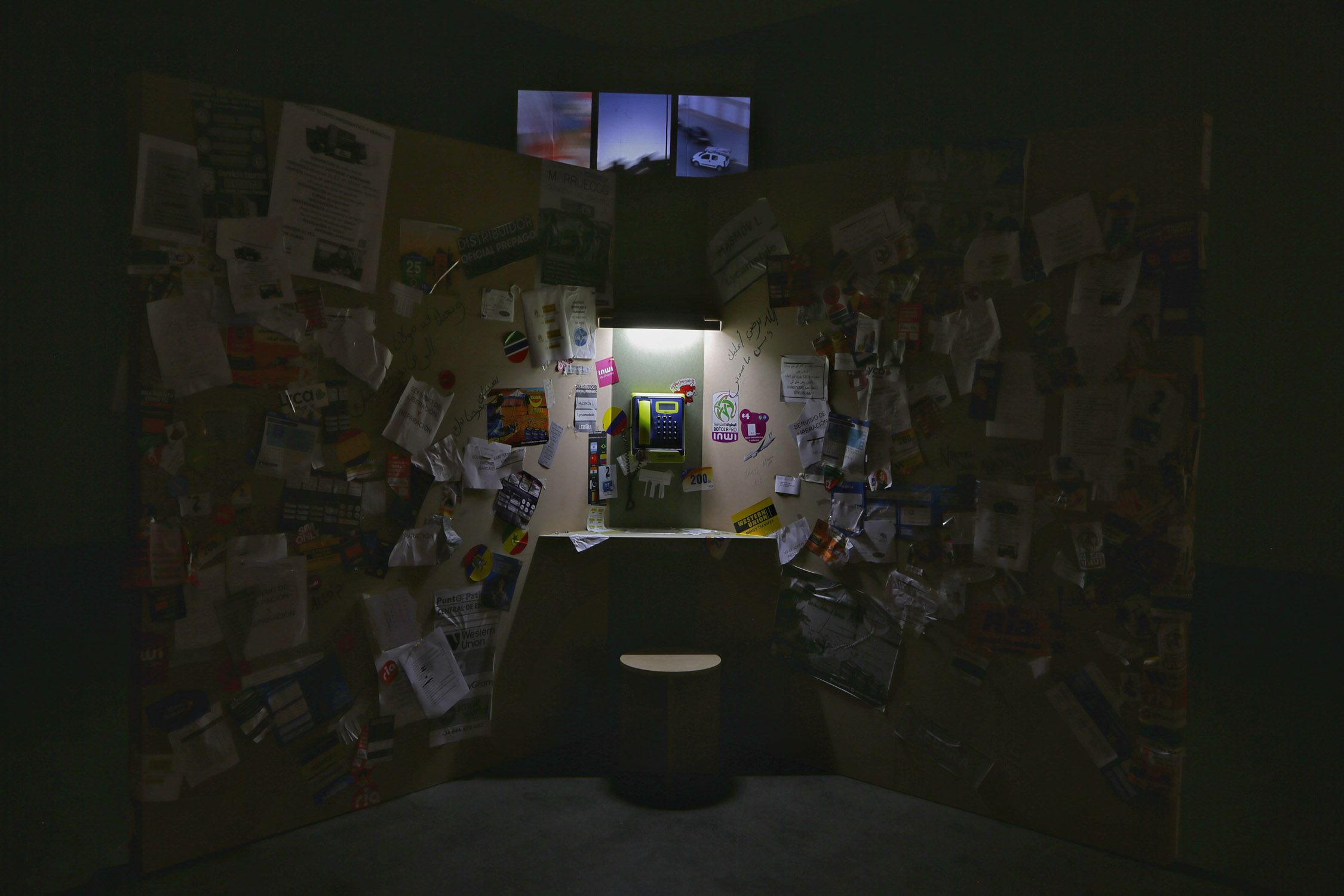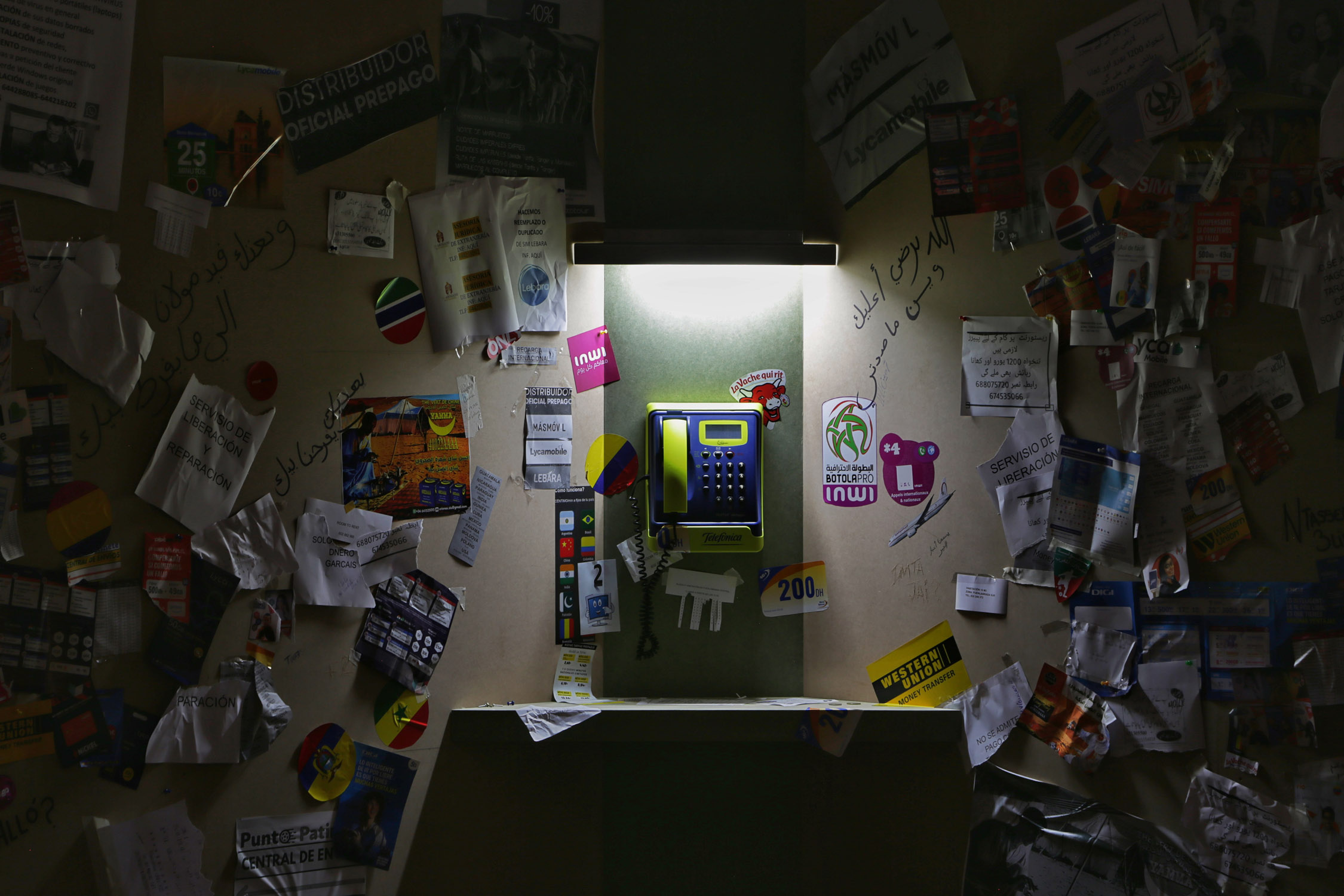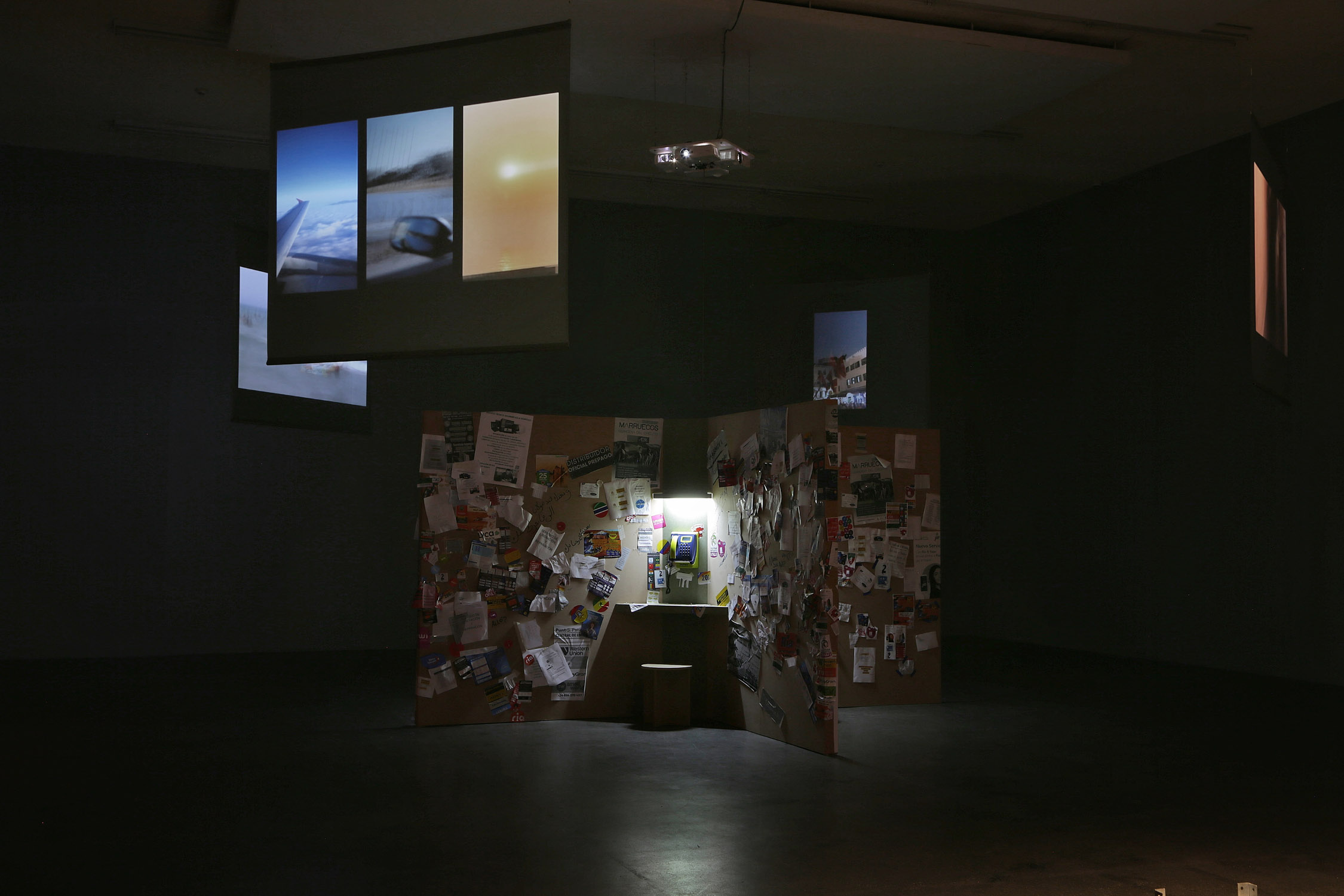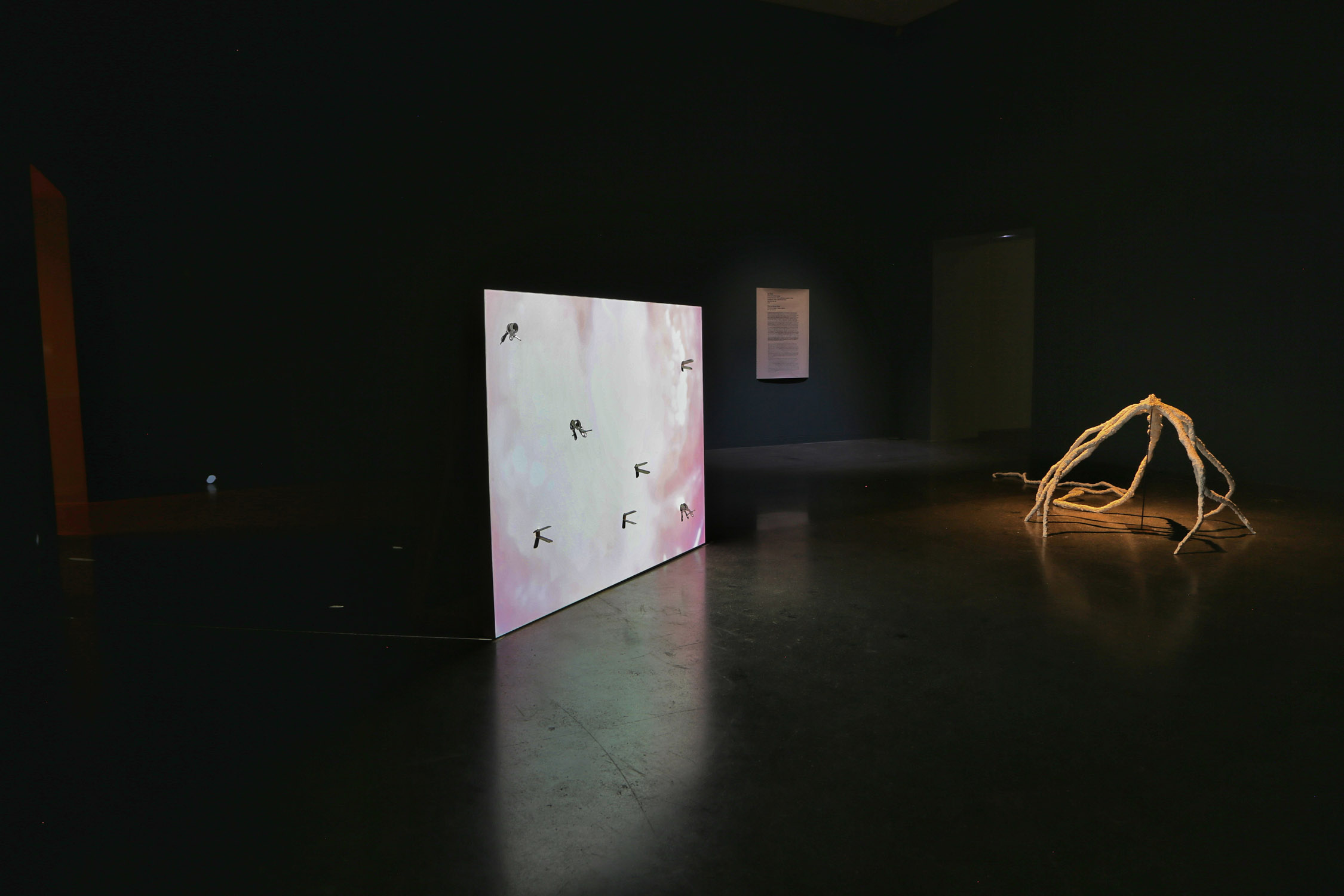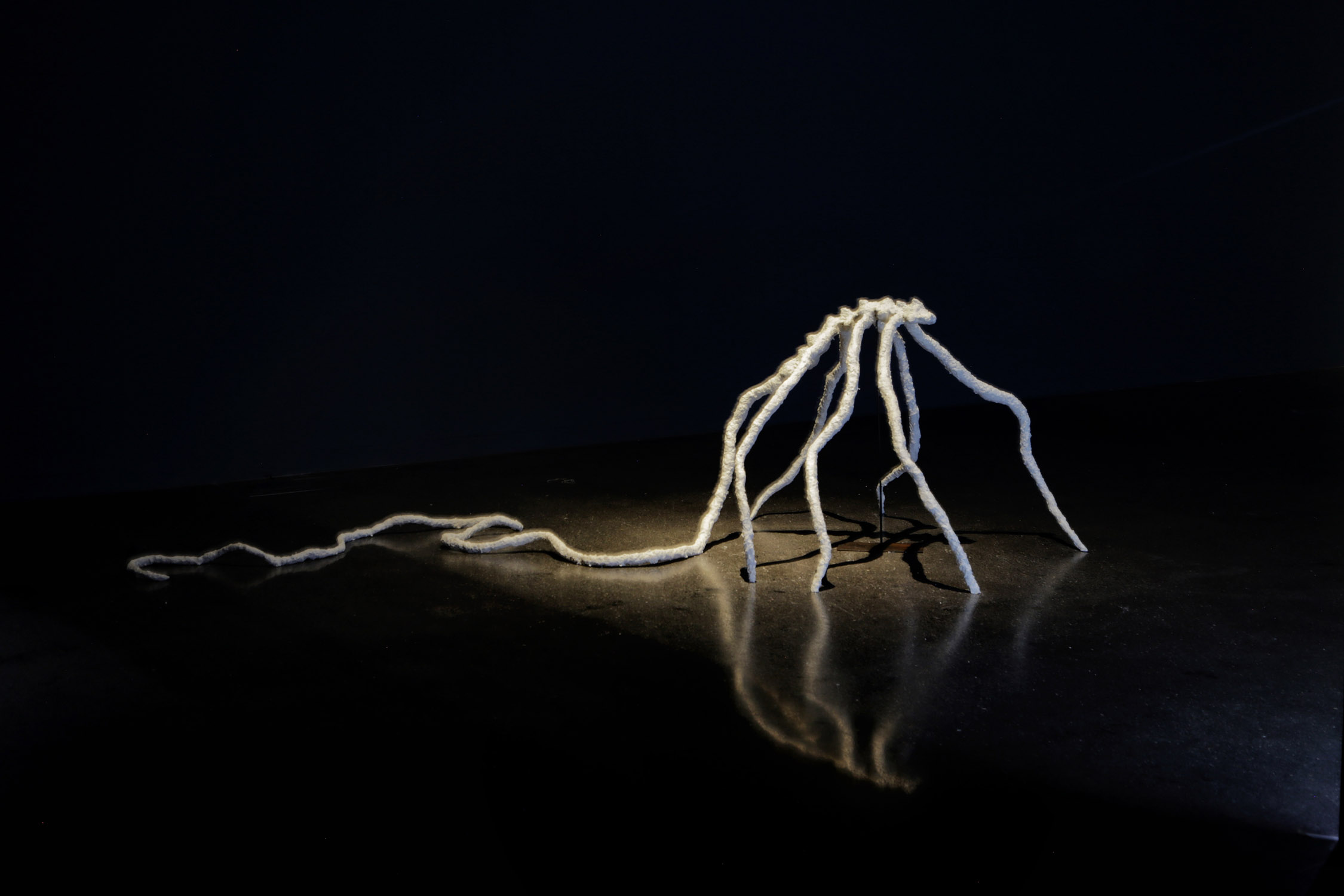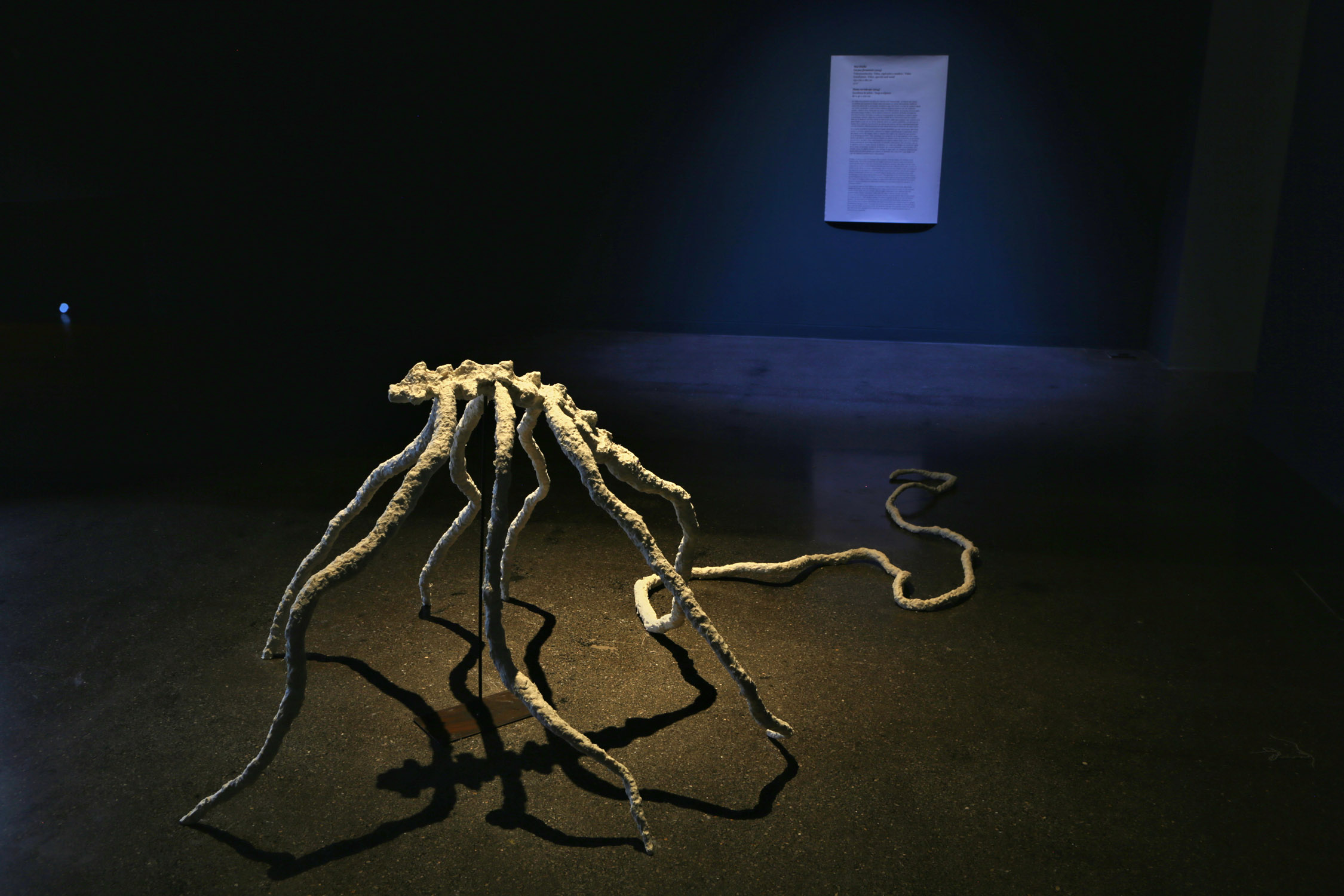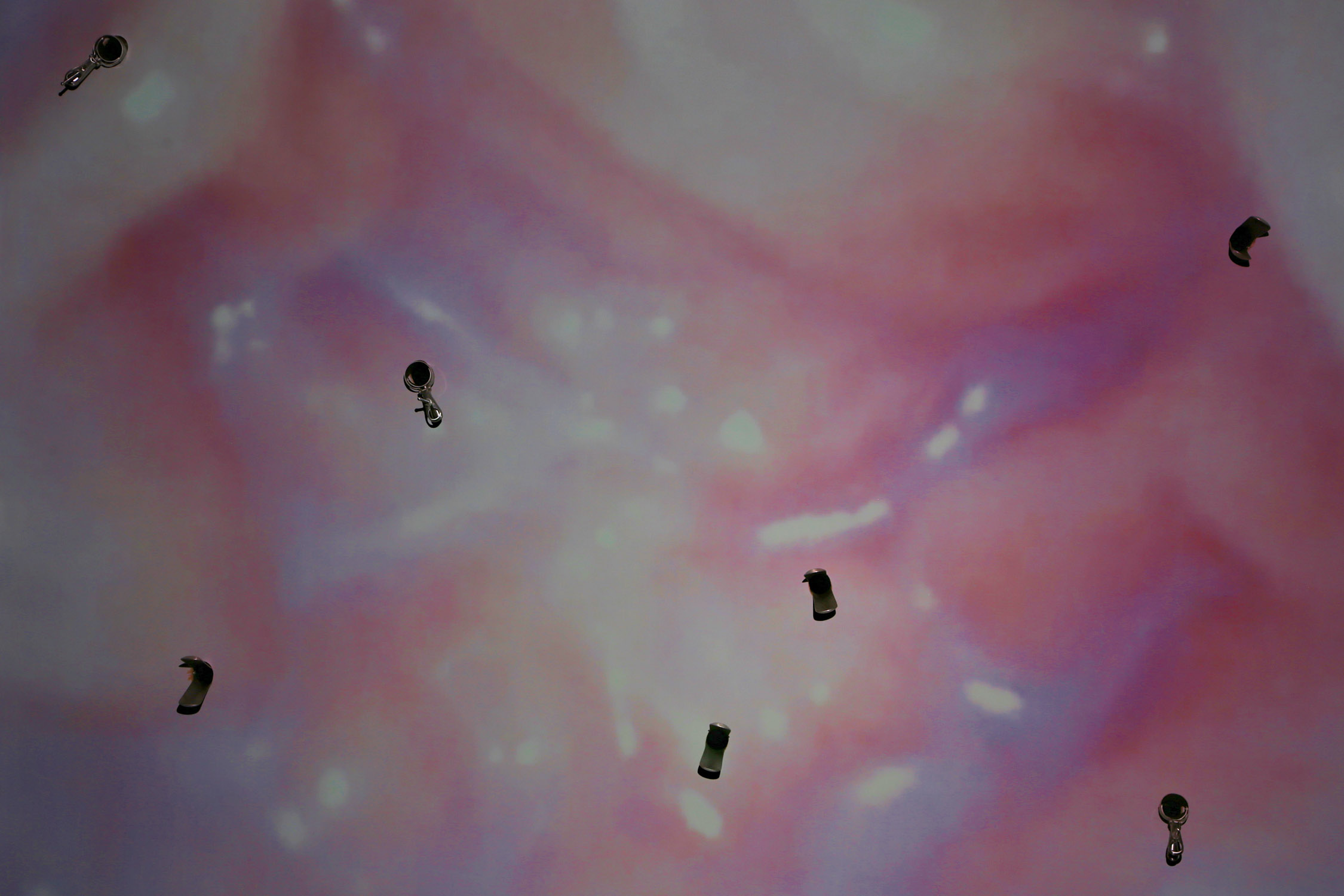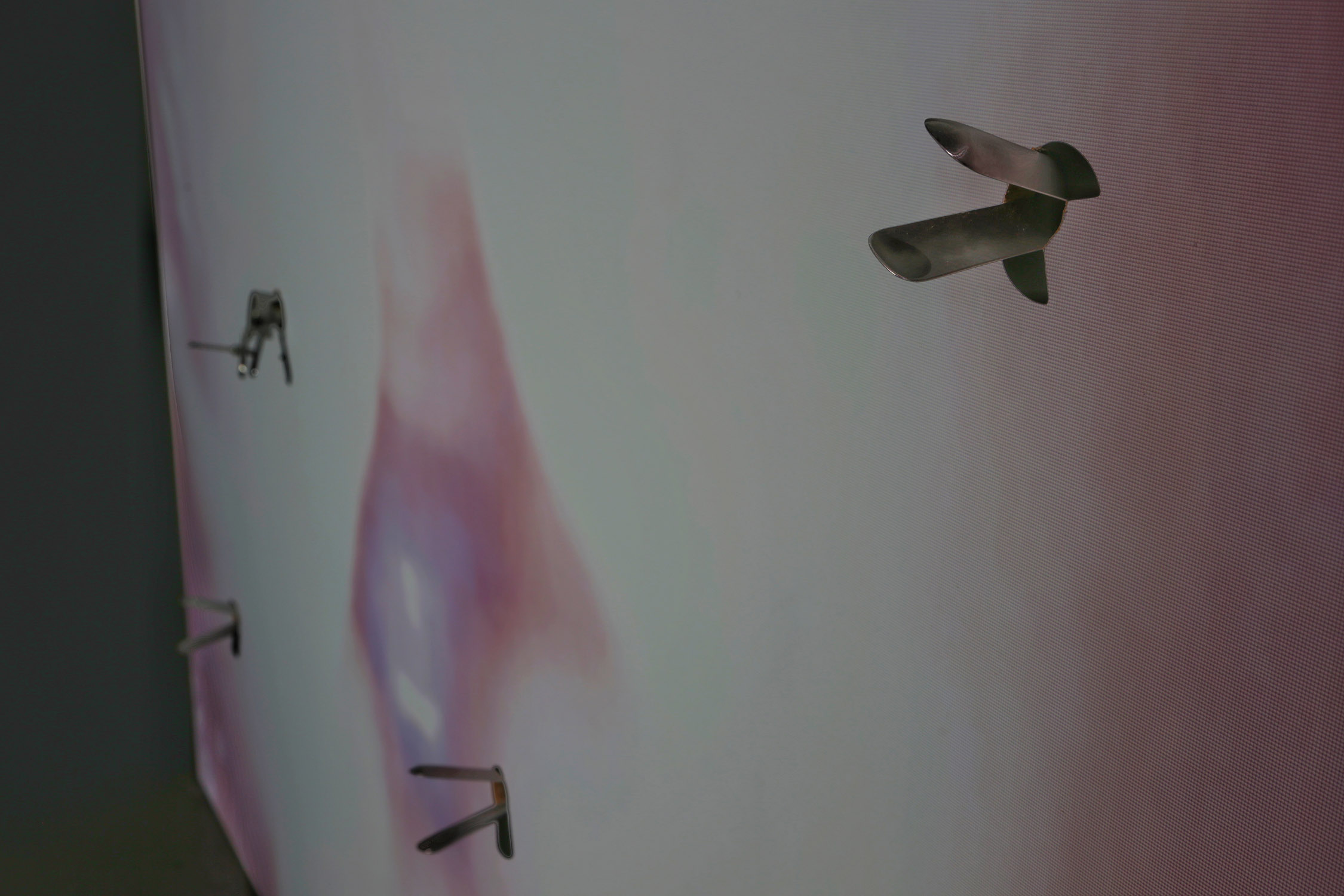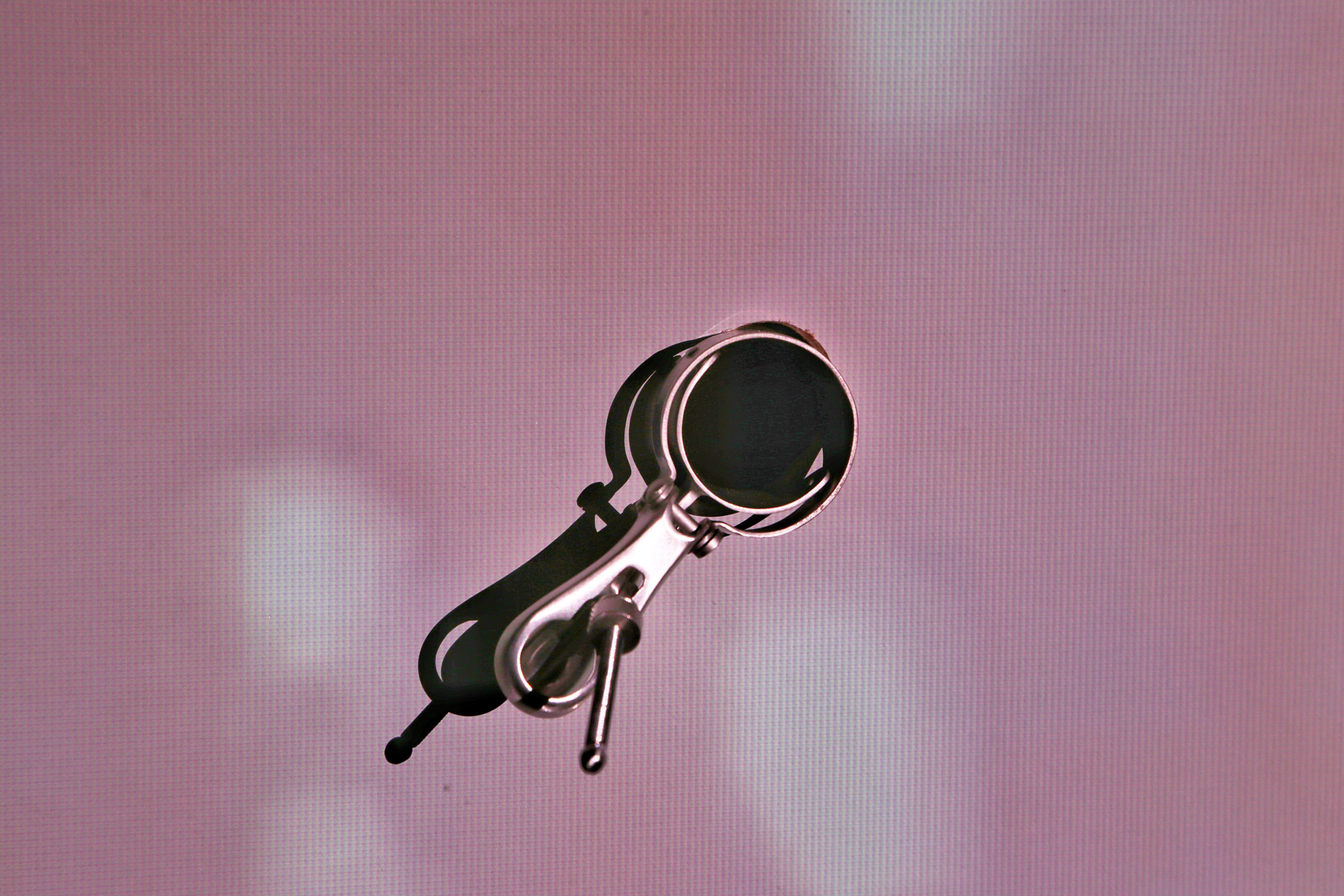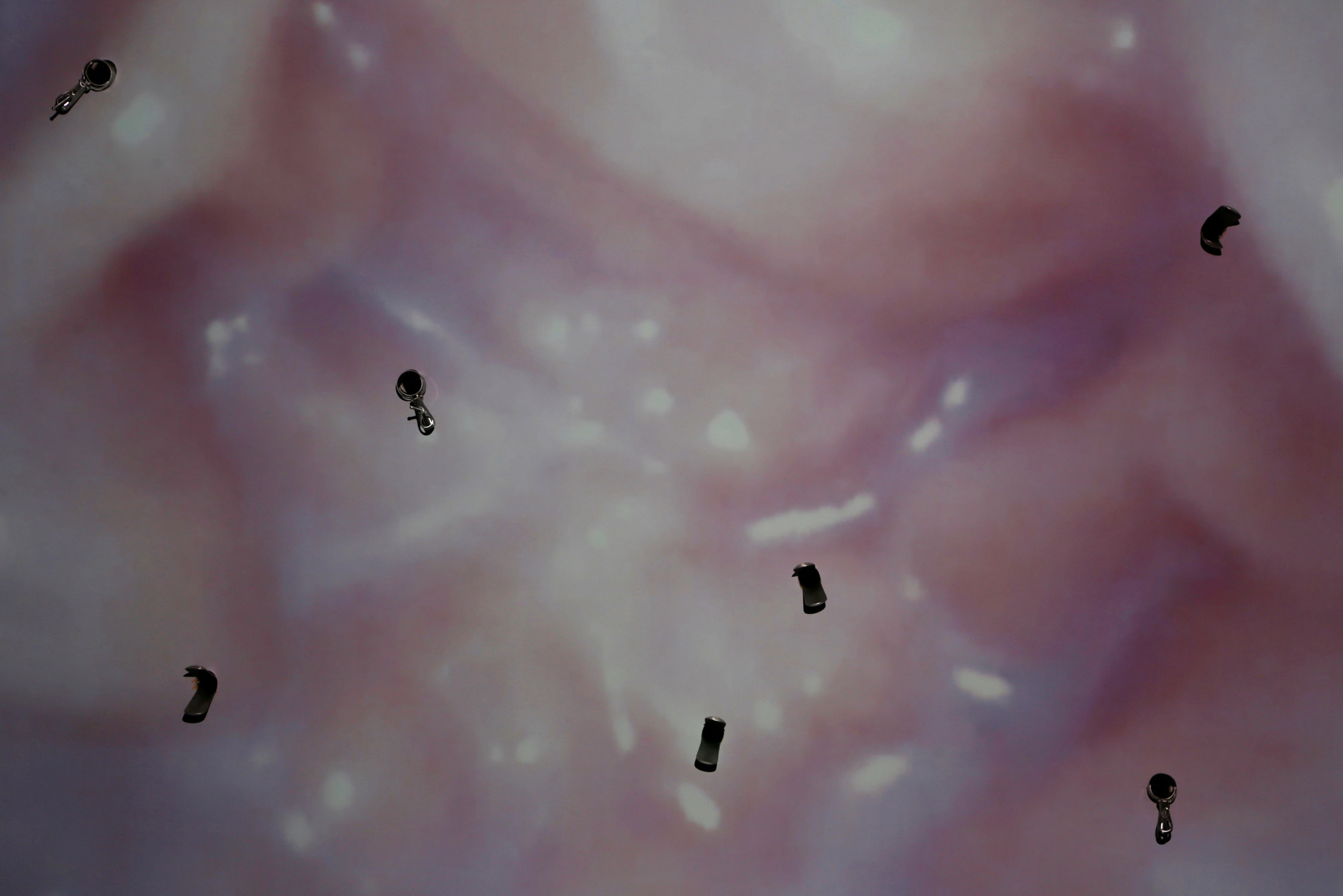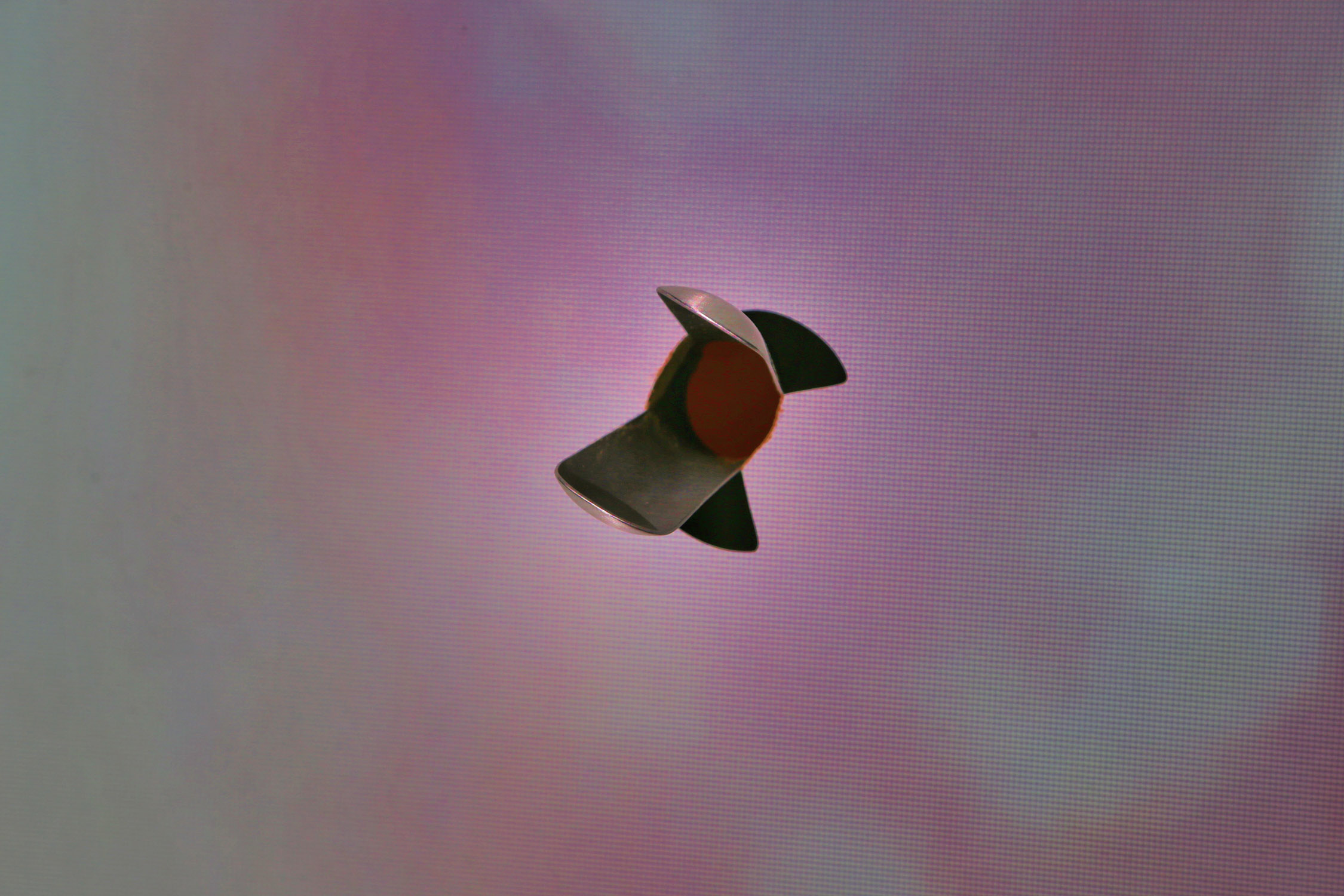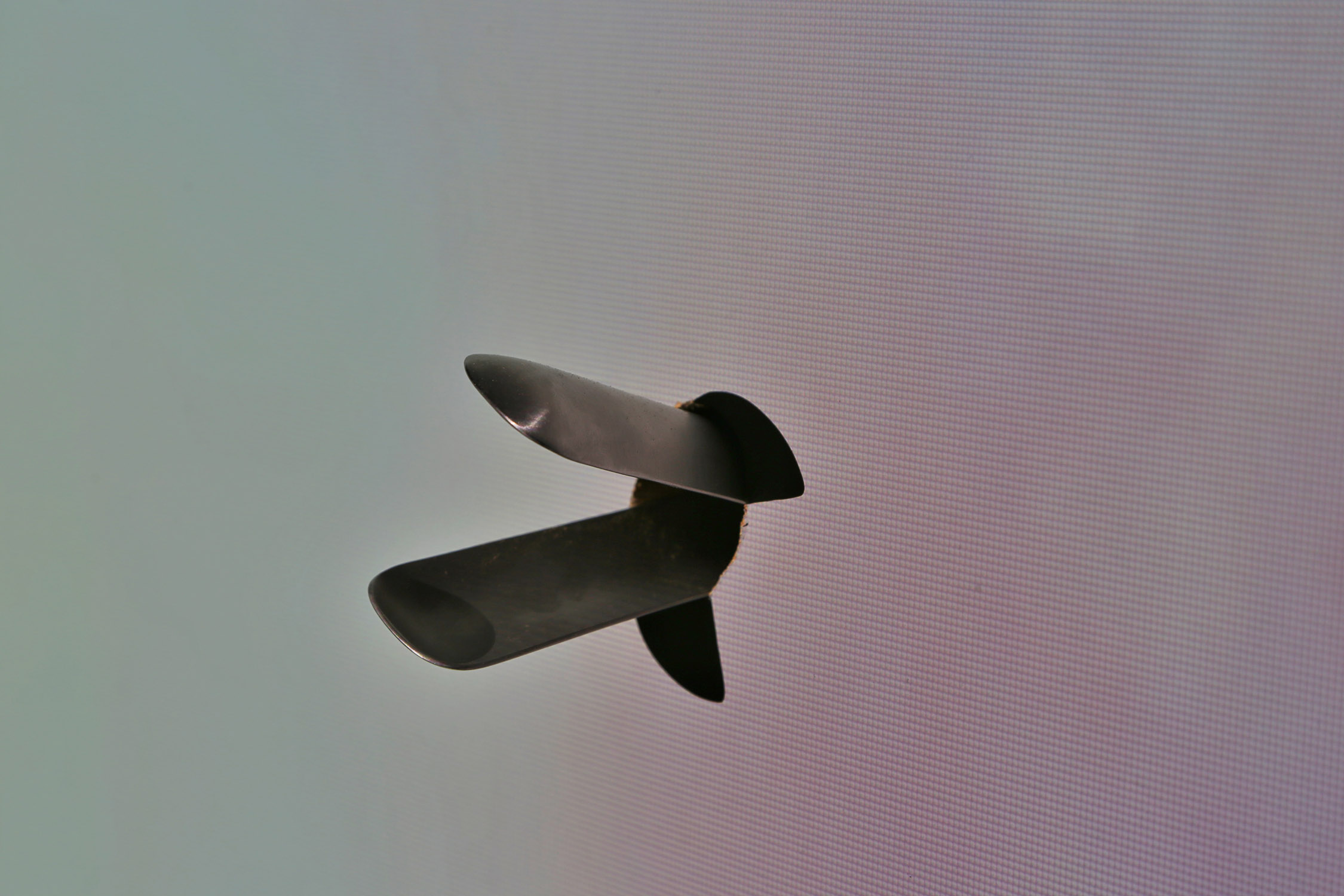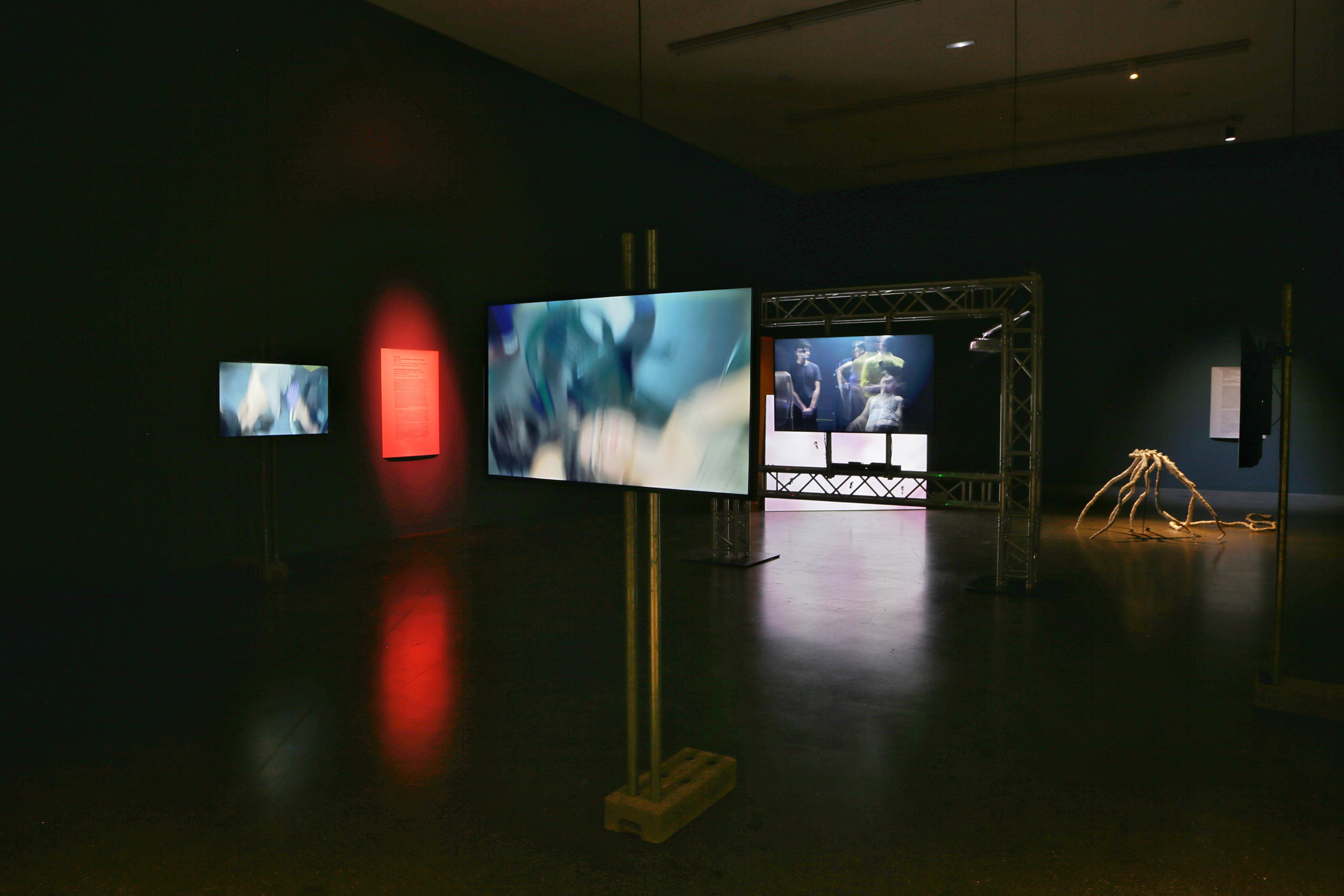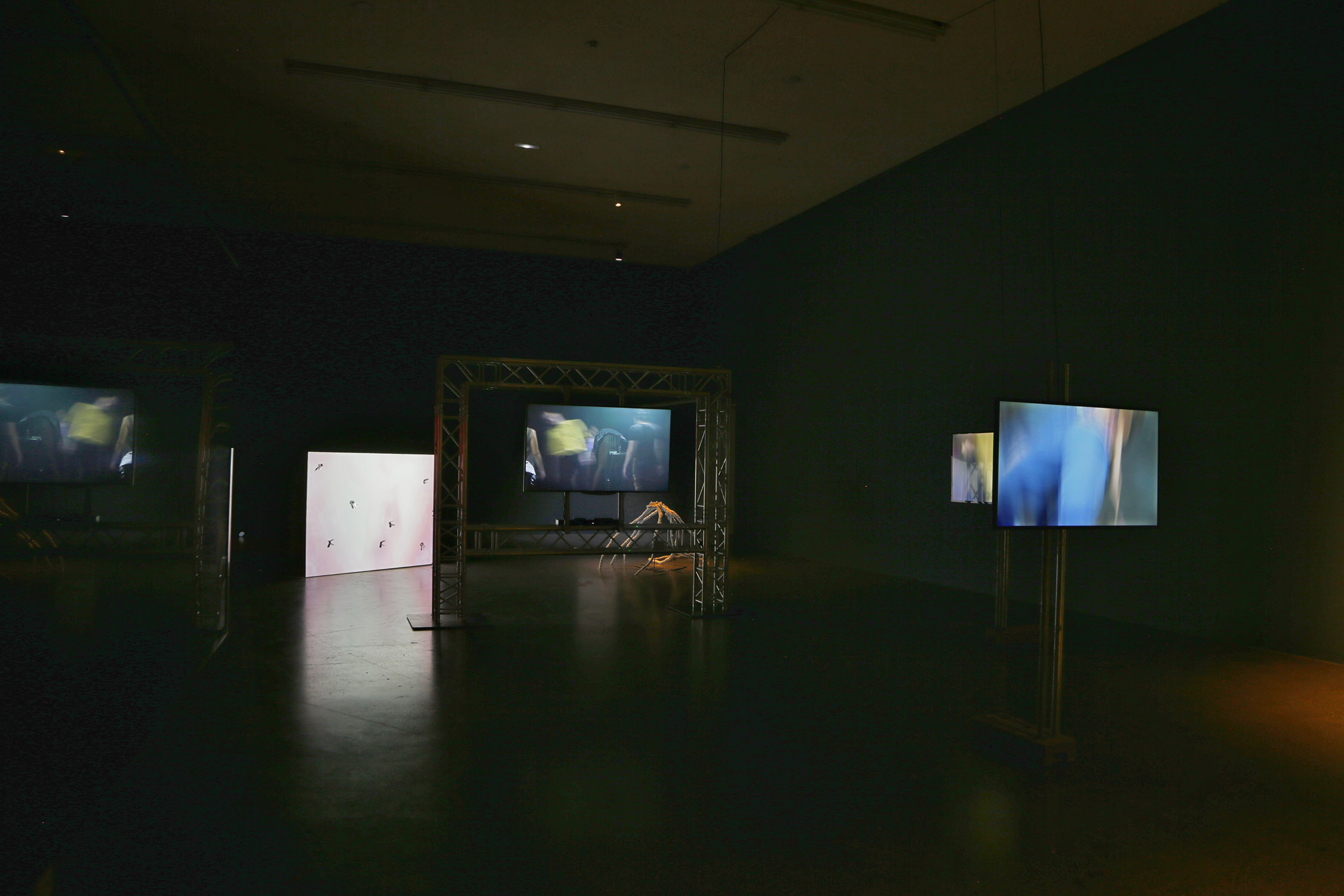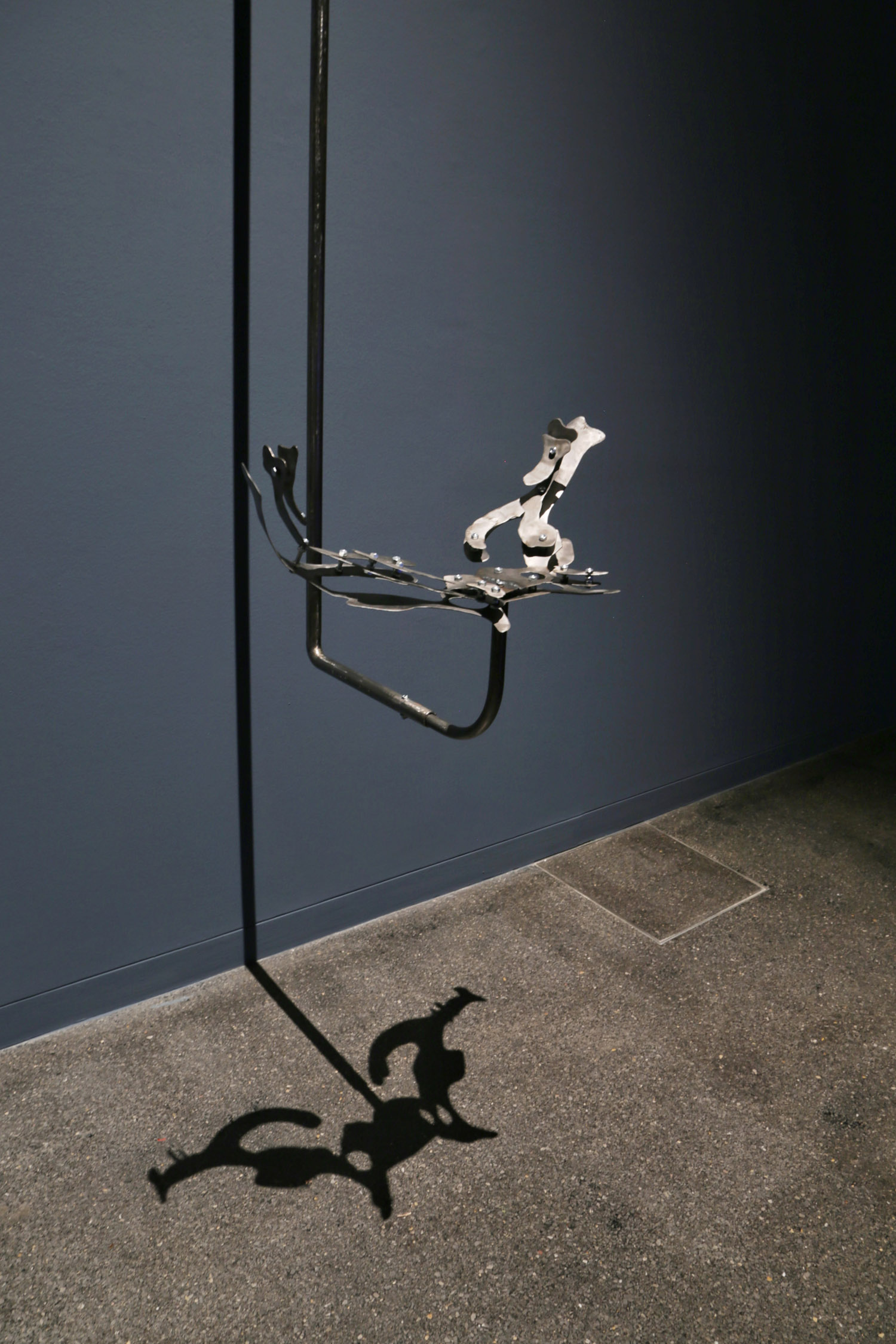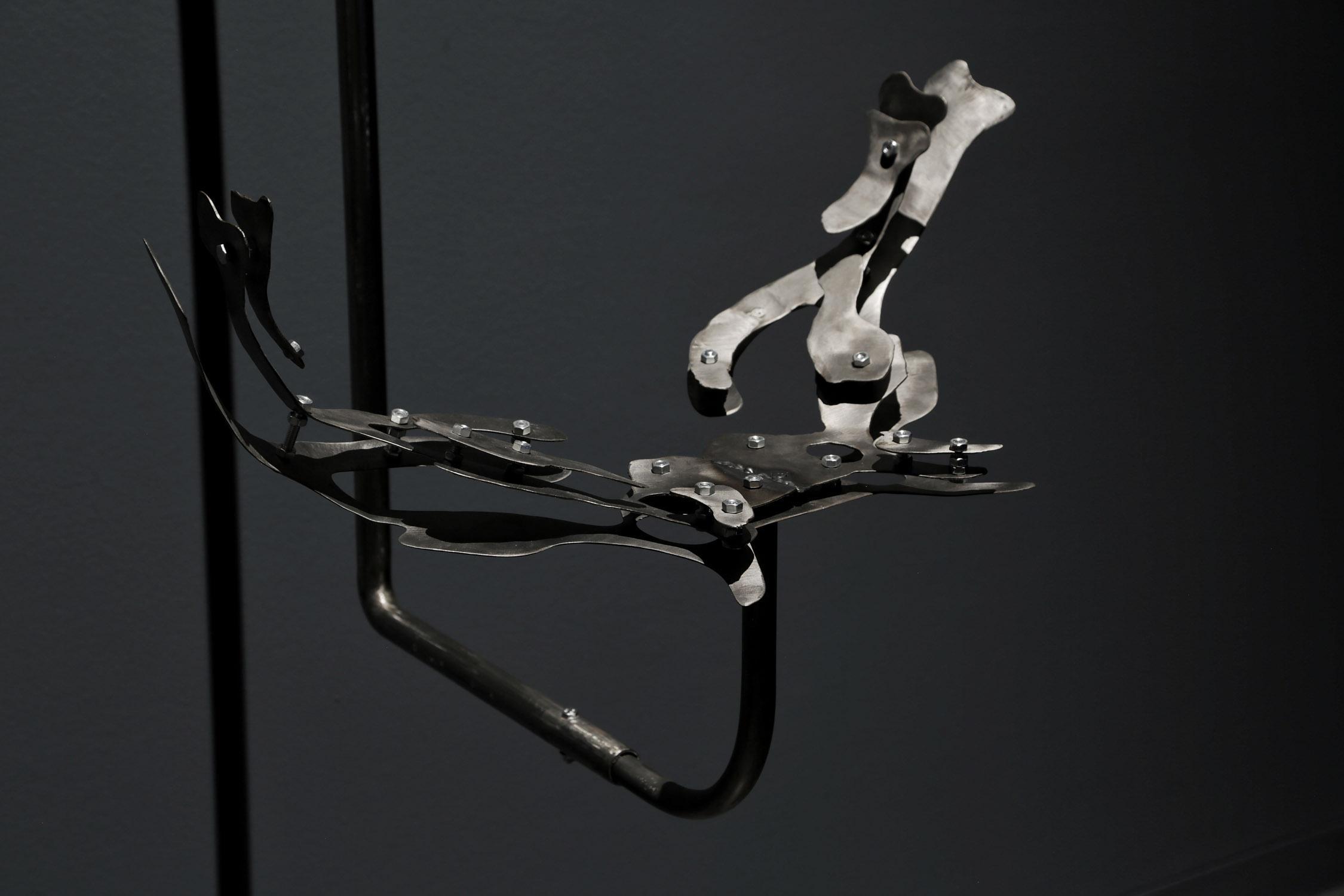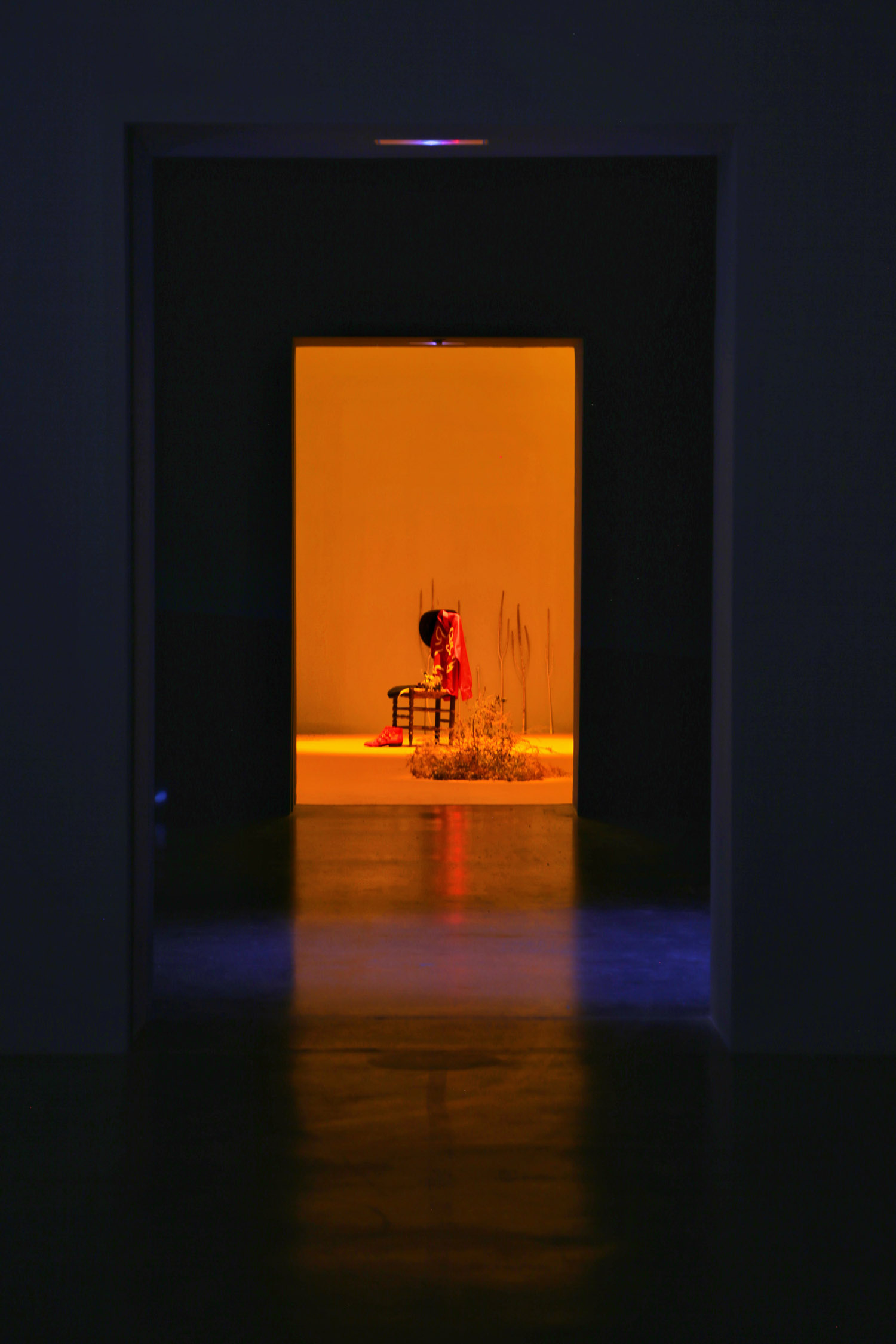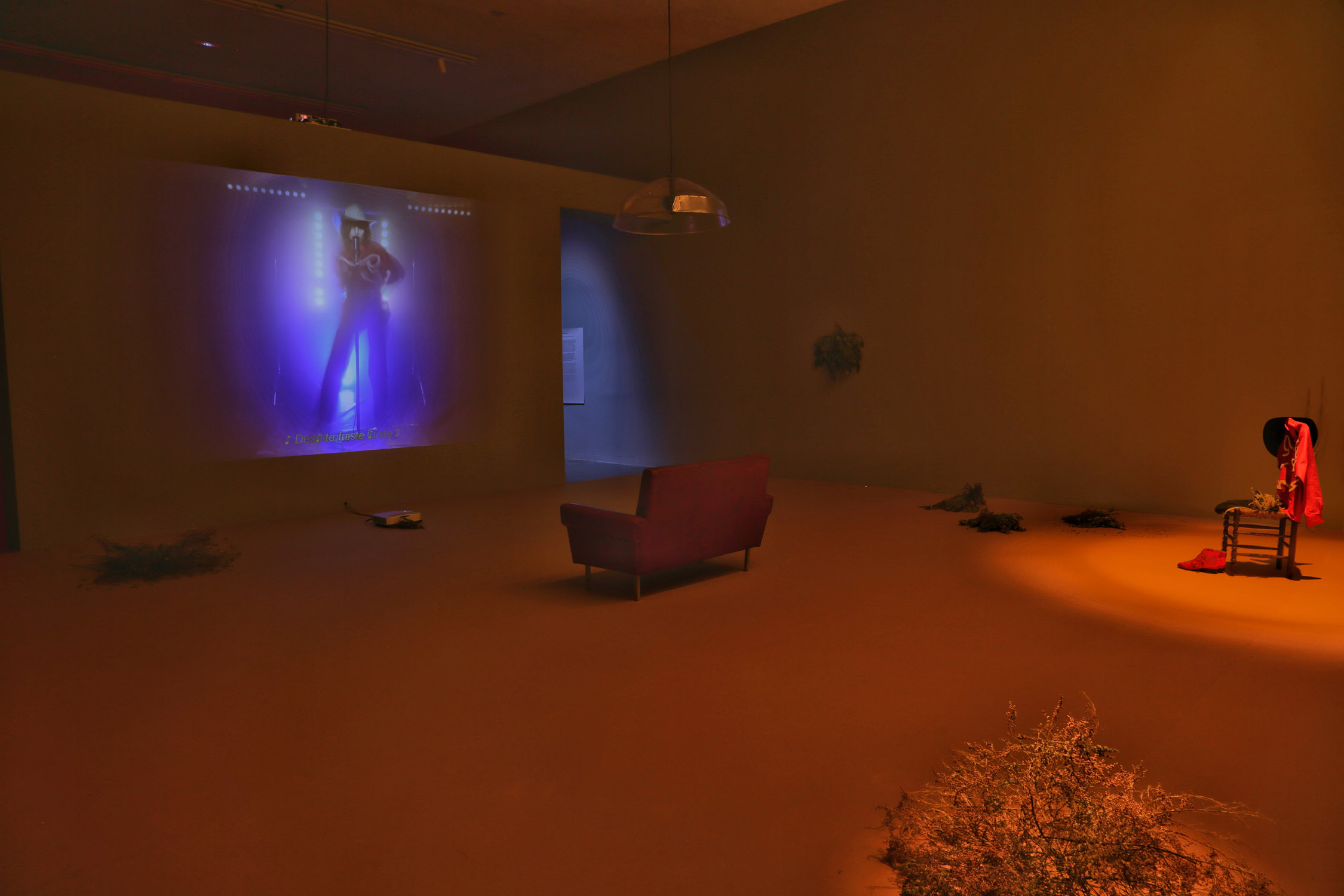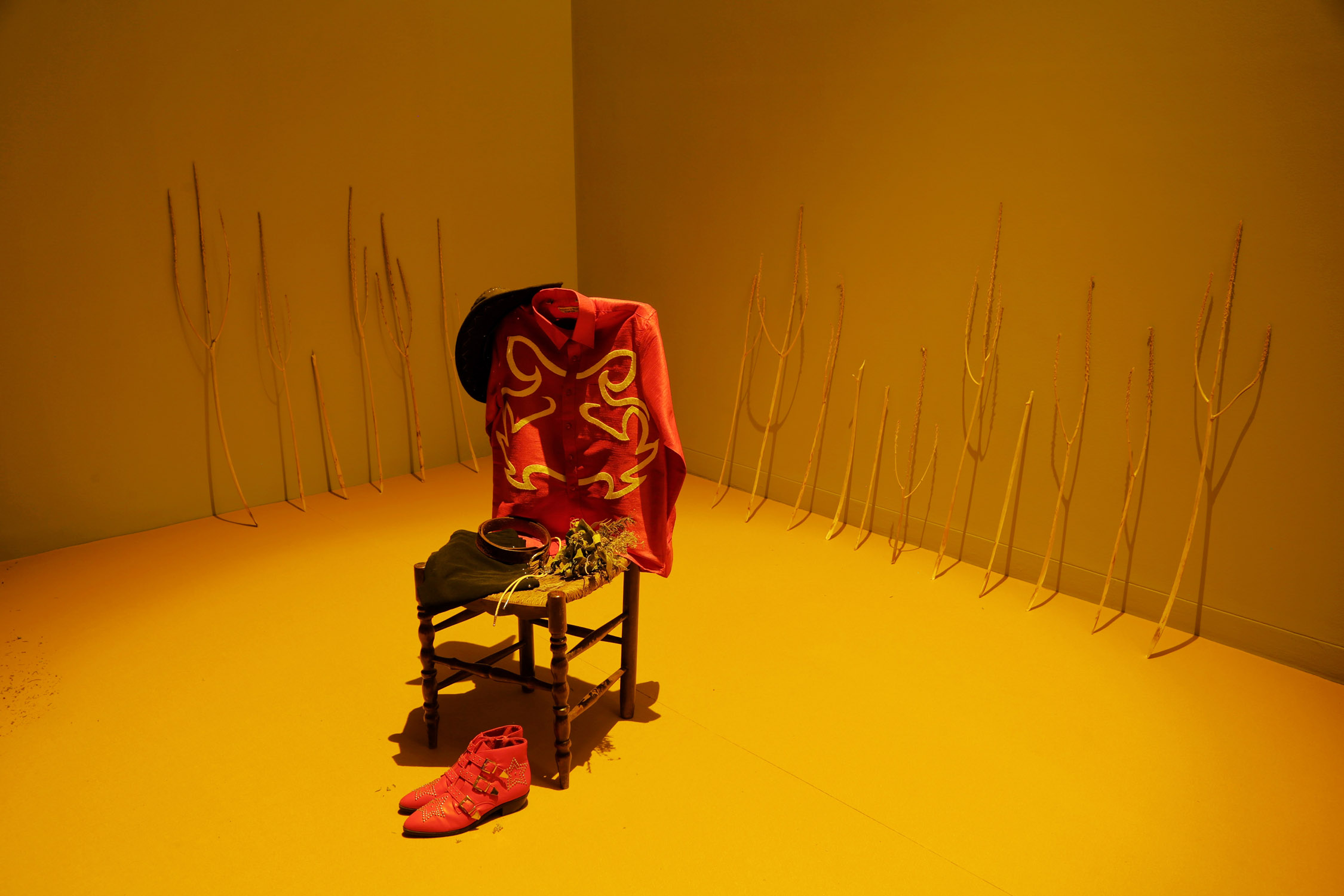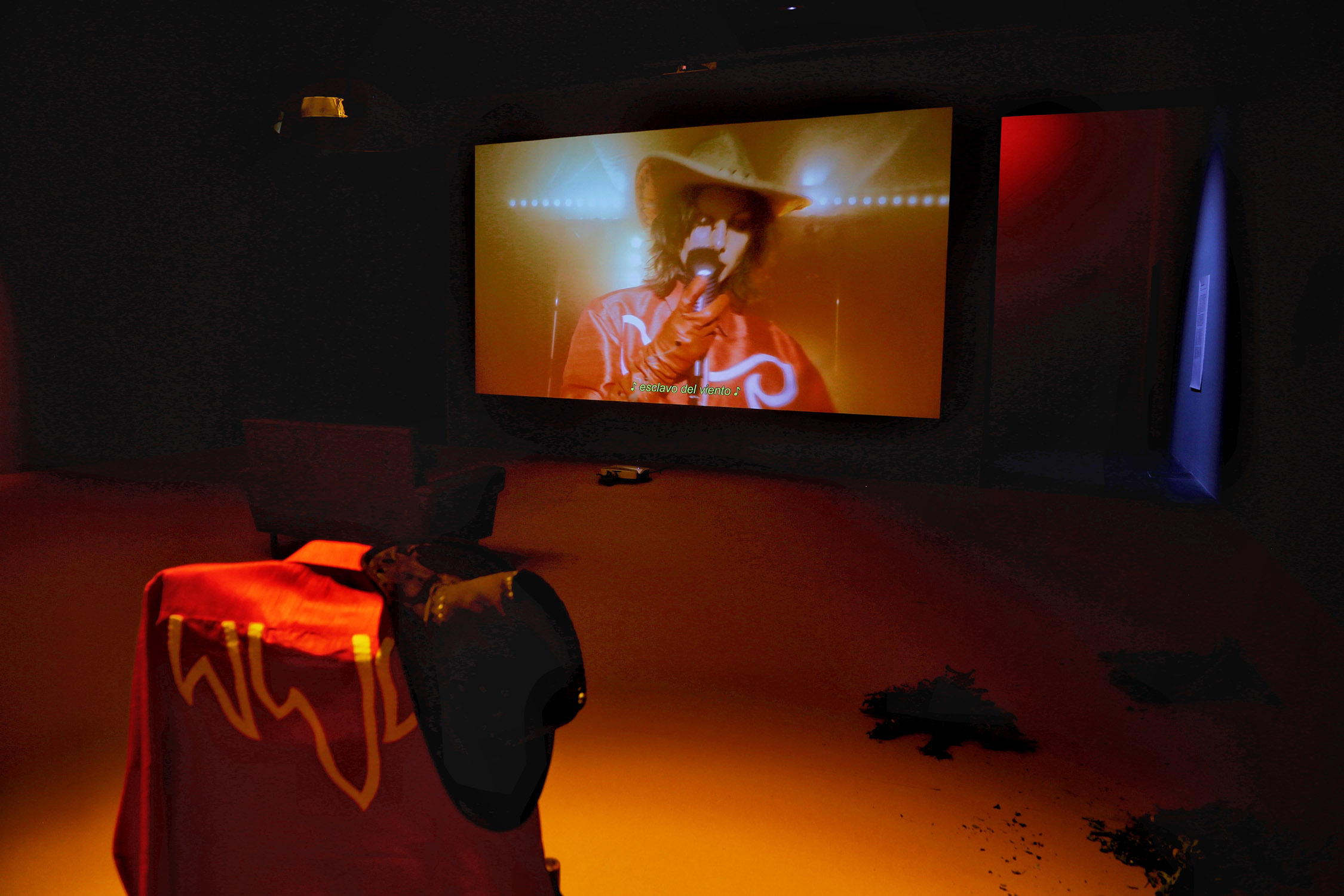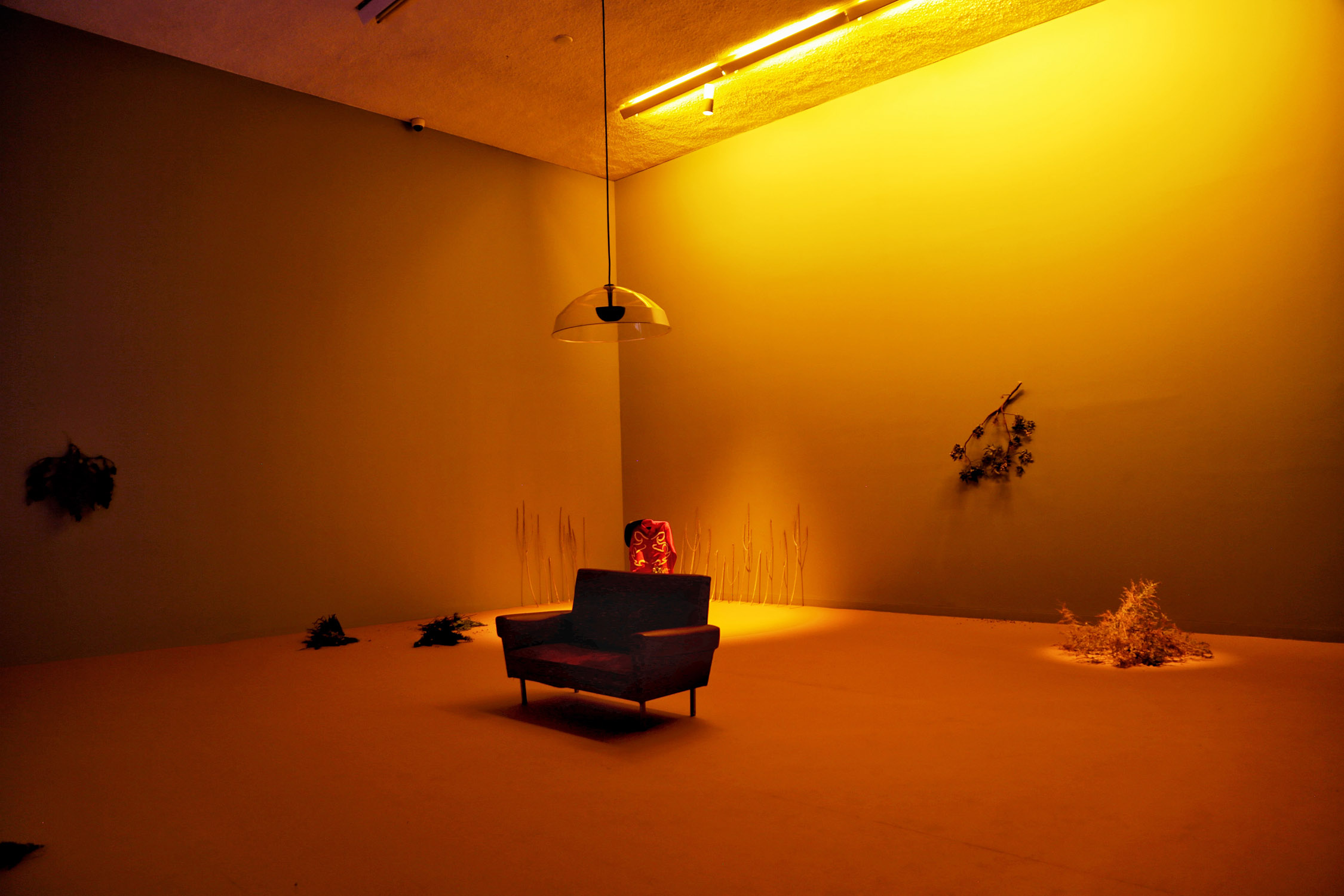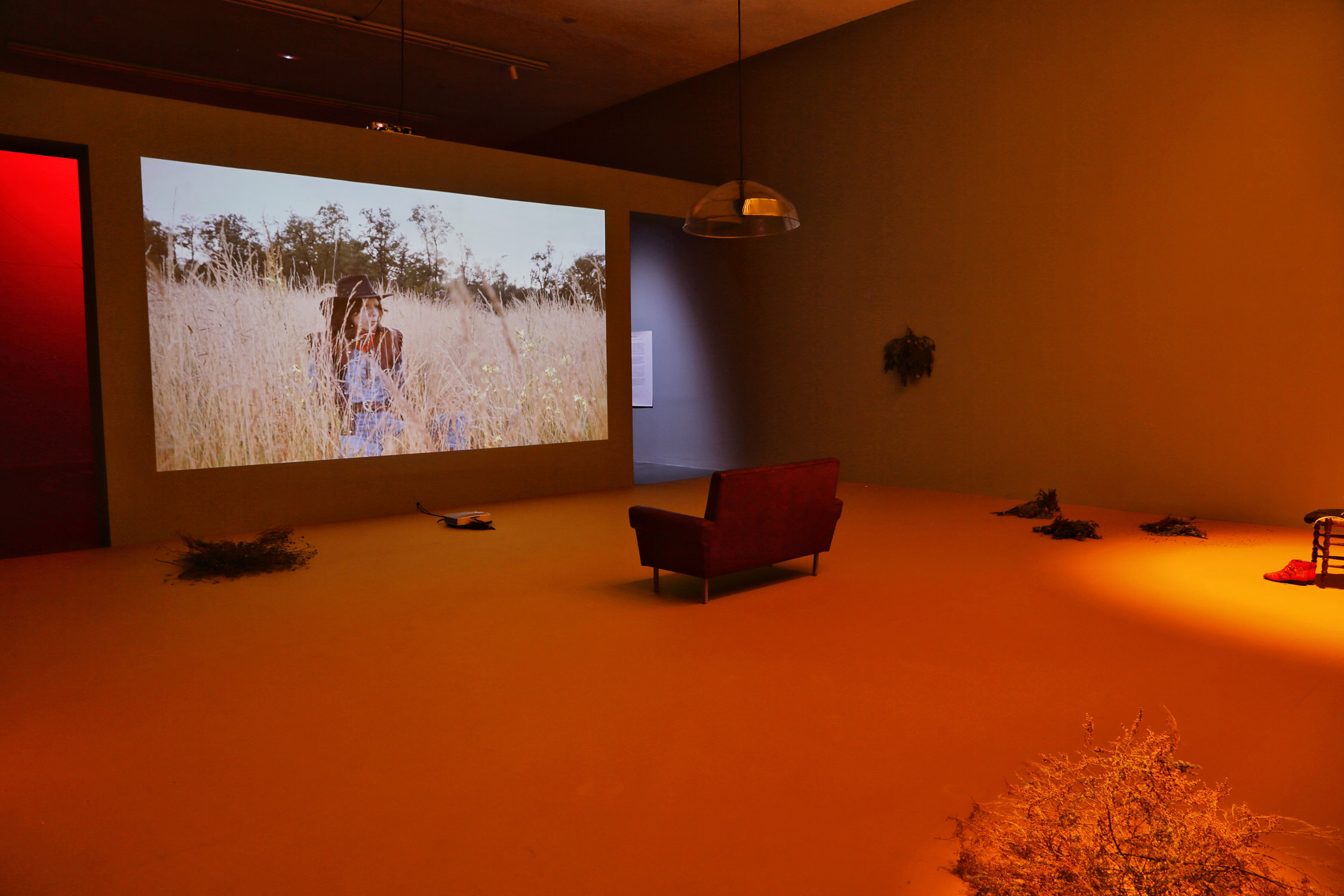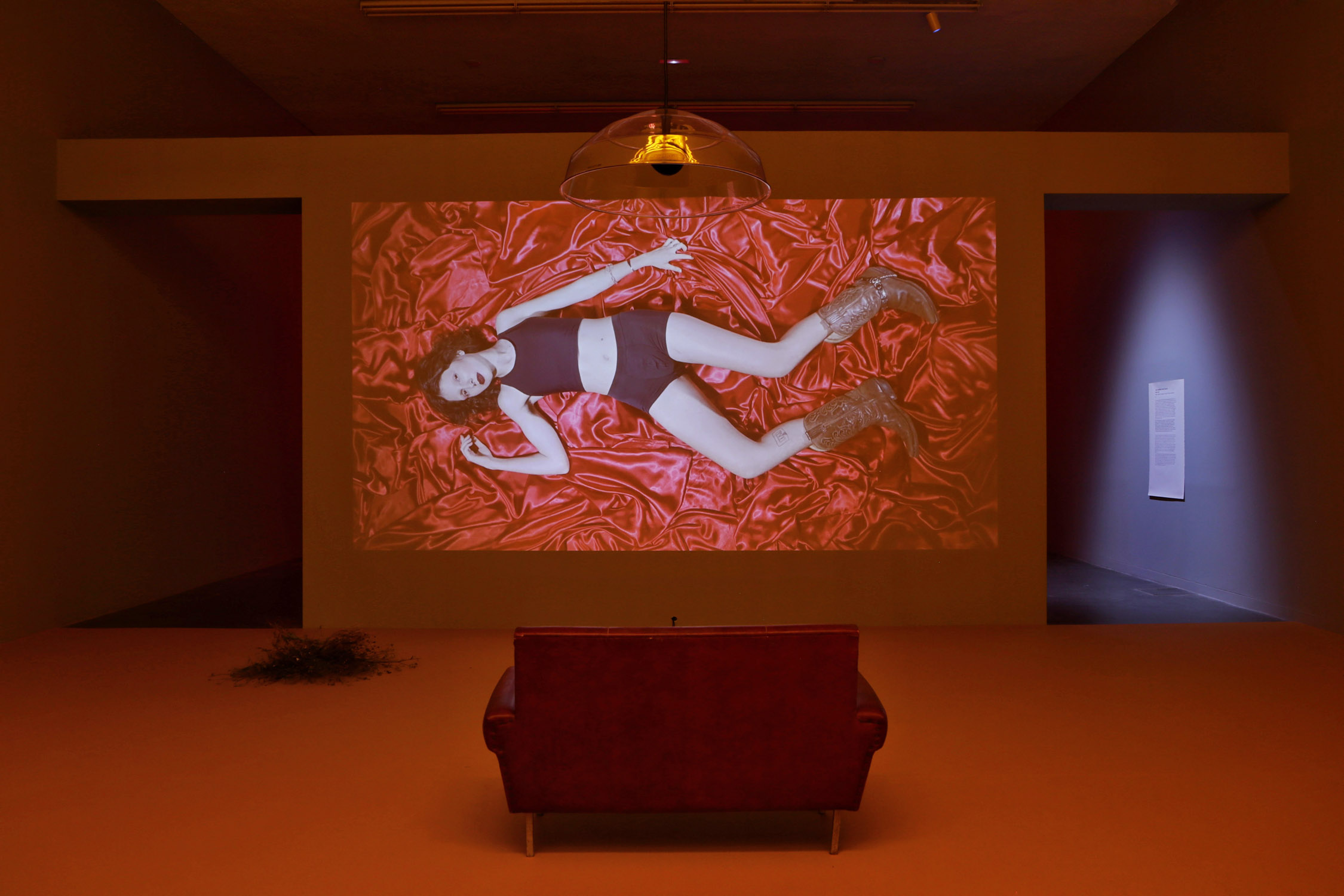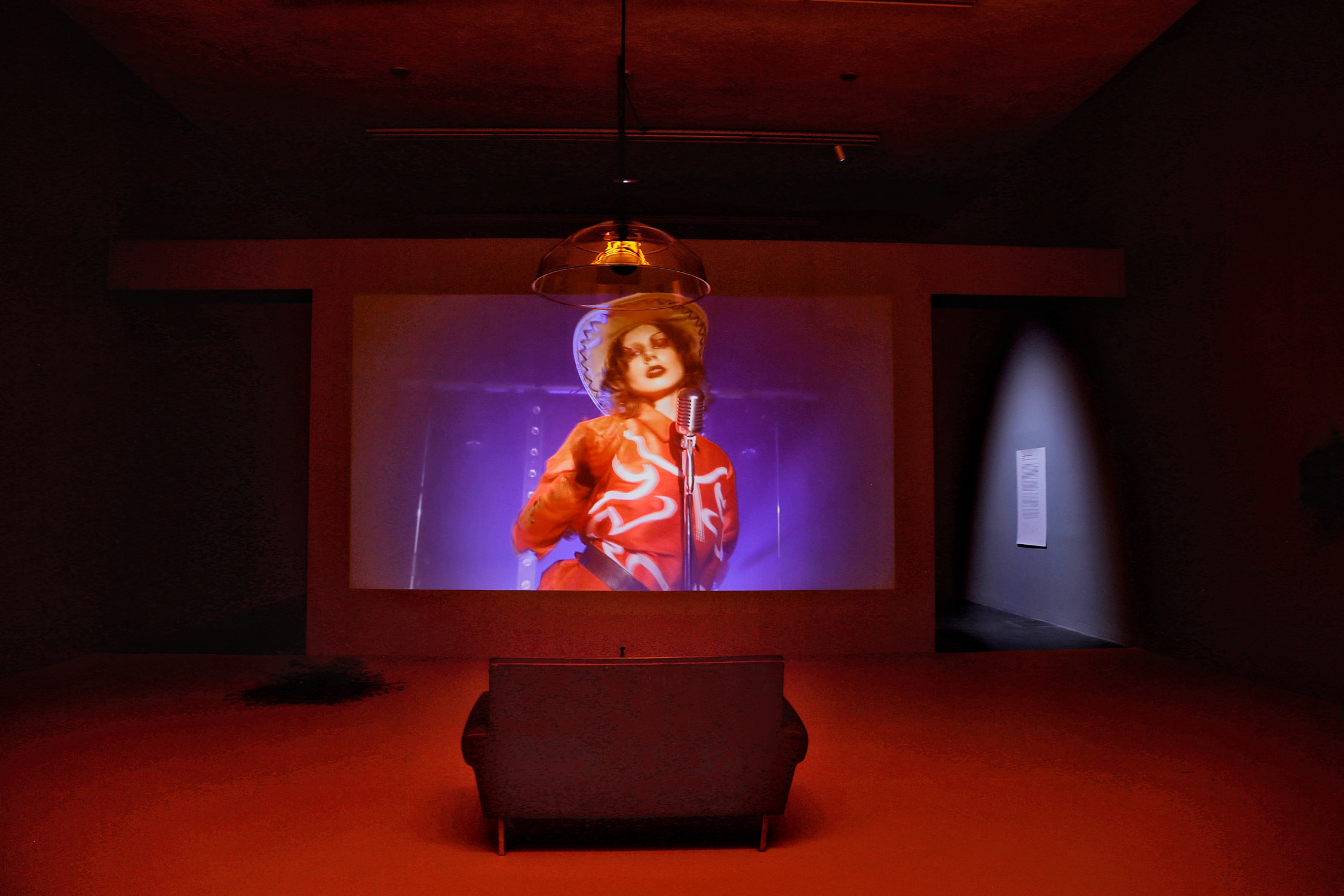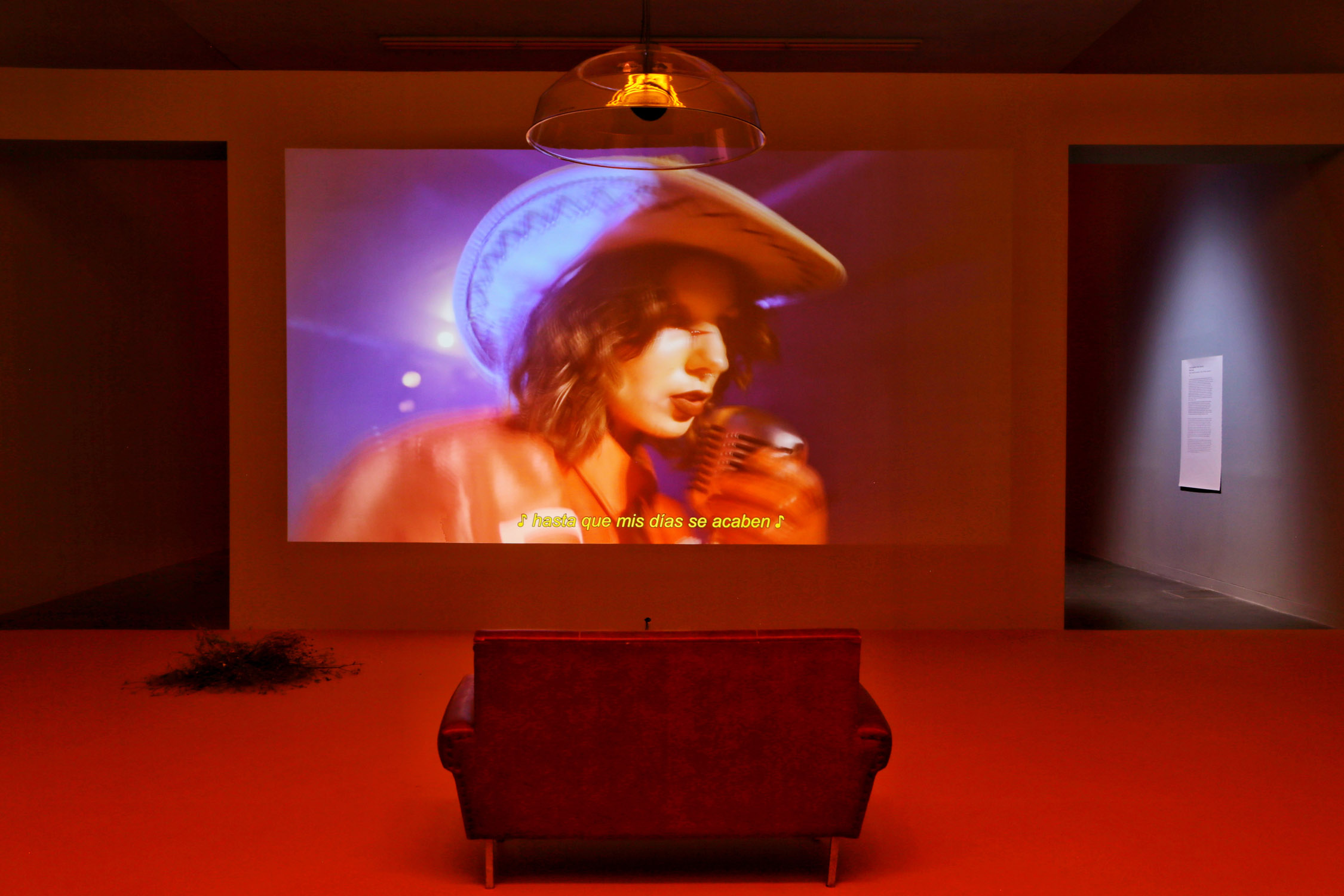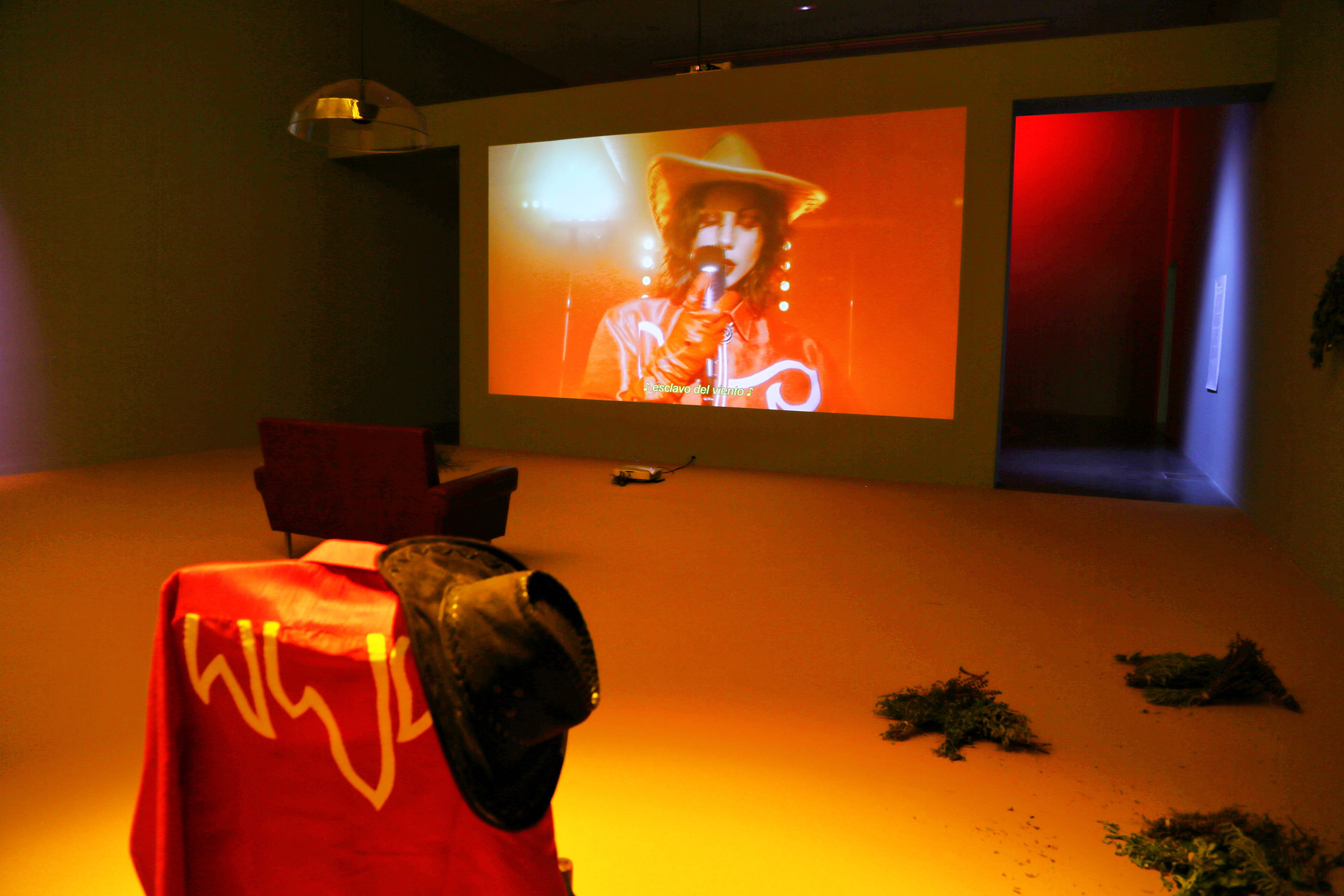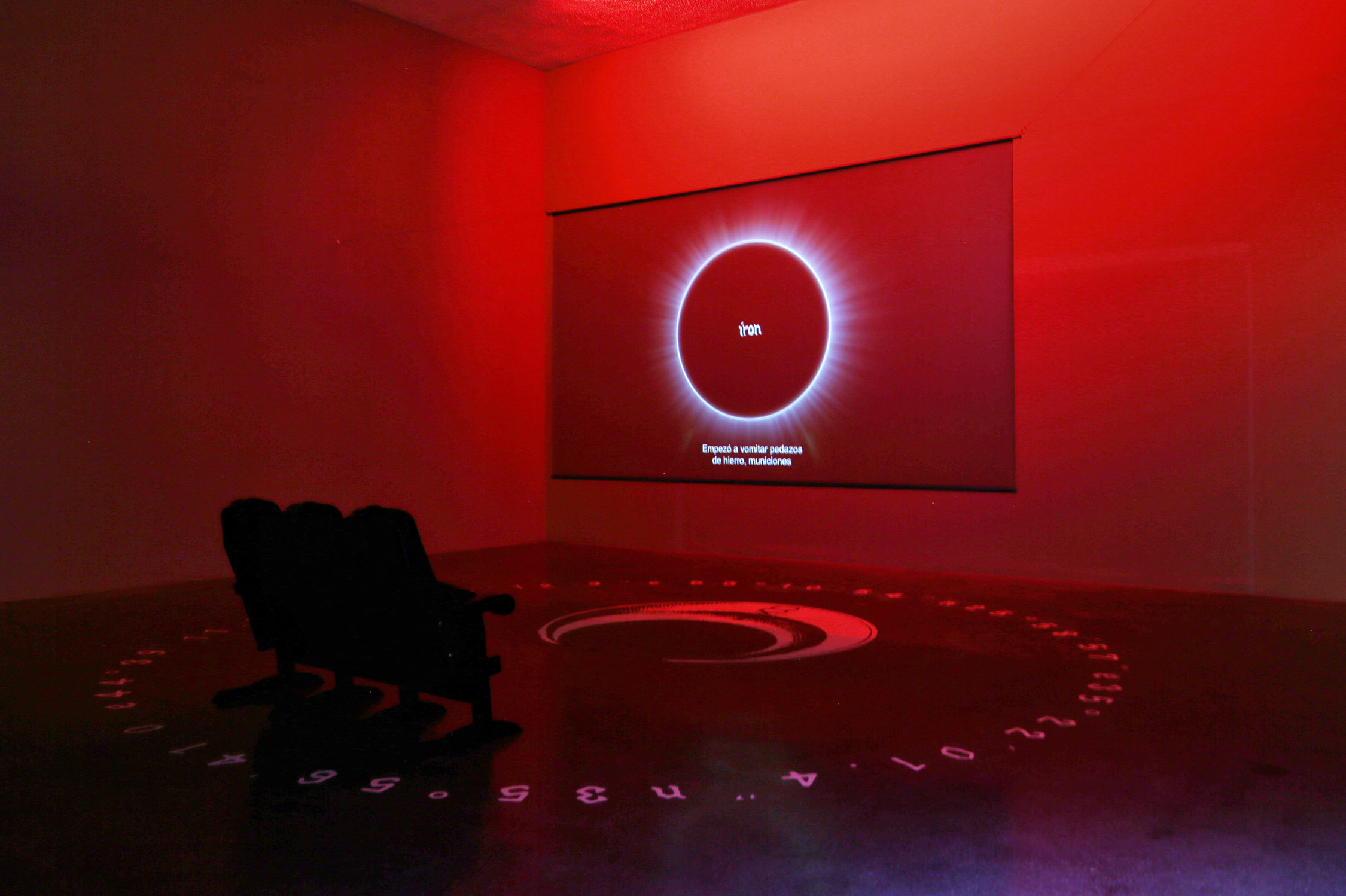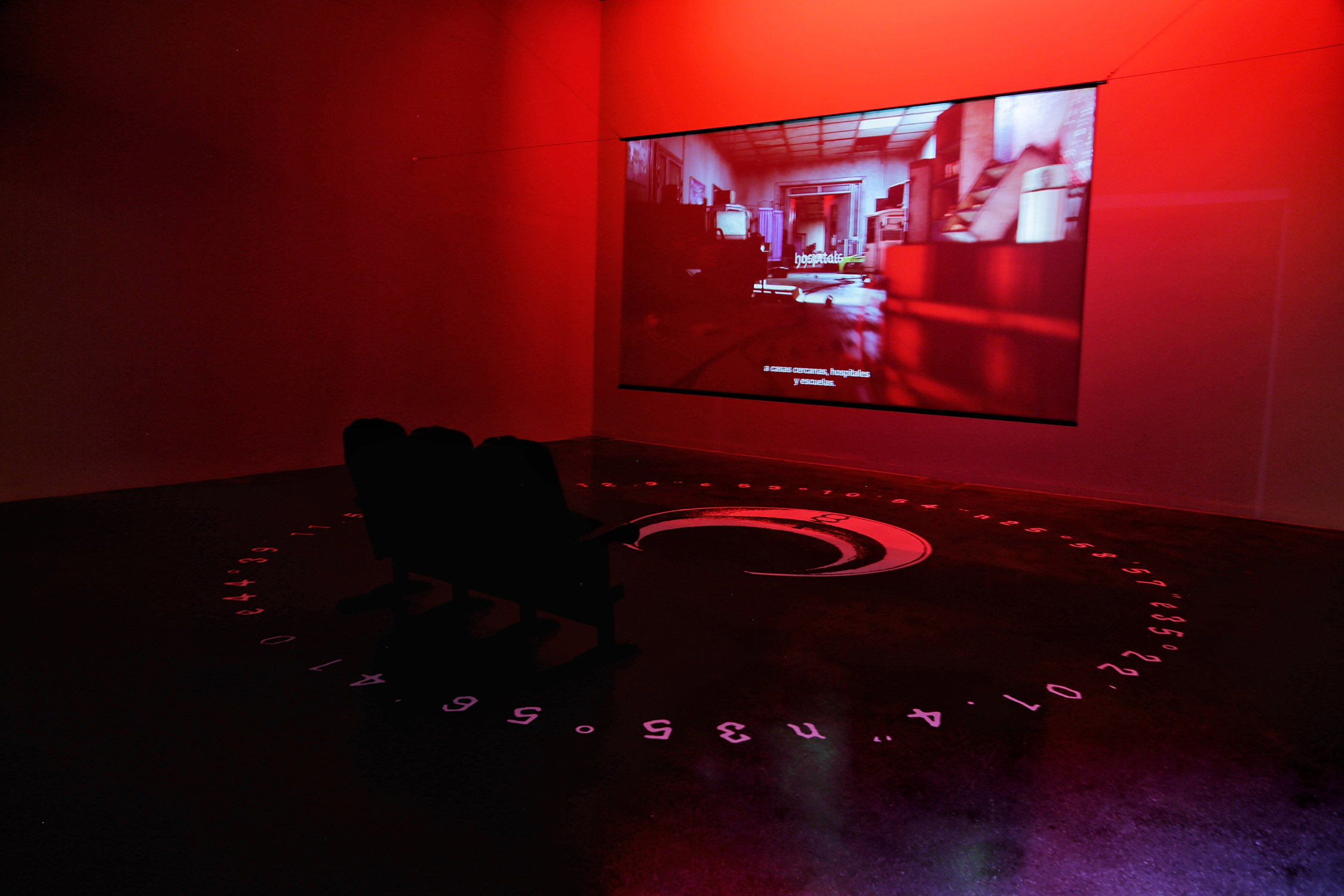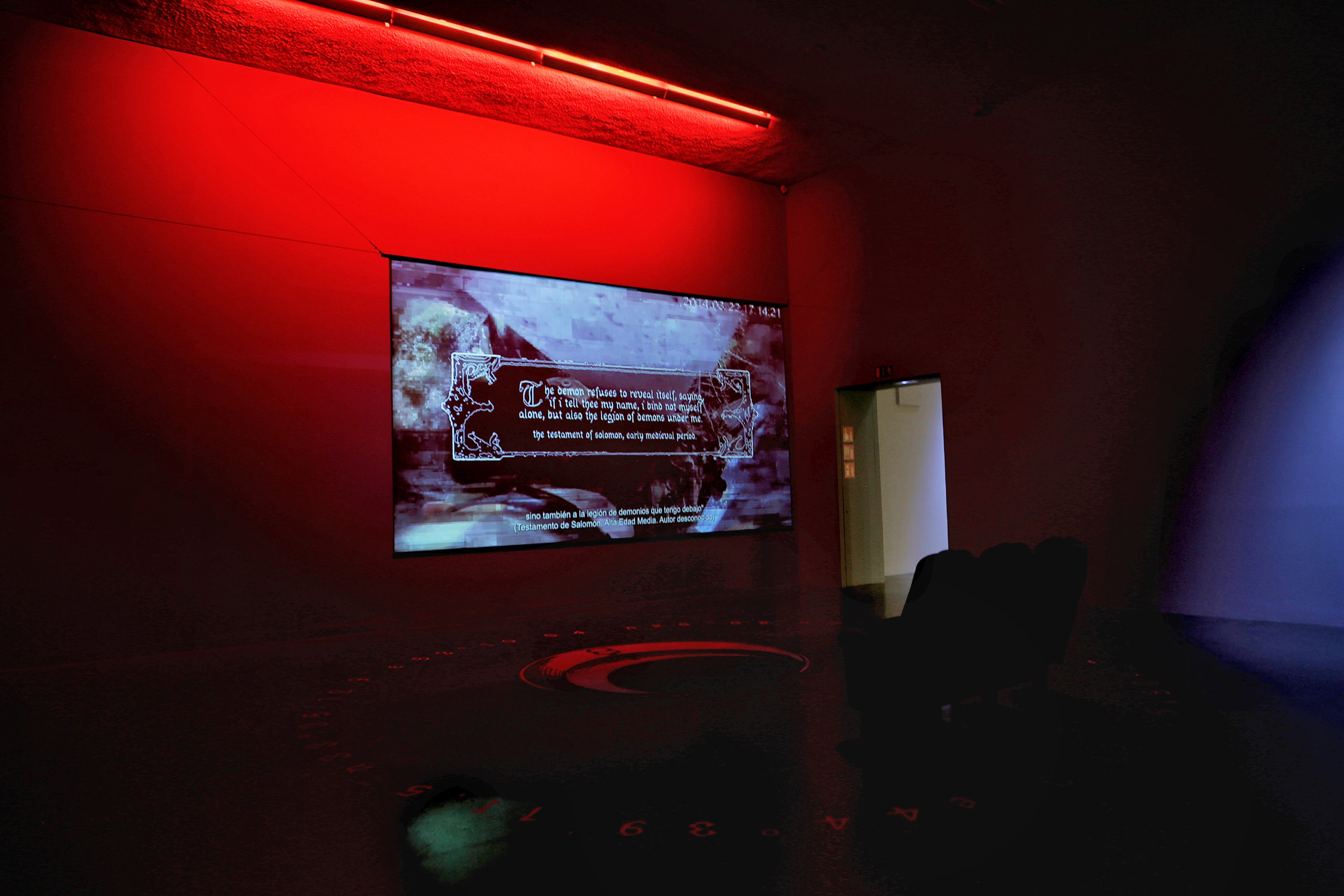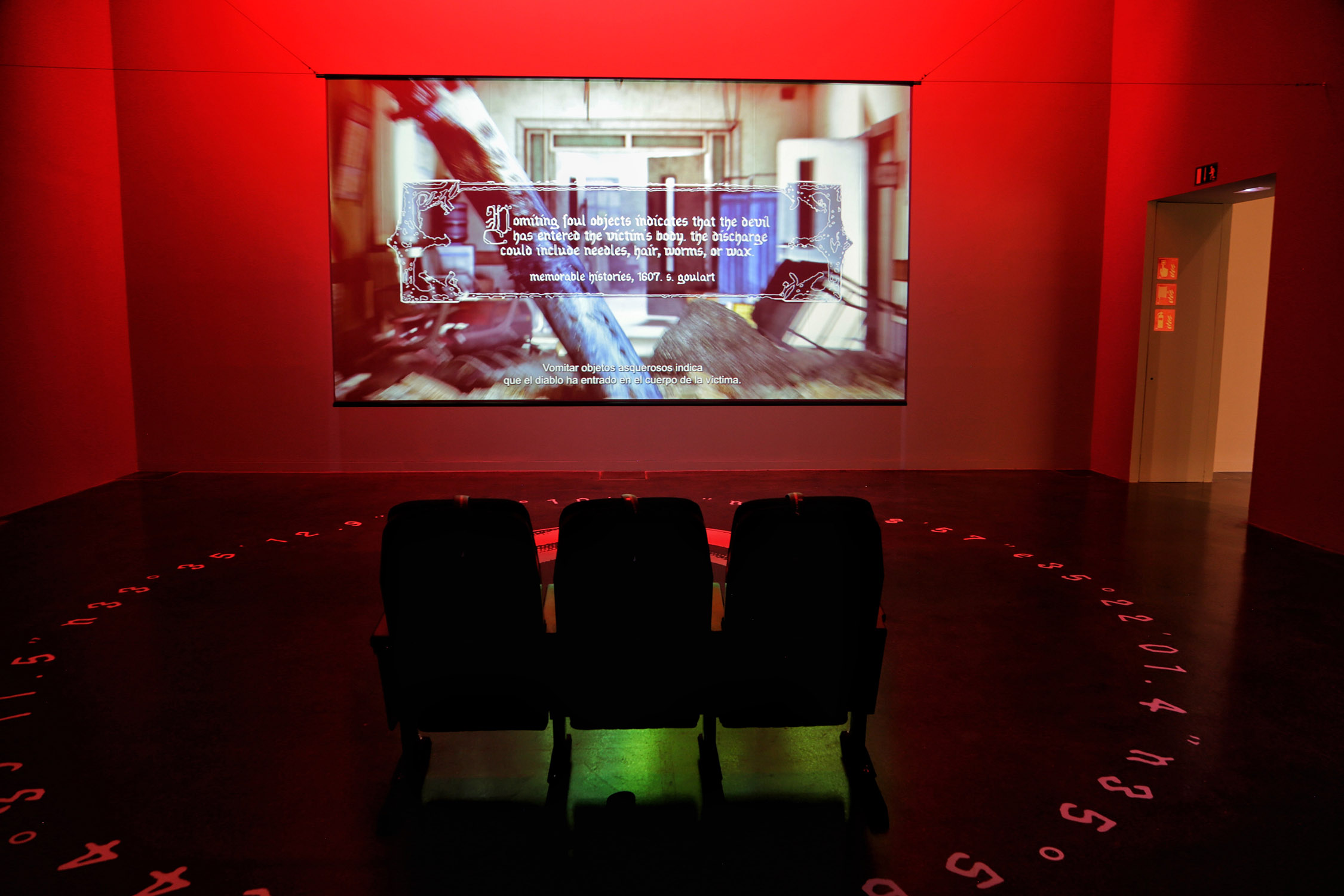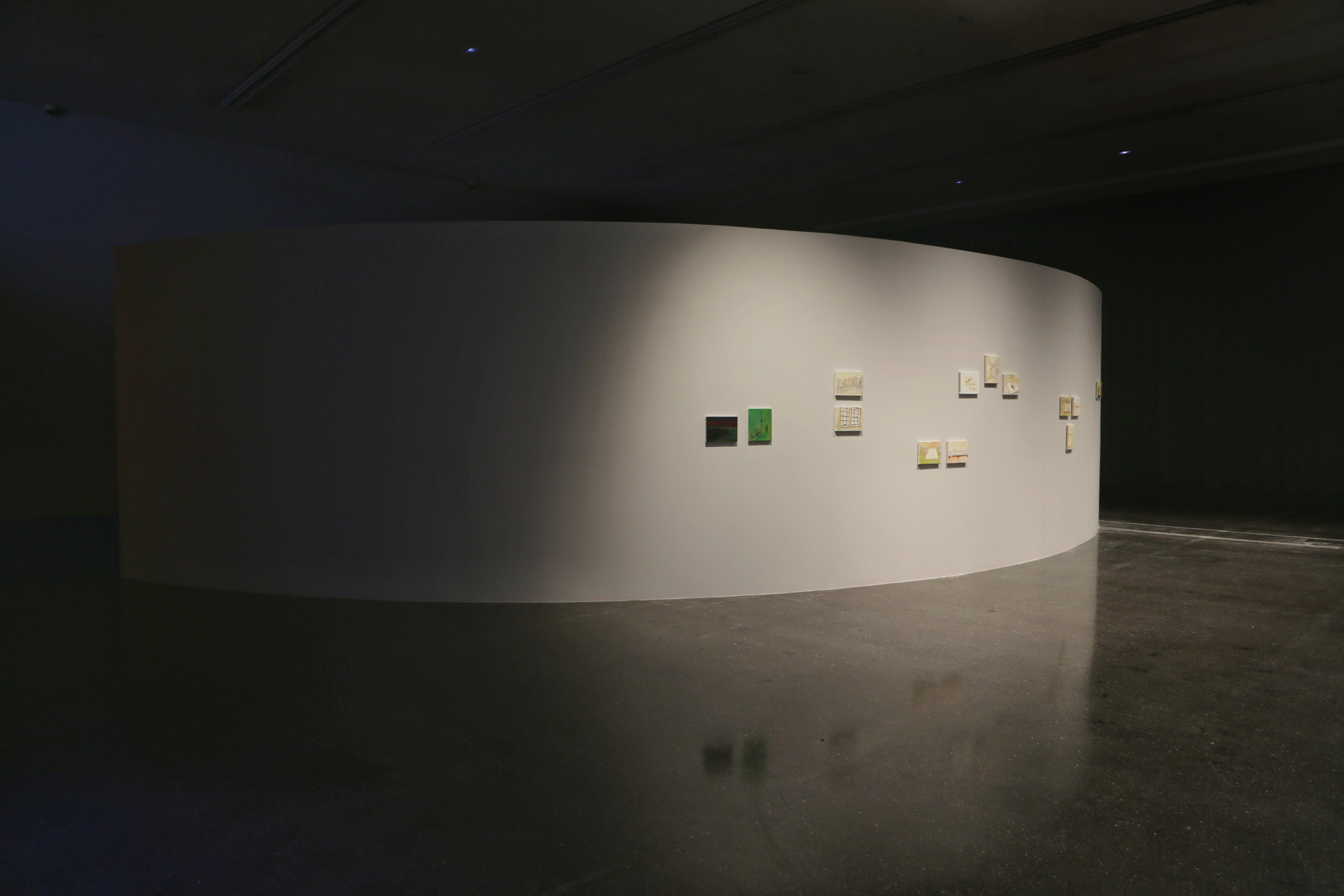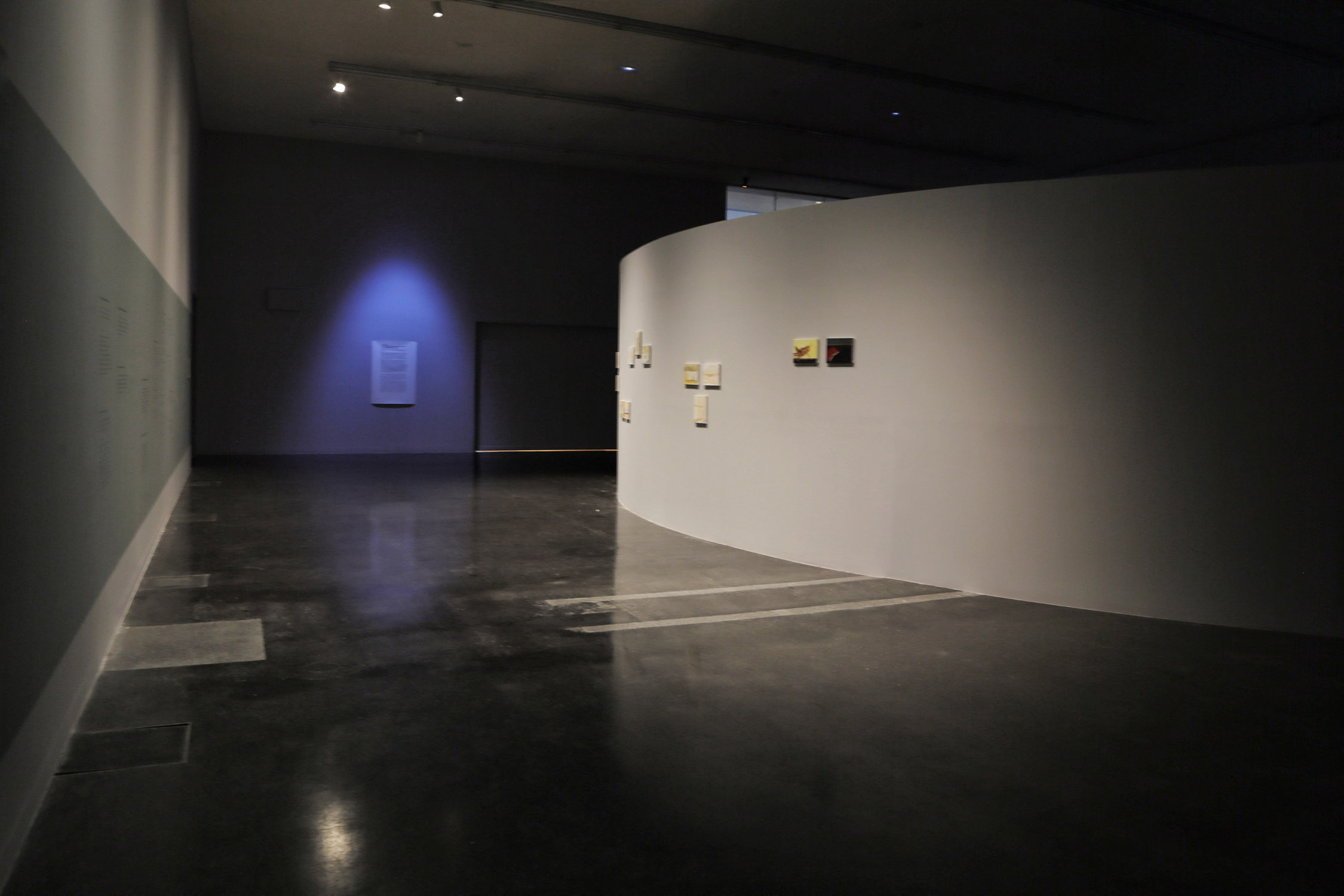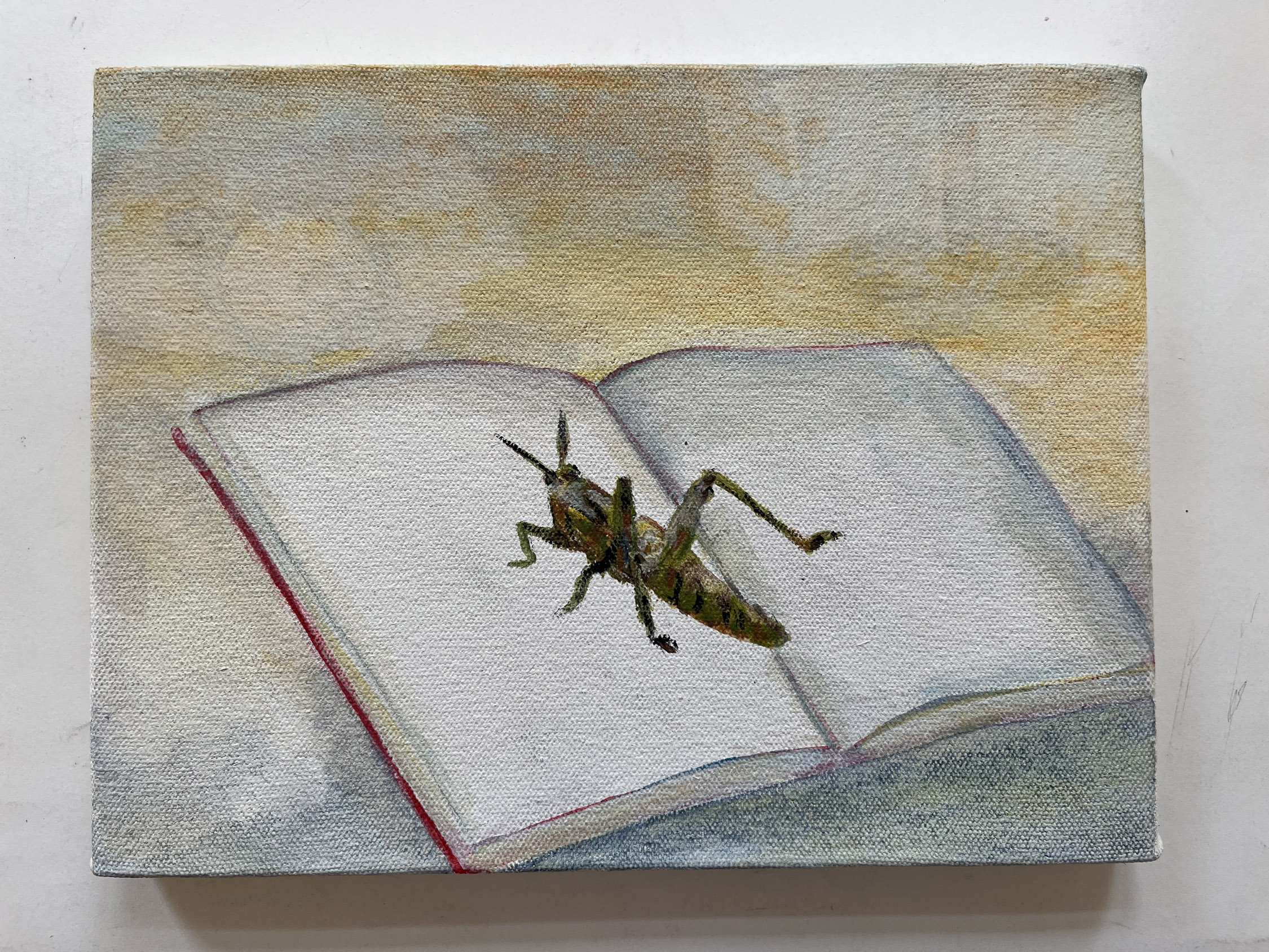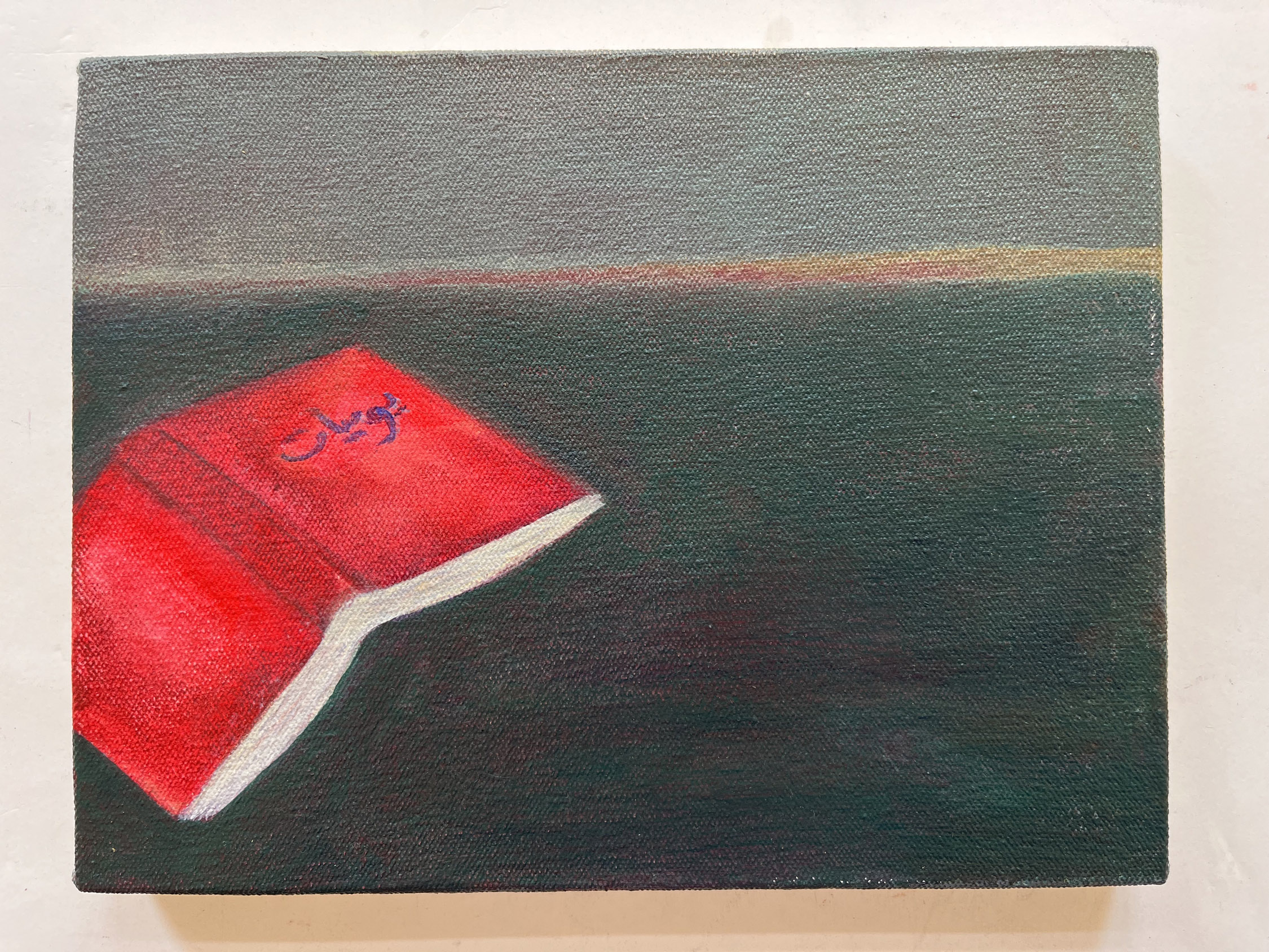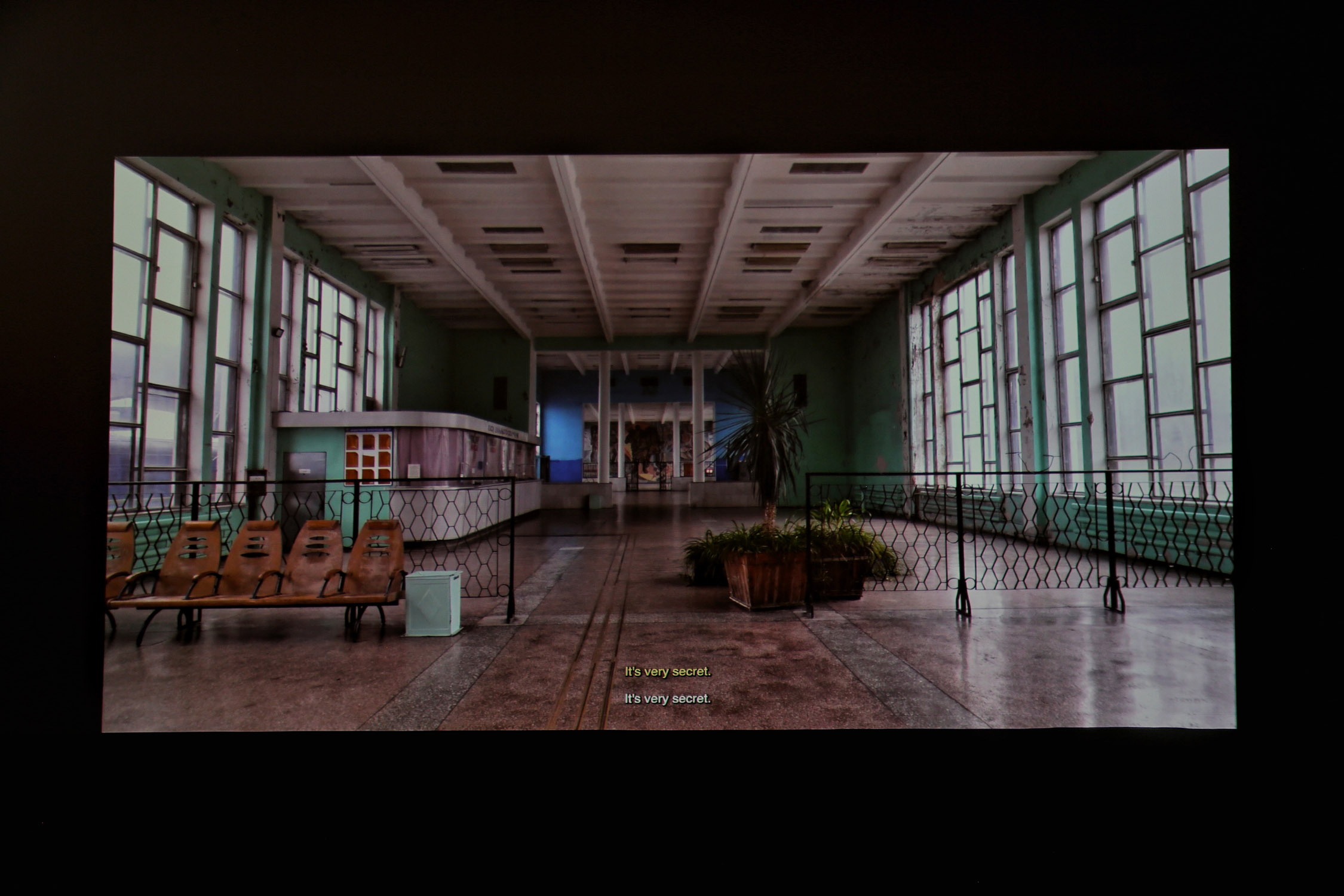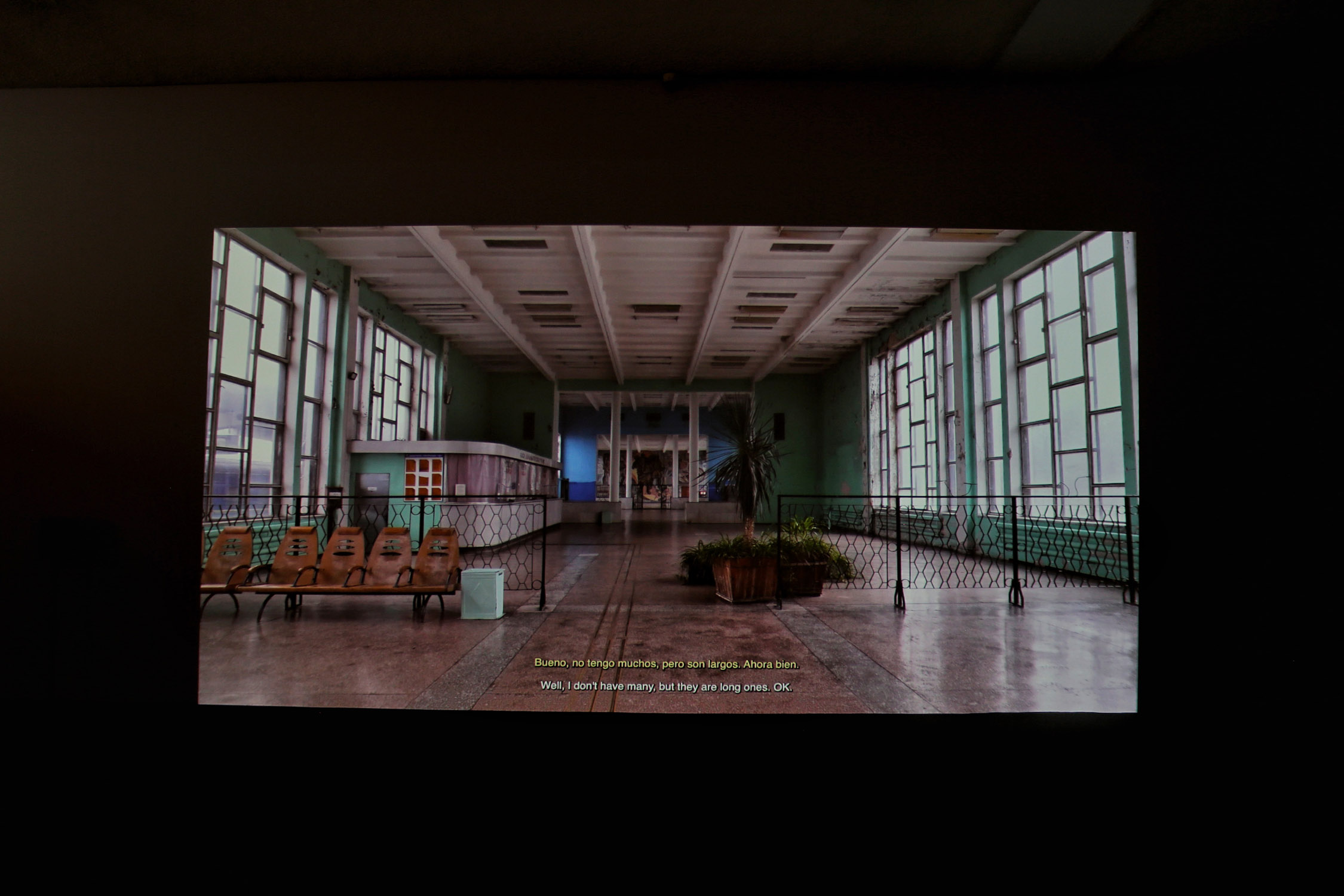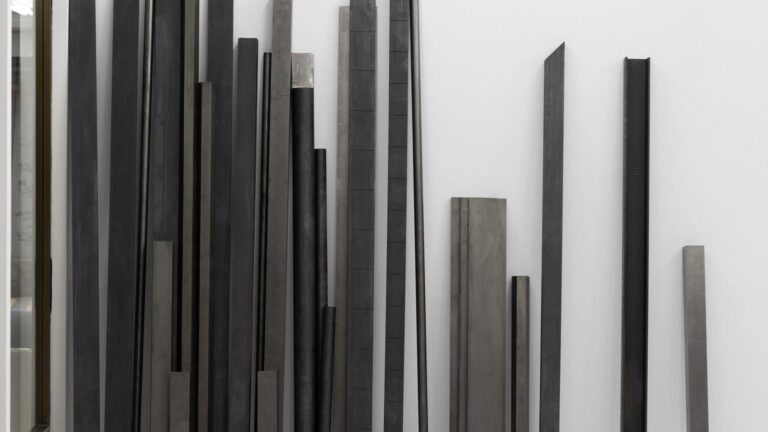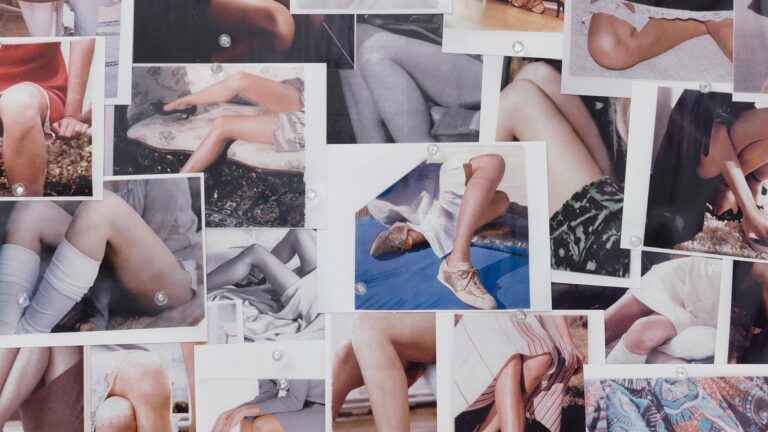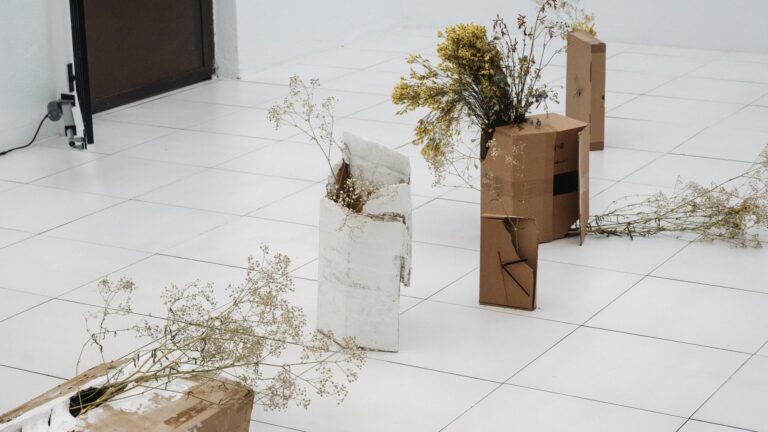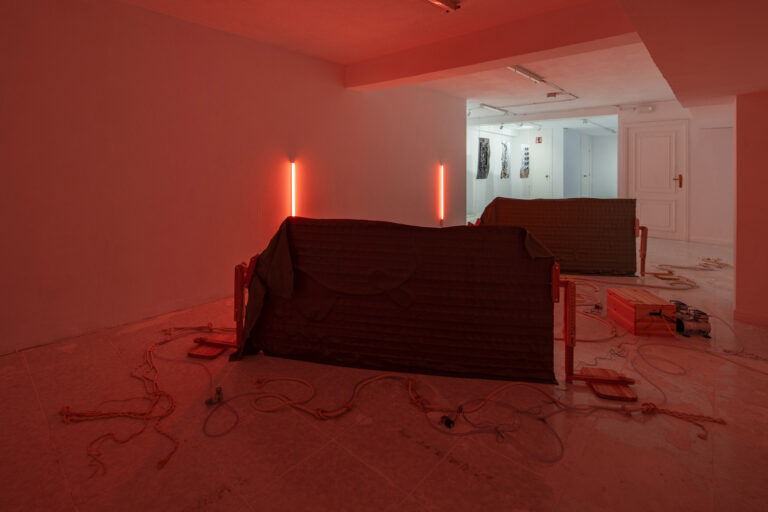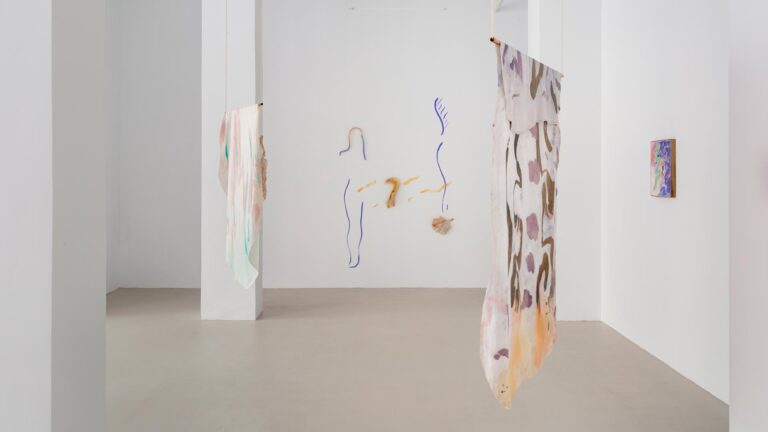The heretic, seen from the prism of power, is a confrontation with the status quo. The act of proposing alternatives, be they political, historical, based on identity or culture, contrary to the monolithic and hegemonic reality of established powers is a gesture of opposition and of believing in the possibility of real change that appears to decrease by the day. The proclamation can take the form of written text, voice, or image, the visual form of poetry, and any media in which fissures emerge, that can be detected by those in power, but not always controlled.
How is it possible to break with a dogma within a structure defined by the legitimation and absolutism of the institutional and academic format? The biennial questions its own structure, formats and systems in order to address the systematic constriction of our identities and the formats of our historical narratives.
The Heretical Proclamation brings together the work of artists who come from diverse positions and languages but who all counter narratives of power. Artists offer us ways to see new perspectives and to expand our knowledge without fitting into pre-established limits, neither social nor temporal. This exhibition showcases the work of artists who pass through connected lines of investigations; the curatorial connection brings forth a heretical questioning of the contemporary within an exhibition structure that invites you to become entangled in its snaking path. The twelve artists, selected through an open call, create dialogues between them that take questioning positions that intersect and mix with each other, forming the following four thematic narratives: Tracing Histories, Lineages of the Present; Identities Against the Grain; Rooted into Place, Violence against the Earth; and Methodic Transmutations.
This proclamation calls for authentic proposals, both artistic and curatorial, against those promoted by the political-social canon. A public program will accompany the main exhibition with interventions by artists and other cultural agents that add escape paths, enriching the proclamation in choral dissonance.
ABDESSAMAD EL MONTASSIR
Trab’ssahl (2024)
3-channel video
13’ each
Trab’ssahl means “The Land of the West” in Hassaniya and refers to a large part of the Sahrawi territory. It is in this land, in this language, within a largely undocumented and absent history, where an ongoing and uninterrupted conflict has transpired for almost 50 years, that Trab’ssahl takes place – a trilogy involving individuals and their silence. The protagonists are from different generations, live in different regions and have different paths in life, but are in parallel situations of exile, silence and need for reparation. The events that took place in this land are not registered through written or oral histories, but exist deep within the geological crevices and the archive of dust that inhabits the boundless desert.
The practice of El Montassir seeks to find ways to show what cannot be seen and to hear things that are not spoken. His films show the lacunae of memory that have been pilfered through histories of erasure and unspoken violence. In response to the collective amnesia that haunts Western Sahara, Abdessamad El Montassir proposes a way of listening to silence, the poetry of resistance, the winds and the sand and detect the signs of a traumatic memory that lives within them, be they human or non-human voices. Stones and dust become silent witnesses to events that we are incapable of accessing. This three-channel film follows the muted language of oblivion and the hardened imprint of struggle that exists as an abstract spectre looming across the vast expanse of perambulatory Sahrawi territory.
LAURA MESA LIMA
Dos moldes para un constructo / Two Moulds for a Construct (2017)
Sea salt, paper, ink and metal
Dimensions variable
Dos moldes para un constructo (Two Moulds for a Construct) was presented for the first time at the 9th Biennial of Contemporary Art of Lanzarote in 2017. It lies within a mythical vision of the islands found in the novel Lancelot, written by Agustín Espinosa between 1928 and 1929. It functions as a comprehensive guide to an Atlantic island, using a process of creating history and geography from fiction, which offers us a new approach to the idea of an island. Laura Mesa Lima materialises Deleuze’s theory in the book Difference and Repetition (1968) in a series of conceptual gestures in conjunction with physical forces of the earth that bring materiality closer to representation.
Sea salt continually beats against the shore of the archipelago with difference and repetition. In this case, the materiality of the paper records, not the force of the pencil and the human hand, but the geological processes and frictions of the shore that characterise this archipelago. Using a technique similar to frottage, each paper contains the features of the volcanic shore and crystals of dried salt that cauterise the surface of the paper. The numerous sheets are theoretically exactly the same, but are differentiated by the irregular physical and geological processes that formed the earth. Held in modular columns, the papers are displayed in an eternal drying position, exposing their individuality against generalisation.
Laura Mesa Lima’s works always begin from the process of drawing and philosophy, in this case from the story of Deleuze –a heretical philosopher who was censored by Lacan after the publication of Anti-Oedipus where he wrote a damning critique against Lacanian dogma. Deleuze also undertook the development of archipelagic thinking in Desert Islands and Other Texts (1950), connecting to the previous work by the poet Espinoza.
VICTOR LEGUY + ARIEL KUARAY ORTEGA + GABRIEL BOGOSSIAN
Caminhantes / Walkers (2022/2023)
Multichannel video installation
Caminhantes (Walkers) is a multimedia installation created by Ariel Kuaray Ortega, a Mbyá Guaraní artist and filmmaker based in the village of Koenju; Gabriel Bogossian, a writer and curator based in São Paulo; and Victor Leguy, a Brazilian artist and researcher, also based in São Paulo.
The work is rooted in the diary of the last expedition of the Swiss ethnographer and photographer Thomas Bischi, a fictional character created by Gabriel Bogossian, who disappeared in the Guaraní territories between northern Argentina and southern Brazil in 1902. Bischi, a figure of the Belle époque, was fascinated by the indigenous world which he repeatedly photographed and drew; his diary reflects his fascination and displays some of the images he produced. The character was developed after combining the lives and deeds of different historical figures who, in the first decades of anthropology and photography, explored the interior of the American continent.
The video is composed of 28 short vignettes created by Ortega and Leguy. Each part corresponds to a day in Bischi’s diary. The artists freely chose a number of days, producing their own particular perspectives on the fictional journey. The videos were created with various media and resources, including found footage and 3D animation, composing an aesthetic of bricolage.
The video is set in the contexts that Bischi visited –early 20th-century Montevideo and the Guaraní world, compressed between the mate plantations and the geopolitics of the nation-states of the time– these are all informed by first-hand historical accounts and inhabited by real historical figures. The territories crossed by Bischi are the setting of multiple armed conflicts that happened throughout the centuries and bear witness to the Guaraní presence, their traditions and spirituality.
VICTOR LEGUY + ARIEL KUARAY ORTEGA + GABRIEL BOGOSSIAN
Diários / Diaries (2023)
Sound installation
71’
Somewhere between sacrilegious and heretical, a bastard totem rises like a source of narrative built around a linguistic core. Historically speaking, Portuñol is a hybrid language in Brazil’s frontier regions, an offshoot of Spanish and Portuguese colonial processes in South America. The Guaraní people live in territory that is currently administrated by Brazil, Paraguay, Uruguay, Bolivia and Argentina. This sound installation ties in with the collective work Caminhantes, based on extracts from the diary of Thomas Bischi, the Swiss ethnographer and photographer who is the protagonist of the work and the film.
This sound installation reworks the film, removing images and reinterpreting the original texts that appear in it in order to materialize the interethnic jigsaw of the region. This opens up countless possible interpretations of events that come down to us through History and others that do not. Based on real historical events, the narrative speaks to the impossibility of translation and monolithic truth.
The totem takes shape as a sound structure sending murmurs across the floor, forcing bodies to pay attention and to contort themselves to listen to its whispers. You have to strain your ears to overcome the Creole linguistic barrier and the distorted sound of the equipment. Interpretations of history always reach us in the form of fragments and opinions, generally coming directly from power and colonial structures. To see the bigger picture of complex historical processes, you have to interpret and reinterpret events through different perspectives and contemporary viewpoints that uncover the effects of these histories today.
IZARO IEREGI
(Apuntes para) La ira neumática / (Notes for) Pneumatic Anger (2023)
Installation of four HD videos
Dimensions variable
Mordida de cadera I y II (2023)
Cut, welded, polished and varnished steel
Dimensions variable
(Notes for)Pneumatic Anger is the result of an ongoing choreographic research in which the artist investigates female rage as gender nonconformity. She does so by traversing the body with rage from the force of gravity. Thinking poetically about this physical paradigm allows it to become the platform from which a relational subjectivity is proposed through dismantling the masculine notion of the upright and vertical subject. Ieregi’s work follows the theories of multiple feminist authors, activists and artists who question the position of bodies and gravity as a political tool to dismantle sex and gender binaries. Female violence and female rage are confrontations against gender constructs and, in the work of the artist, rage is located in the hip.
This installation is a proposal for a choreographic material composition made from sculpture, video, bodies and sound. The process of making this work involved a collaboration with a group of people who explored the movements of suspended, dragged and inert bodies through exercises designed to activate anger against the precarious experience of the contemporary subject with elements of socio-economic critique of our condition as cultural actors. The collective exercises formalise into repeated gestures and metaphors about falling, and, by extension, about affects such as failure, love, or rage and thus, present the vulnerable subject and queerness as utopian forces. It is in the body where this optimistic impulse and gravity converge. Bodies that recreate, invent and imagine new bodily gestures for resistance, often prohibited or sanctioned, at times individual and at other times, collective.
DEJAN KALUDJEROVIĆ
Dreams Station (2024)
From the series Conversations Hula-Hoops, Elastics, Marbles and Sand
4K Video, 4-channel audio installation
18’50”
Dreams Station is a truncated project, originally filmed in 2021 for the artist’s first solo exhibition in Ukraine, which ultimately never took place. This project is the result of an ongoing artistic investigation into children’s emotions, political thinking and hopes for the future based on a series of interviews with children between seven and ten years old. The interviews were recorded with children coming from both Ukrainian and Russian speaking households directly before the beginning of the Russian aggression in central and eastern Ukraine.
The Southern Railway Station, built in 1975, is an architectural reminder of the Soviet era, retaining its historical and symbolic importance. Although still operational, the station looks derelict and abandoned, with an almost ghostly presence, like a liminal architectural trace.
This station was a locus for departure, exile and deportation. Following the recent bombing of the Kramatorsk railway station during the existing aggression against Ukraine, train stations have begun to be associated with fear and massacre. The Southern Railway Station was featured in Family Relations, the film from 1981 by the Russian filmmaker Nikita Mikhalkov, now a leading propagandist in Russia.
In the large-scale projection, the camera in the Southern Railway Station moves slowly in a cyclical linear sequence, treating time as an entity, as a presence that connects with the audio of voices conscious of their reality and still full of hope. This creates a narrative that explores the history of the region through the children’s answers to questions about the pre-existing social division which robs them of their childhood in the context of a war that continues today, three years after the recordings, with its negative repercussions for reconciliation and peaceful coexistence.
This work has been produced with the support of the Federal Ministry of Austria for Arts, Culture, Civil Service and Sport.
ANNA ENGELHARDT y MARK CINKEVICH
Onset (2023)
Vinyl, 4K video, installation
25’
The history of the horror film genre is intrinsically linked to the hidden powers of the status quo within social architecture. It creates a gap between fiction and the spectators, striking a balance between tension and a sense of security. Horror, a the conductive substance behind Onset, is coupled with research into open-source intelligence, and introduces the concept of infrastructural horror: an invisible network of power and energy that bridges the aforementioned gap, making the spectator/protagonist acutely exposed to an unknown menace. Through a narrative driven by research into satellite imagery, the film immerses us in an artificial scenario, mapping the disturbing equivalence between demonic possession and the silent infiltration tactics of Russian invasions. This exploration draws on medieval demonology and CGI animation to reveal the dynamics at play in Russian military posts abroad, such as the Khmeimim airbase in Syria, Baranovichy in Belarus and Belbek in Ukraine.
The goal of infrastructural horror is to create unease, repulsion or suspense by exposing the architecture of dispossession and destruction as an omen of something that defies reality. Onset uncovers the underlying forces of Russian colonial violence and its network of military influence, energy control and anonymous agents. Only detected with the development of certain methods of perception, these forces spread their tentacles into other territories through violence, war, occupation and plunder. The video installation shows us the horror that cuts through fiction and occultism to install a trans-temporal reality of imperialist aggression entrenched with the passing of time.
AL AKHAWAT
+ 212 (2024)
Audiovisual installation, modified internet café telephones
Dimensions variable
From a diasporic perspective, the tension between belonging and non-belonging is a symptom intrinsic to the identity of migrants. On a generational level, their struggles, sacrifices and mechanisms for survival traverse many complexities. Marked by cultural identifiers such as clothing and physical traits, the diasporic identity is resilient, responding to border-related issues and establishing itself as hybrid, heterogeneous and diverse.
The Al Akhawat collective explores the complexity of diasporic identities on various emotional and multifaceted levels. Grounded in the collective experience of the Maghreb diaspora in Spain, the call centre is a place of hope, of communicating across distances, of community and self-reliance. Both the visual and textual work is created collectively or individually within a communal framework, blurring notions of authorship and defying social and political structures and contradictions. What we see is an intimate portrait of the shared memories of a broad collective that come from subjective moments, yet weave together experiences that produce an unquestionable sense of recognition.
The work, +212, whose title is borrowed from the international dialling code for Morocco, creates an experience in which spatial interventions, video, sound and poetry generate a space where beholders inhabit the same emotional layers as the artists, who deploy memories, community support and culture within a versatile and usually overlooked place like the neighbourhood call centre.
MAÏ DIALLO
Corpus foraminis (2024)
Video installation. Video, specula and wood, 230 x 60 x 160 cm
13’12’’
Homo vertebrate (2024)
Soap sculpture
60 x 40 x 100 cm
A video shows us a part of ourselves that is almost unrecognizable—the insides of the human body. The screen projecting the image is pierced by several metal instruments: typical gynaecological speculum. During the nineteenth century, many Black women were subjected to medical experiments by practitioners such as J. Marion Sims, who is known in history as the father of modern gynaecology. Sims invented the earliest known prototype of the speculum on the back of a series of morbid experiments and non-consensual surgery without anaesthesia carried out on enslaved Black women, who, according to Sims, did not feel pain in the same way as white women. The speculum is an instrument still used in gynaecological examinations despite its violent origins against gestating racialized bodies. The legacy of modern medicine passes on values from the racist heteropatriarchal system based on binary thinking and differential treatment in accordance with the valuation of individual bodies.
In a sculptural gesture that reflects the gruesome legacy of this instrument, Maï Diallo breaks the screen, piercing and opening the image, positioning the viewer in the intimate interior of the body—like yet another internal organ subjected to the violence that still persists today. Diallo’s installation takes over the space, playing visually, sonically, sculpturally and sensorially between the digital and the physical worlds. Next to the screen is a soap sculpture. This material speaks to medical hygiene as well as to the connection between the perception of individual ethics and institutional sanitisation. Redolent of a visceral bone, this sculpture diminishes with each successive use, underscoring the rigidity of vertebrate beings unable to escape hierarchical and restrictive models. An internal organ, like a hypnotic pulse enclosing a place for systemic revenge that operates within the narrow gap that separates repulsion from attraction, that alludes to a trans-temporal cycle of violence to be dissected.
LAMIA JOREIGE
Tiempos Inciertos. Escenas para un Esquema / Uncertain Times. Background for a Script (2024)
Acrylic on canvas
15 paintings (each 20 x 26 cm)
Since 2021, Lamia Joreige has been working on the script for a feature film and video installation based on the diary of an Ottoman soldier named Ihsan Turjman, who lived during the events that lead to the fall of the Ottoman Empire in the early-twentieth century and the subsequent partitioning of Palestine and the Middle East by Western colonial powers. The manuscript, more than a hundred years old, resonates agonizingly with the present, alluding to the state of uncertainty that has persisted for more than one century and pointing to the connection between the events experienced by Turjman and the consequent colonialism that endures in Palestine today.
Alongside the Portrait of Ihsan Turjman (2024), 14 paintings are presented as part of a new installation called Uncertain Times. Background for a Script (2024). This is the latest in a series that takes the form of various visual expressions of Joreige’s extensive historical research into the collapse of the Ottoman Empire and the beginning of the French and British mandates in Lebanon, Syria and Palestine (1913-1920). Various text-based materials are related with the 15 paintings based on Ihsan Turjman’s diary, fragmenting into images the possibility of a narrative that deliberately excludes human figures, with the exception of Turjman’s portrait, striving to open a portal to imagine the soldier’s social context and mental state. Each painting is accompanied by the numerical code of the script and a description of a scene from a work in progress that functions as a fragmented archive. The paintings presented here do not portray human figures but instead the context, landscapes and objects destined for a future film. This absence also speaks to the impossibility of completing said project. Joreige was in the process of casting actors to portray the character of Turjman in early 2023 but this was put on indefinite hold in October of that same year.
EZRA ŠIMEK
Llama alegre / Joyful Flame (2022)
Video installation
24’
The film Joyful Flame (Veselý Žďár in Czech) explores the deep-rooted collective imagination of the classic movie genres of the Western and the adventure film in search of treasure with magic powers. Ezra Šimek embarks on a journey to uncover the secrets of their gender identity, exploring the understanding of transition beyond conventionally defined genders and their fully conscious deconstruction, despite the oppressive nature of a heteronormative dominated society. The story of the journey of a nameless Trans*Vagabond addresses the specific issue of the conservative healthcare system, the pharmaceutical industry closely tied in with it, and the ways in which this systemic mechanism categorizes, controls and reductively limits the lives of trans people in society. Joyful Flame is the final instalment of a film trilogy that focuses on the appropriation of standard genres in the history of cinema whose imagery is drawn from marginalized and working-class groups and moulded to fit a comforting lens. Each part of the trilogy represents a specific theme and the research the artist has undertaken into this issue.
Joyful Flame engages with the violent history against witches and the archetypal cowboy and gives these two characters a chance to finally meet. The journey toward the witch may be the cowboy’s goal as they cross the land, as well as the search for medicinal herbs that only the witch knows how to prepare and use in order to reverse the hormonal action taking place in the cowboy’s body, similar to a pharmaceutical dose of testosterone or estrogen. At the same time, during the journey, the cowboy, who dreams of a fluid gender transition, reaches an understanding of their own identity. In the end, when the cowboy reaches the witch it is not as a cry for help but as an equal partner, fully cognizant of the marginalization and oppression of otherness they both share, thus enabling them to build new models of reciprocity and closeness. This cooperation is envisioned as a symbiosis to withstand violent systems where other necessary counter-hegemonic alliances are manifested.
CARLA MARZÁN
La escuché desde la otra montaña / I Heard Her from the Other Mountain (2024)
Sculptural installation. Canarian clay, fibreglass, resin, plaster, wax, seeds,
Dimensions variable
Carla Marzán’s long-term research explores the difficulty of translation of cultural transmission into hegemonic forms. Oral history, which has been violently severed and now reaches us through bodily intuitions, remains alive in the wind and in mountains. Cultural memory has been steamrolled by colonial roads leading to globalization and the masculinization of knowledge. I Heard Her from the Other Mountain poses a dichotomy between materials and methodologies. The use and treatment of Canarian clay, sourced from the island, is approached through local tradition —a craft that dates back to pre-Hispanic times and has barely survived the intervening centuries until reaching the present. It showcases vanishing traditions that enter into conflict with the contemporary construction materials used in the work, highlighting the Canary Islands’ present-day situation as a globalized territory. In these islands, the land is increasingly arid, the pools in ravines no longer overflow and earthy colours are interspersed with leftover waste from speculation and mass tourism models.
The work is activated by the performance sellar2bocas, which will take place during the course of the exhibition, remixing it into various problematized historical rhythms, starting with the way shepherds communicated with each other between mountains using the reed flute. This now-extinct instrument is part of traditional Canarian music and folklore generally linked to a masculine imaginary. Its disappearance is yet another symbol of the silencing and erasure of legacy by colonial and heteropatriarchal power and the homogenization of culture. Working alongside her cousin Julia Aznar Gutiérrez, the two women from Tenerife defend the power of listening by reviving lost sounds and instruments through the forms and modes of experimental electronic music. The work diverges from linear thinking and, contrary to what we take as tradition or folklore, it can only be activated in consonance with the questions of its time.
MIGUEL RUBIO TAPIA
Ladrido – Corteza (2024)
Reinforced concrete, archival planners, raffia fabric and publications
Dimensions variable
This sculptural installation deploys a number of works and publications which open up possibilities toward different temporal spaces. The materials, associated with construction and architecture, are presented as conduits of a history of falsification and plunder. The sculptures are arranged in various postures, playing with the classical format of blueprint cabinets for archive material. The work examines the situation of Canarian mummies—focusing specifically on those from Tenerife—and how they are objectified within the colonial narrative. The reference for Ladrido – Corteza’s visual deployment is the management and cataloguing of the defined colonial “otherness” of the Guanche mummies and how they were assembled and reconstructed by the nineteenth-century British bourgeoisie as an exotic museum object. These bodies fall within the concept of hyperstition or the condition of objects that go beyond superstition (in the form of irrational supernatural attributes assigned to them) and reach a materialization of those powers, endowed with new agency to produce a hegemonic reality.
Miguel Rubio Tapia’s work engages with two particular moments from the critical perspective of the colonial construct of race/gender. Firstly, the artist invokes several military expeditions by the French army to the Canary Islands during the Enlightenment with the purported intention of mapping, in a series of images that legitimize the colonial system of representation and the myth of the savage. Secondly, the management of the mummified Guanche bodies and their displacement to Paris and Necochea, Argentina, where they function as a temporary repository of the colonial narrative.
Ladrido – Corteza gives an account of the posture and balance of the body at rest, drawing attention to the very support for these plundered and falsified mummies. Display cabinets are devices used to construct narratives in the Enlightenment-style cataloguing carried out by colonial museology to identify and appropriate the world and its history. The work creates a sense of cohesion between the artificial posture of the dead and the image they produce, proposing alternative pathways through history, anthropology and artistic representation.
